vivo V21 review: the joy of tick-tocker
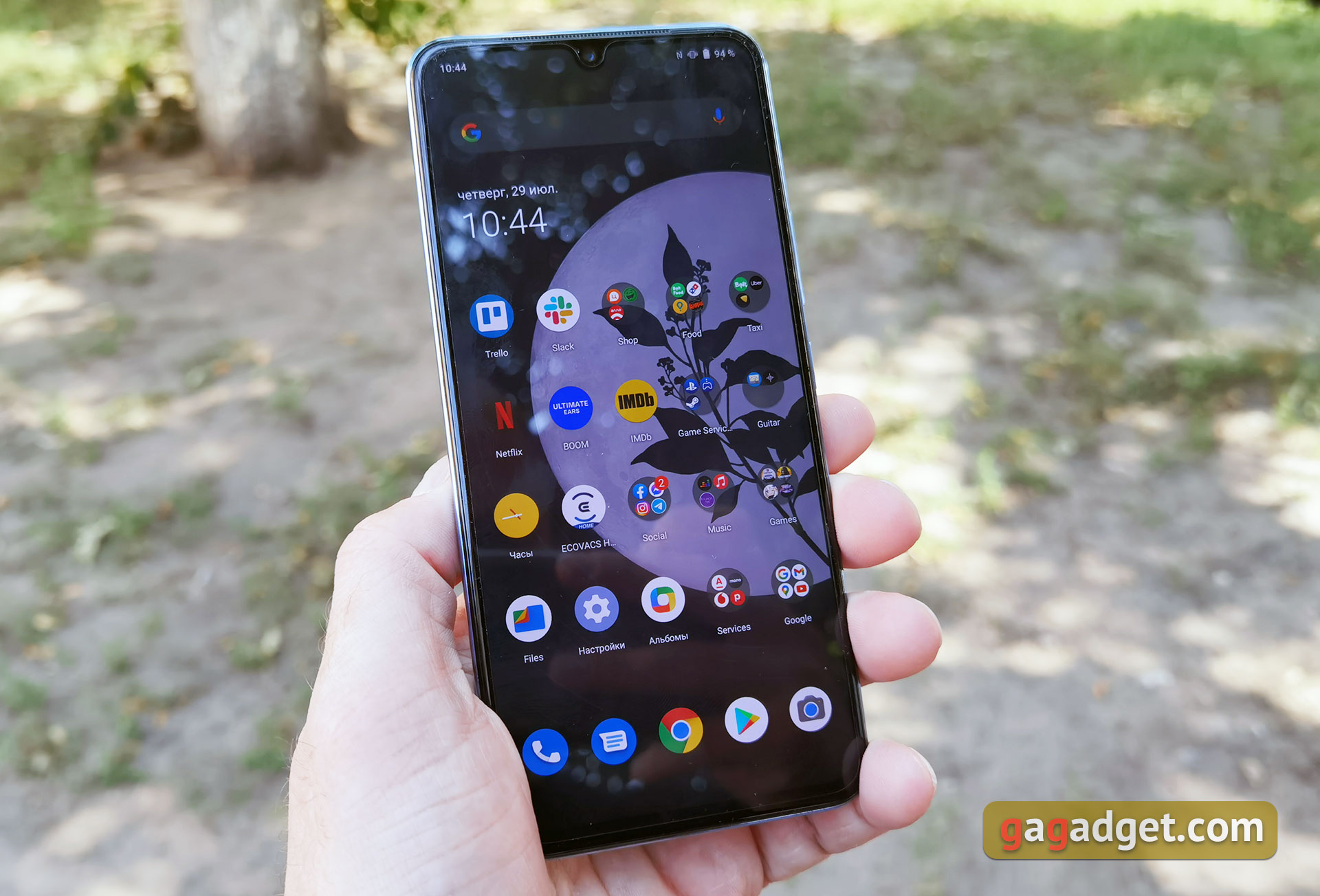
vivo V21 is a very good smartphone in the mid-price segment, with the main focus on selfies and videos. The smartphone has got an advanced front camera with optical stabilization and backlighting. It shoots really well in most of the cases. Apart from that, the vivo V21 has a very nice AMOLED screen with sufficient brightness and 90Hz refresh rate. The hardware is quite enough for smooth operation of the interface and any even the heaviest applications. Battery life is quite adequate, with the bonus of fast charging. All of this is packed into a convenient and lightweight package. The only significant problem with the smartphone is its price 14 000 UAH. In this price segment, the smartphone has a lot of strong competitors with more powerful processors, support for stereo sound, as well as the presence of protection from dust and moisture. Up to A-brands, such as the Samsung Galaxy A72.
5 reasons to buy vivo V21:
- nice AMOLED screen with refresh rate of 90 Hz;
- excellent front camera and very good main camera;
- thin and light body;
- convenient and fast Funtouch 11 shell.
- fast charging.
2 reasons not to buy vivo V21:
- there are strong competitors in this price range;
- no moisture protection and stereo sound.
Quick link:
- What's in the package?
- What does the vivo V21 look like?
- How good is the screen?
- What are the unlock options?
- What about performance, memory, sound and battery life?
- What about the interface?
- How good are the cameras?
- In a nutshell
What's in the package?
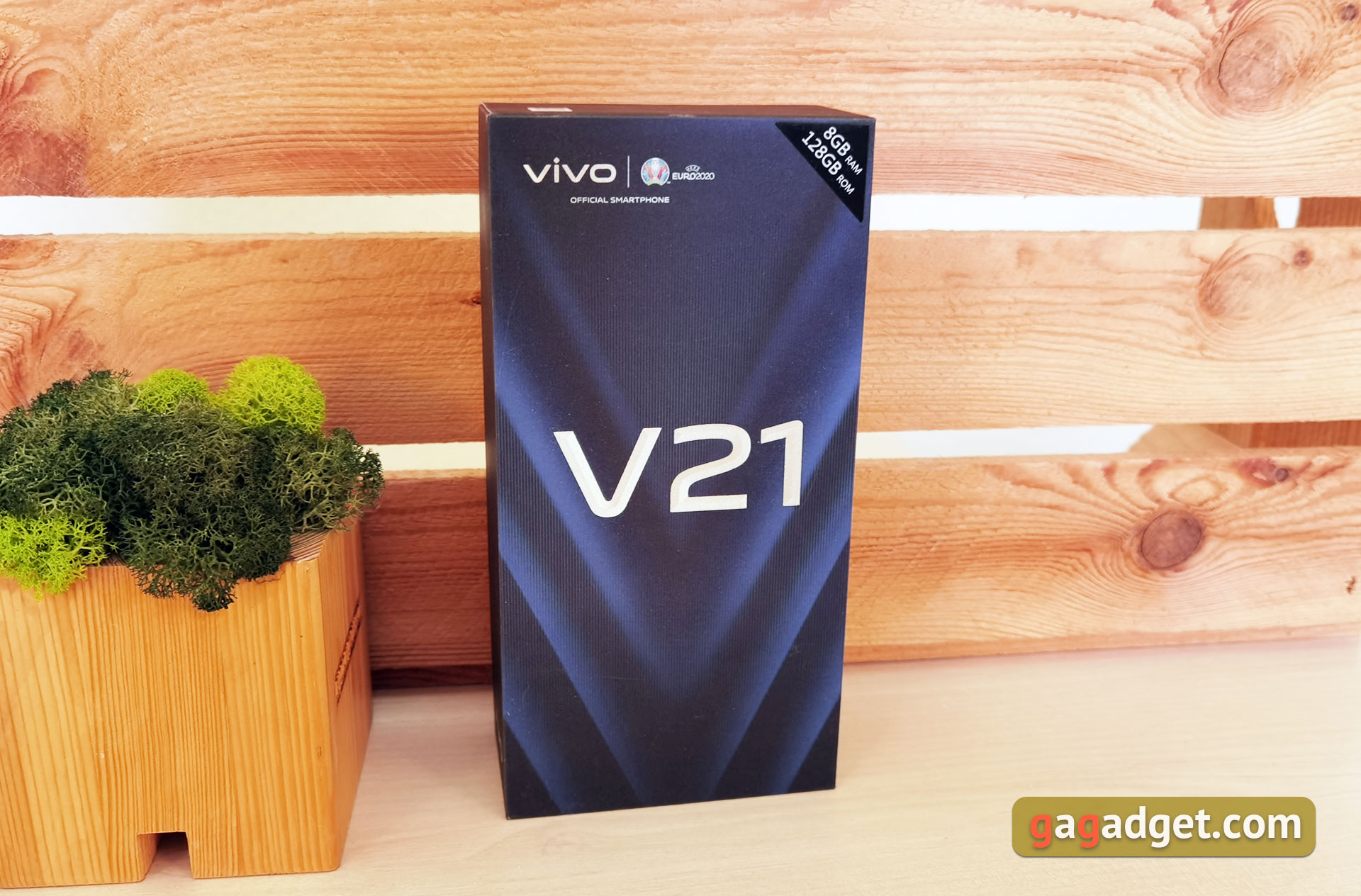
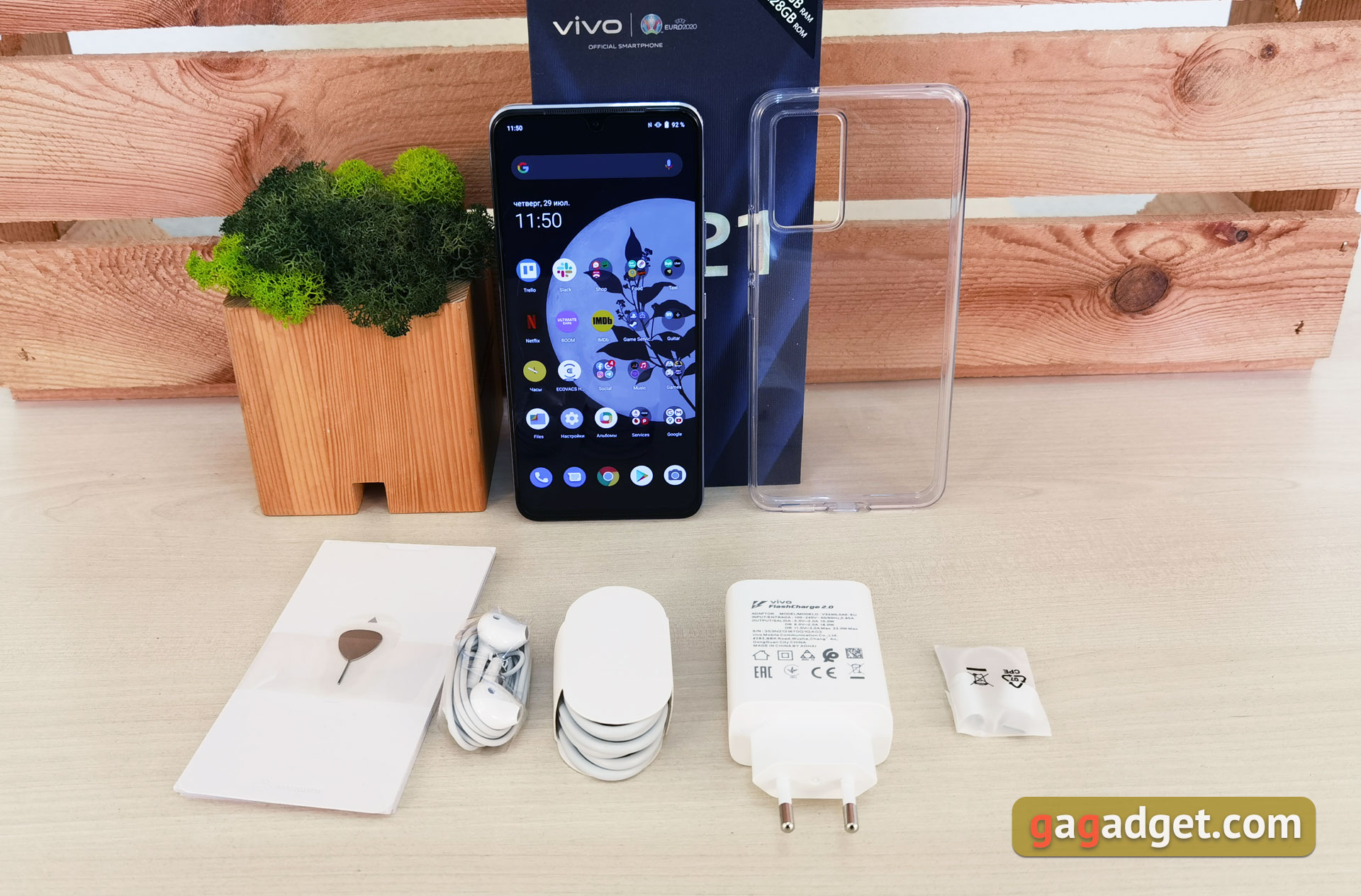


The vivo V21 is packaged in a dark blue box. Inside is the smartphone, a protective silicone bumper, a simple wired headset with a Type-C connector, an adapter from Type-C to 3.5mm jack to connect regular headphones (a nice bonus), a 33W charger vivo FlashCharge 2.0, a Type-C cable, a tray extractor tool and documentation. The protective film is immediately on the screen.
What does the vivo V21 look like?

Externally, the vivo V21 does not differ much from its predecessor vivo V20, exactly like a huge number of low-cost smartphones. Unlike most manufacturers, which already use mostly rather neat holes for the front camera, the vivo V21 still uses a drop-shaped cutout. It already looks a bit archaic, but it's a matter of taste. Perhaps someone will like such a solution. The rest of the front is almost standard: a large screen with thin bezels and a thin speaker slot at the top. To the standard set the company added two LEDs for taking self-portraits in low light.
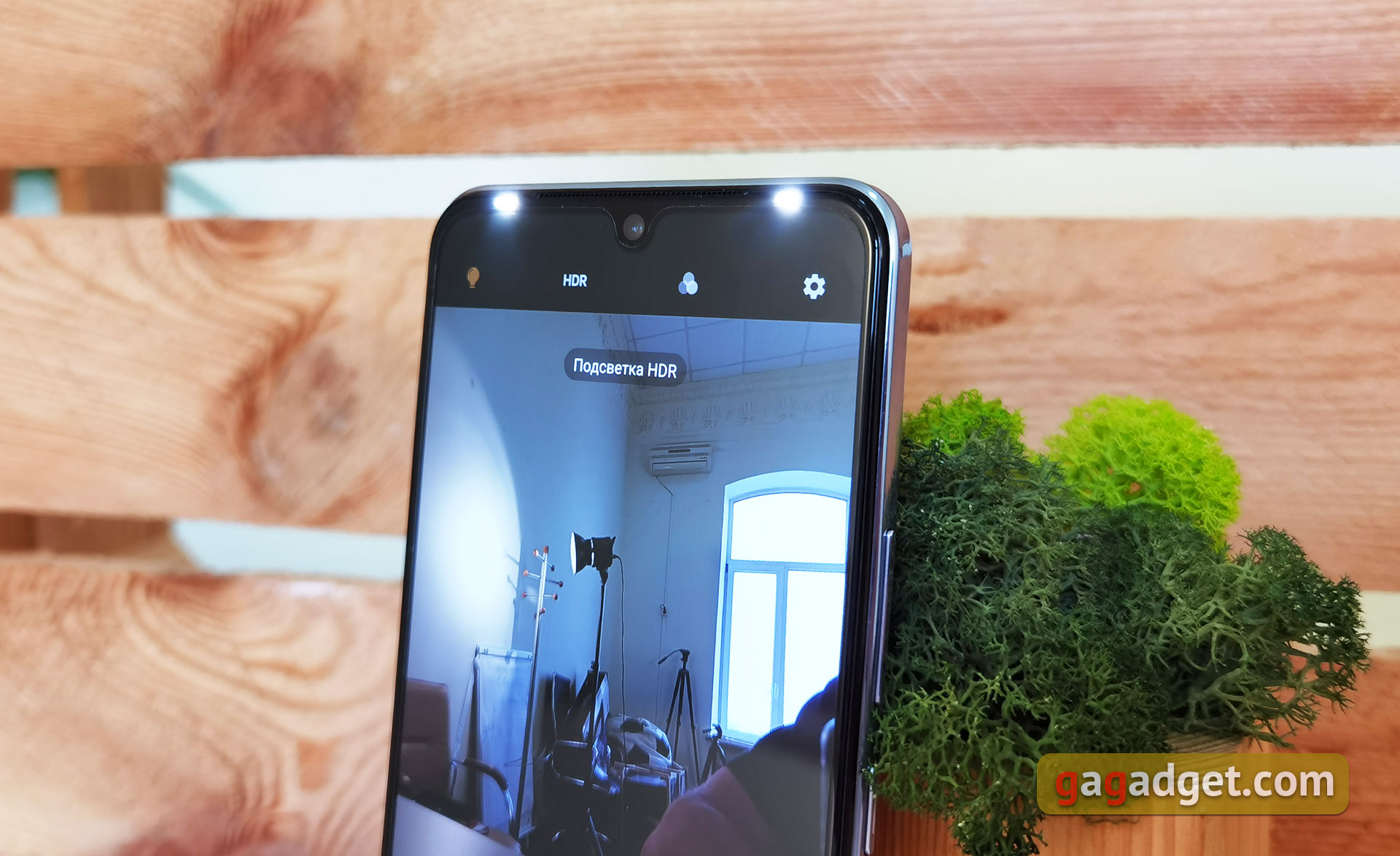
The overall shape of the smartphone decided to make a little more "angular" and all the side edges have a flat shape with minimal rounding. They are made of plastic with a glossy finish. It looks more interesting than the already familiar streamlined forms from all sides. The volume control and power buttons are located on the right side, where we are used to. The left side doesn't have any functional elements.
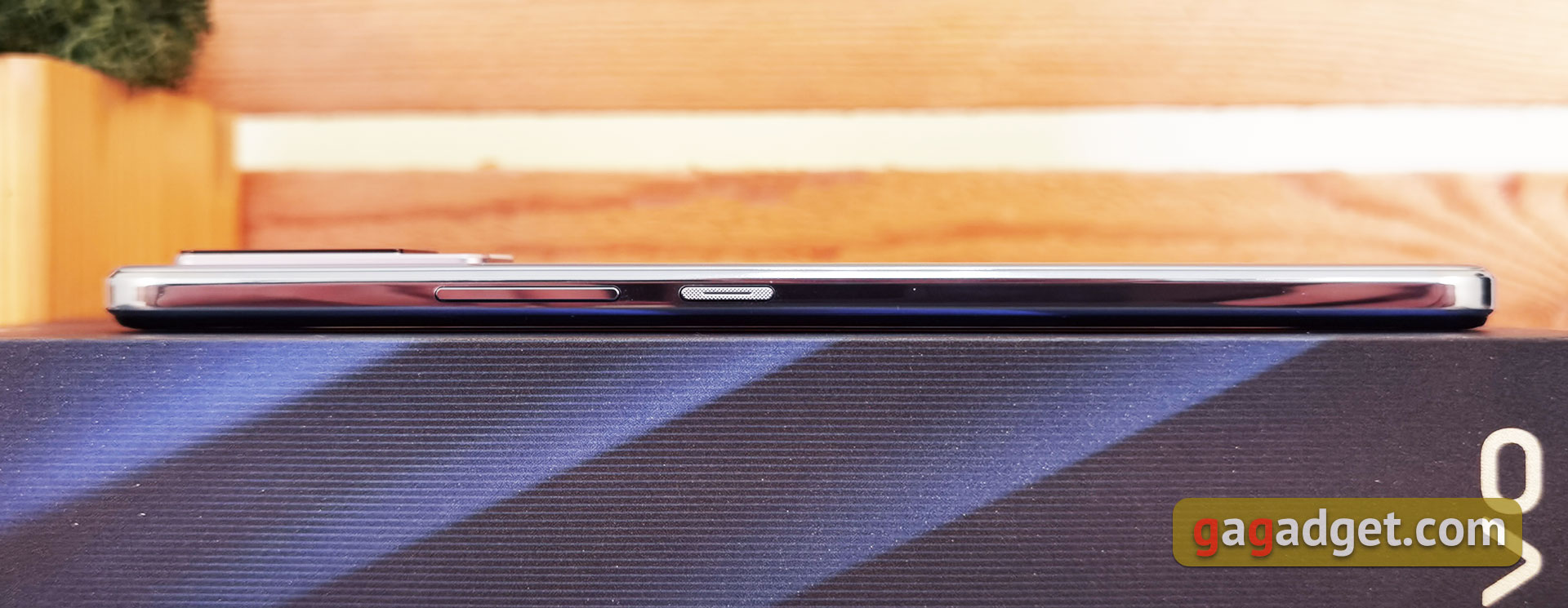
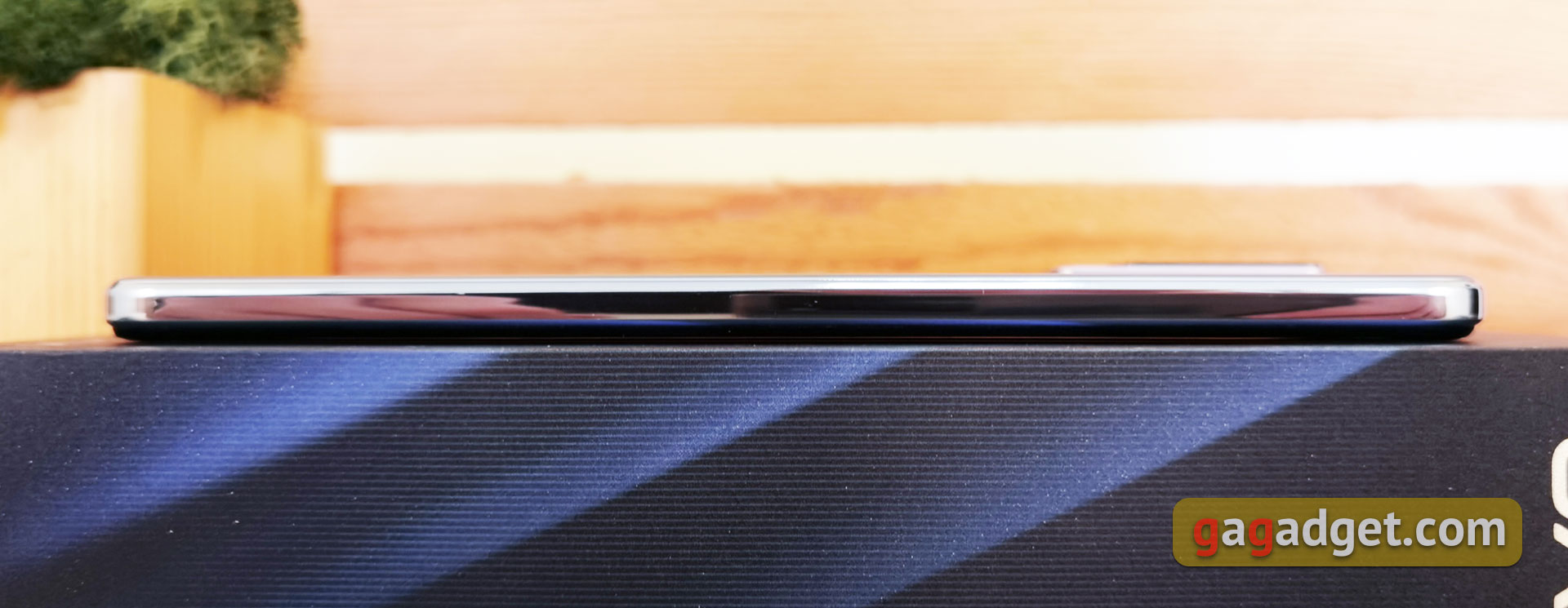


On the bottom edge there is an external speaker, microphone, USB Type-C connector and tray.
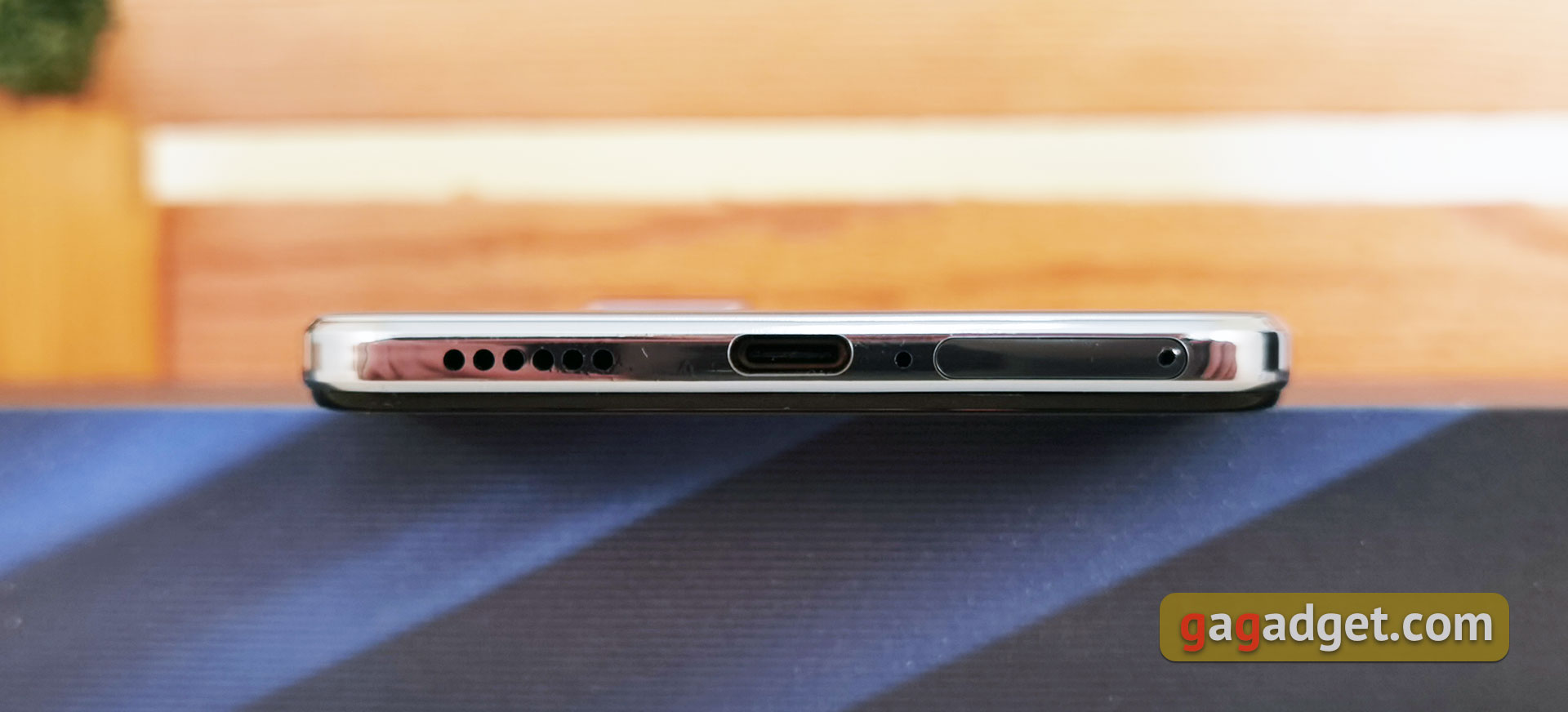
The tray is hybrid. A MicroSD card can be installed, but only instead of a second SIM card.
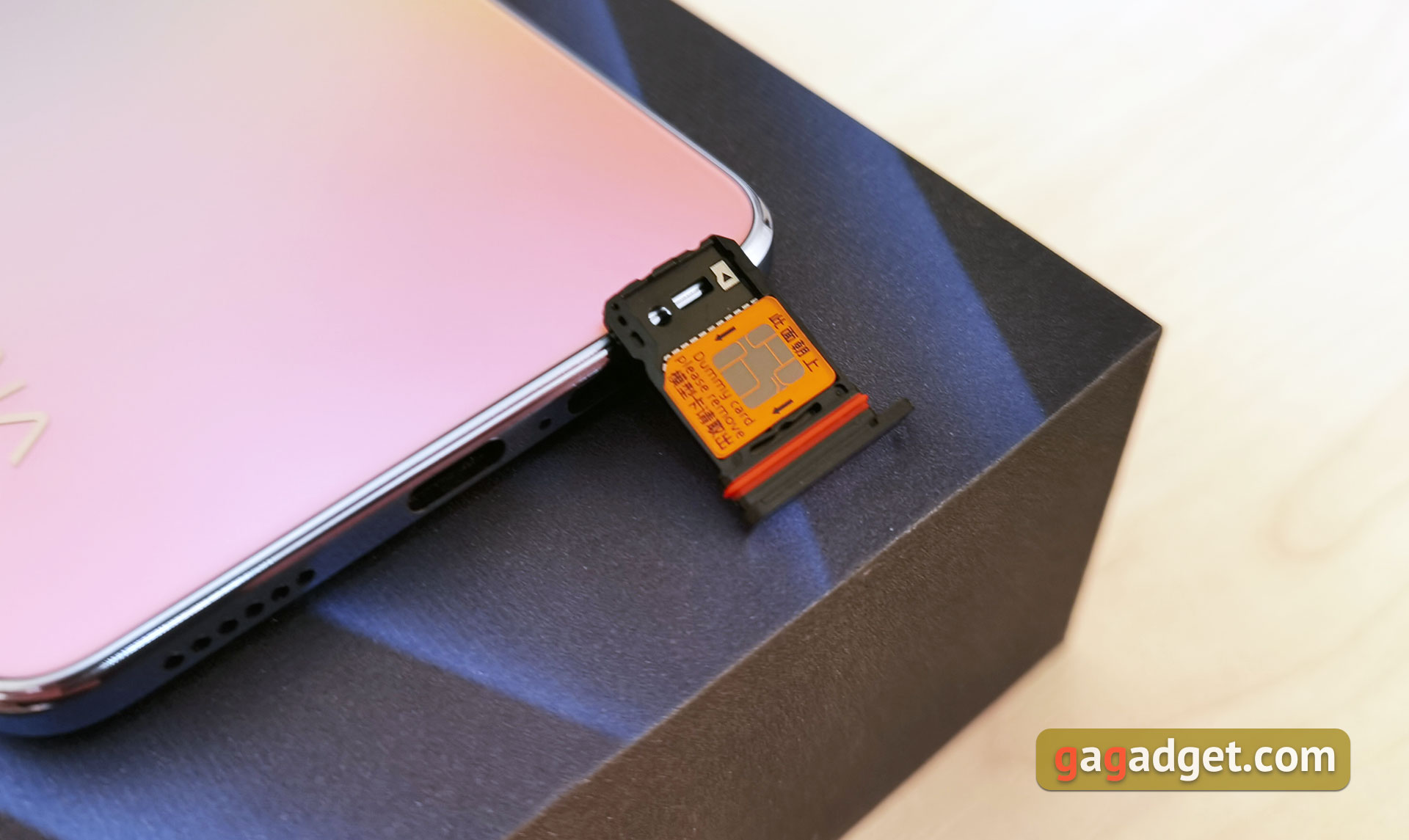
On the top end there is only an additional microphone.
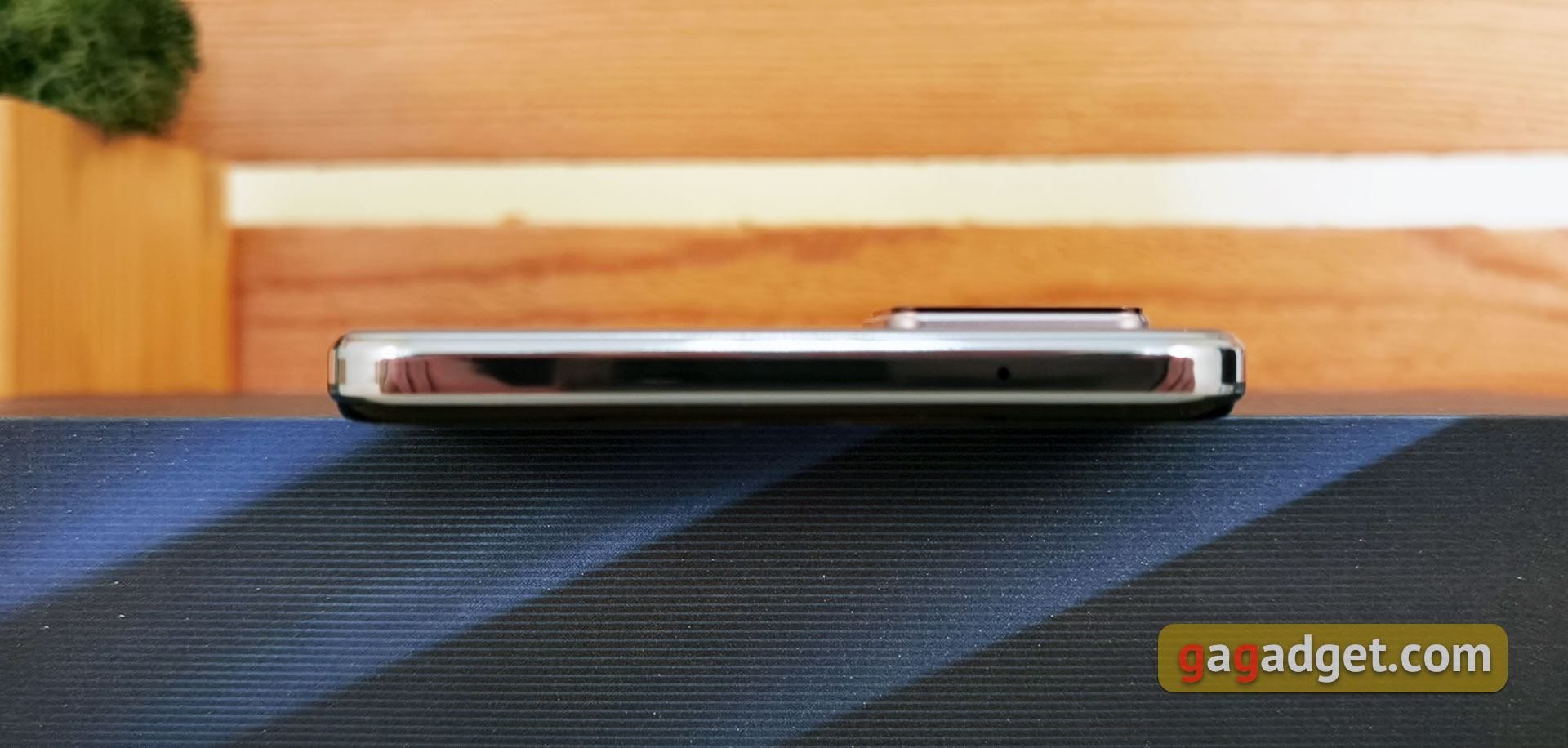
According to the official website, the back panel is made of glass with a matte finish. It is completely flat, without any curves. Thanks to the matte coating, fingerprints are not visible. The color "Sunset" came to us for review. In fact, it is a gradient color that shimmers from orange to purple depending on the angle of light incidence. There is an even more conservative navy blue version.
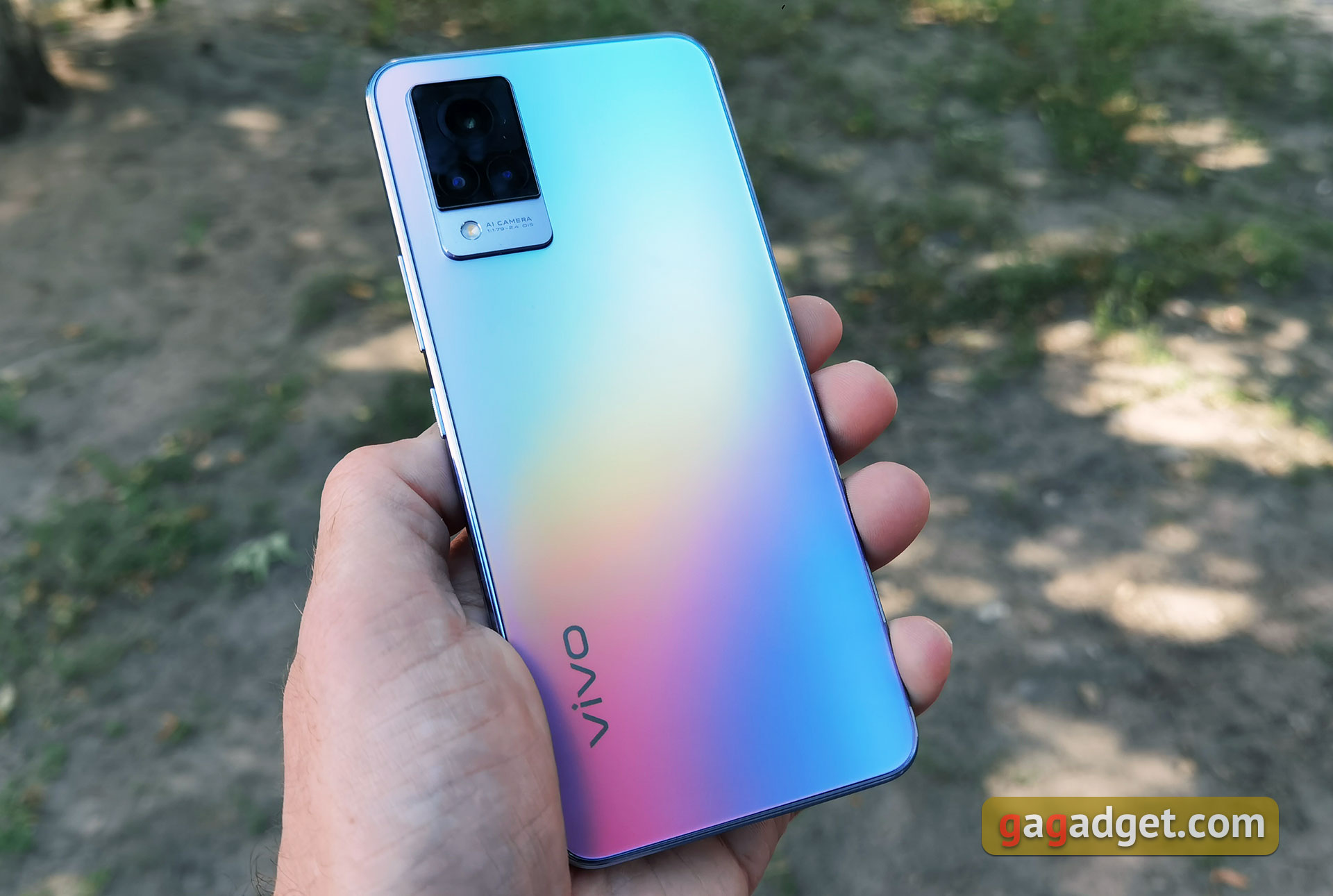
The main camera is made in a familiar style from the company's past smartphones: a black rectangle with three modules and a metal insert with an LED flash at the bottom. The camera is not too protruding over the surface of the smartphone. And in the protective bumper this protrusion is not felt at all.
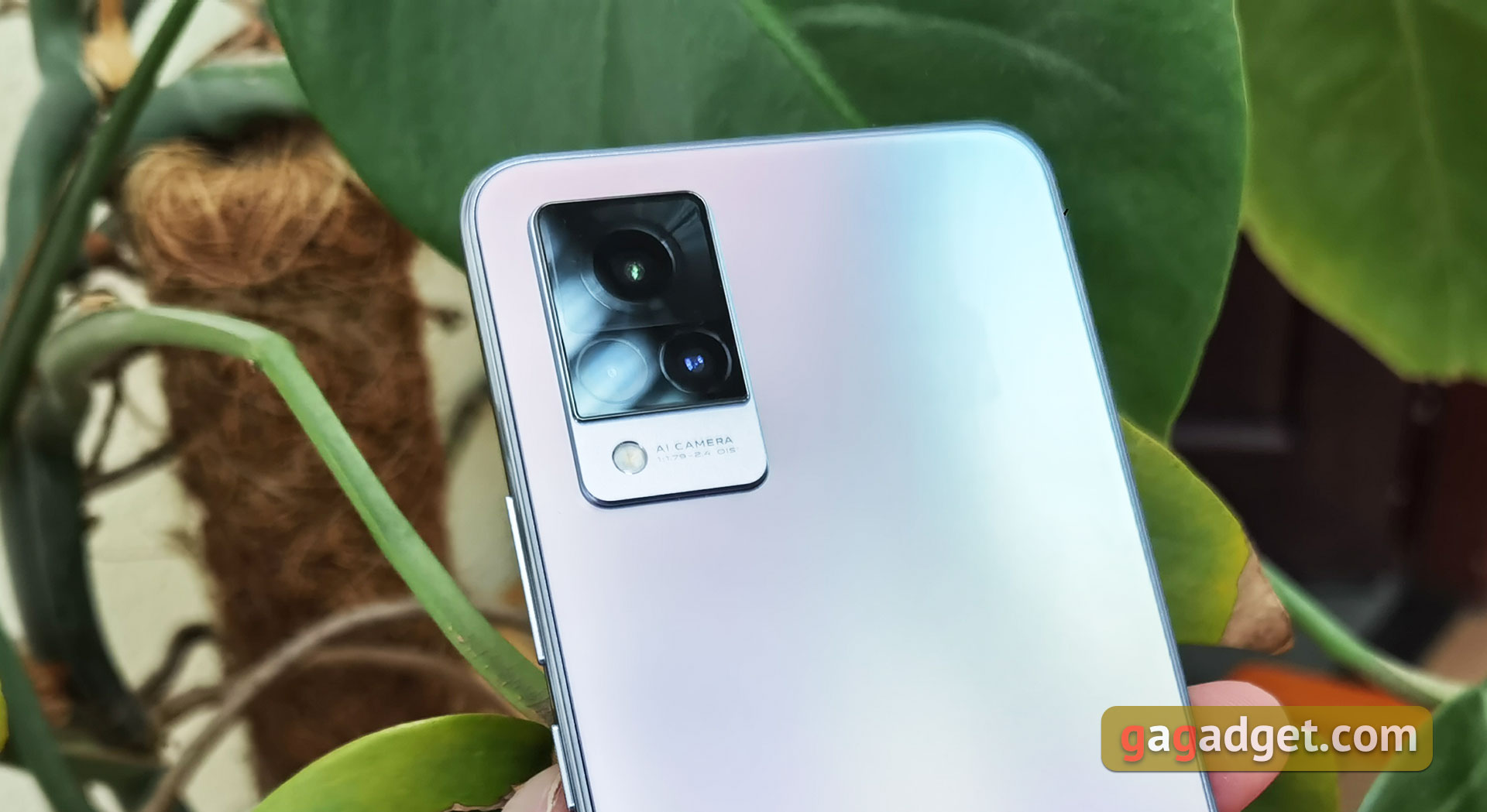
vivo V21 is thin and quite light: 159.7x73.9x7.29 mm, 176 g. It is quite comfortable to use. There is no protection against dust and water. The design is hardly catchy or original, but it has its own audience for sure.
How good is the screen?
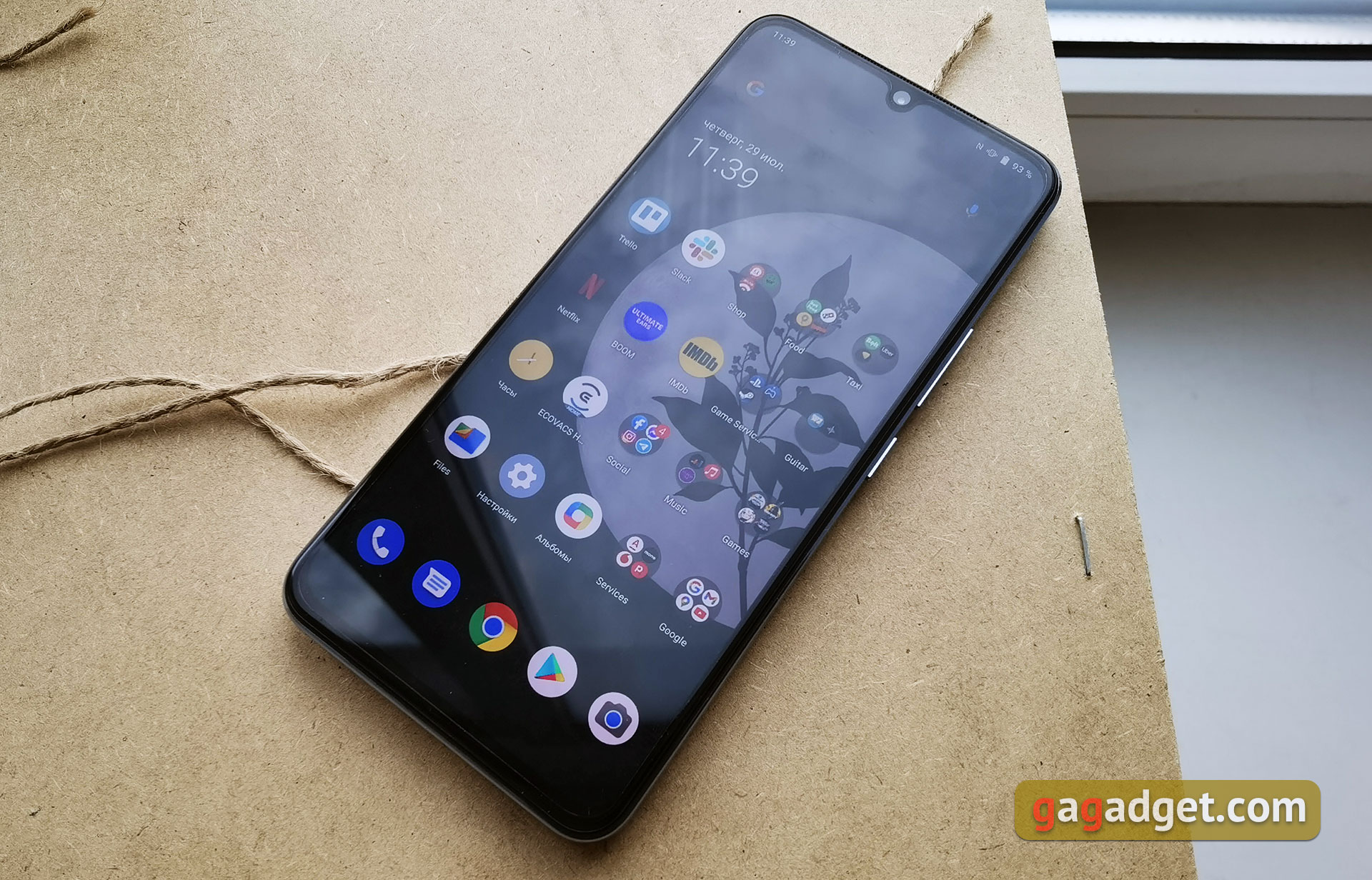
The vivo V21 uses a 6.44-inch AMOLED display with FullHD+ resolution, 2400x1080 (aspect ratio 20:9), with a pixel density of about 409 ppi. The main innovation compared to its predecessor vivo V20 is the 90Hz refresh rate. This can not but please: the interface, lists, news feeds look smooth. In terms of picture quality, the screen is also good, and the brightness is enough for comfortable work in bright sunlight.
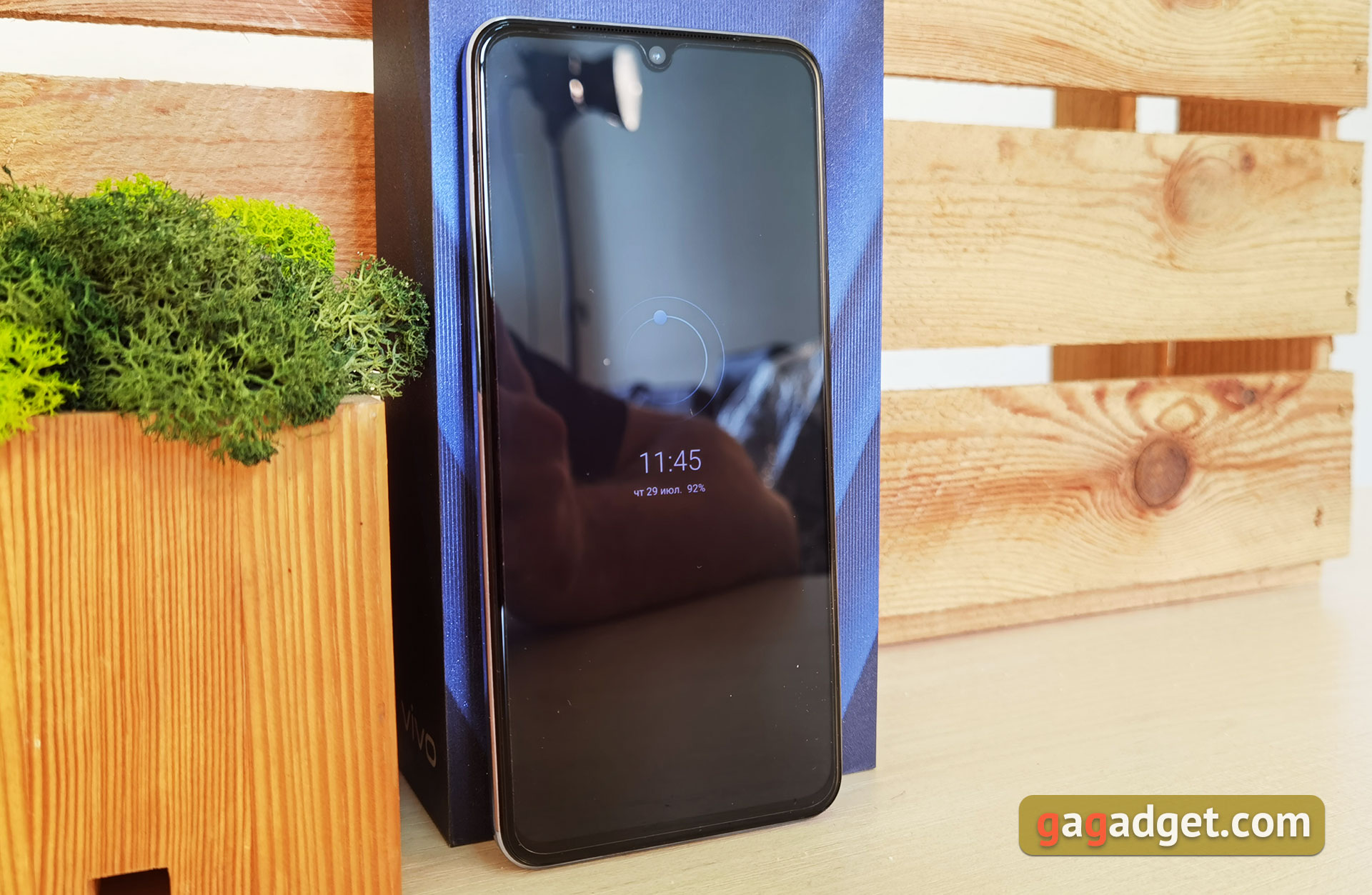
Of features and settings there is Always on Display, dark theme interface, vision protection mode with the ability to automatically activate on a schedule, setting the font size. There are three color display modes: "standard", "normal" and "bright", there is a possibility of manual color temperature adjustment. There is no DC Dimming function to reduce flicker.









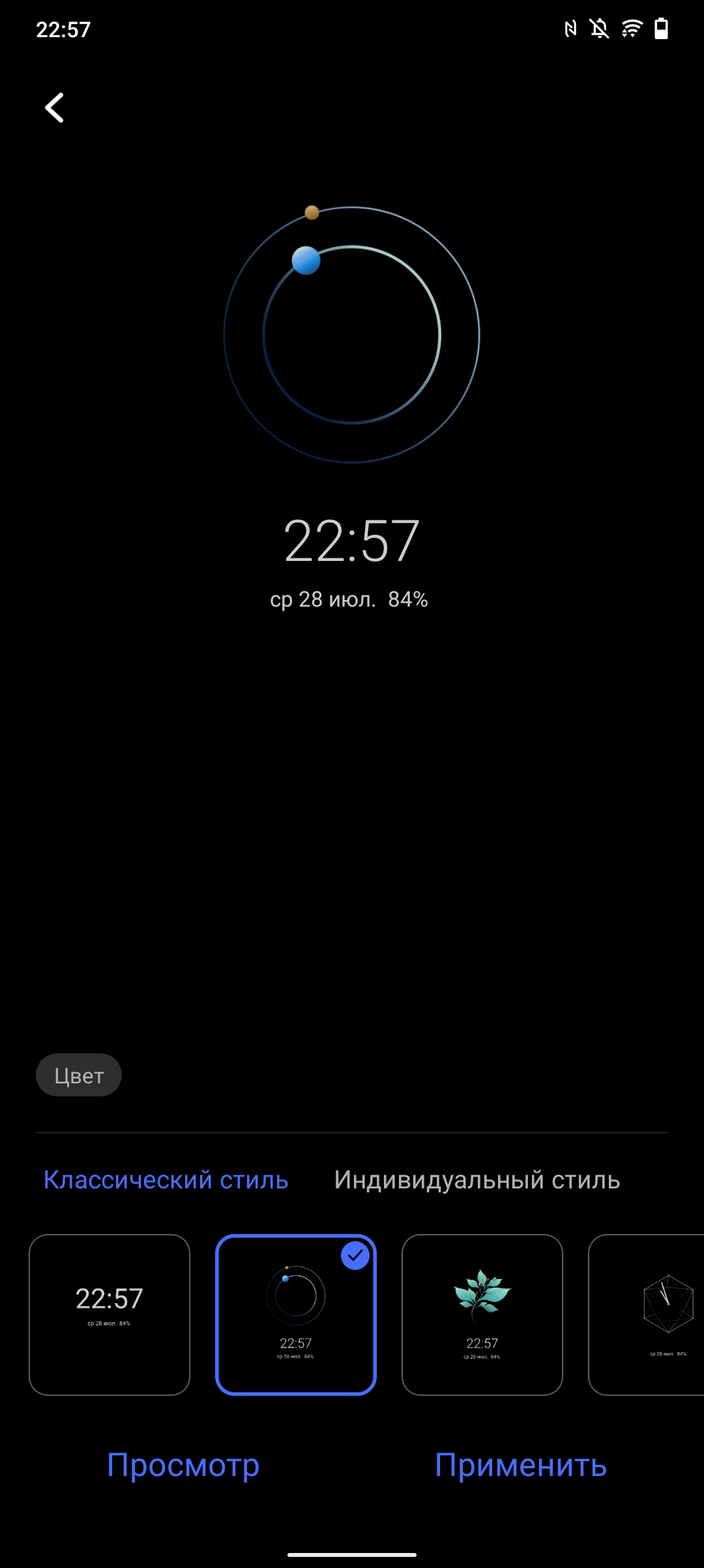
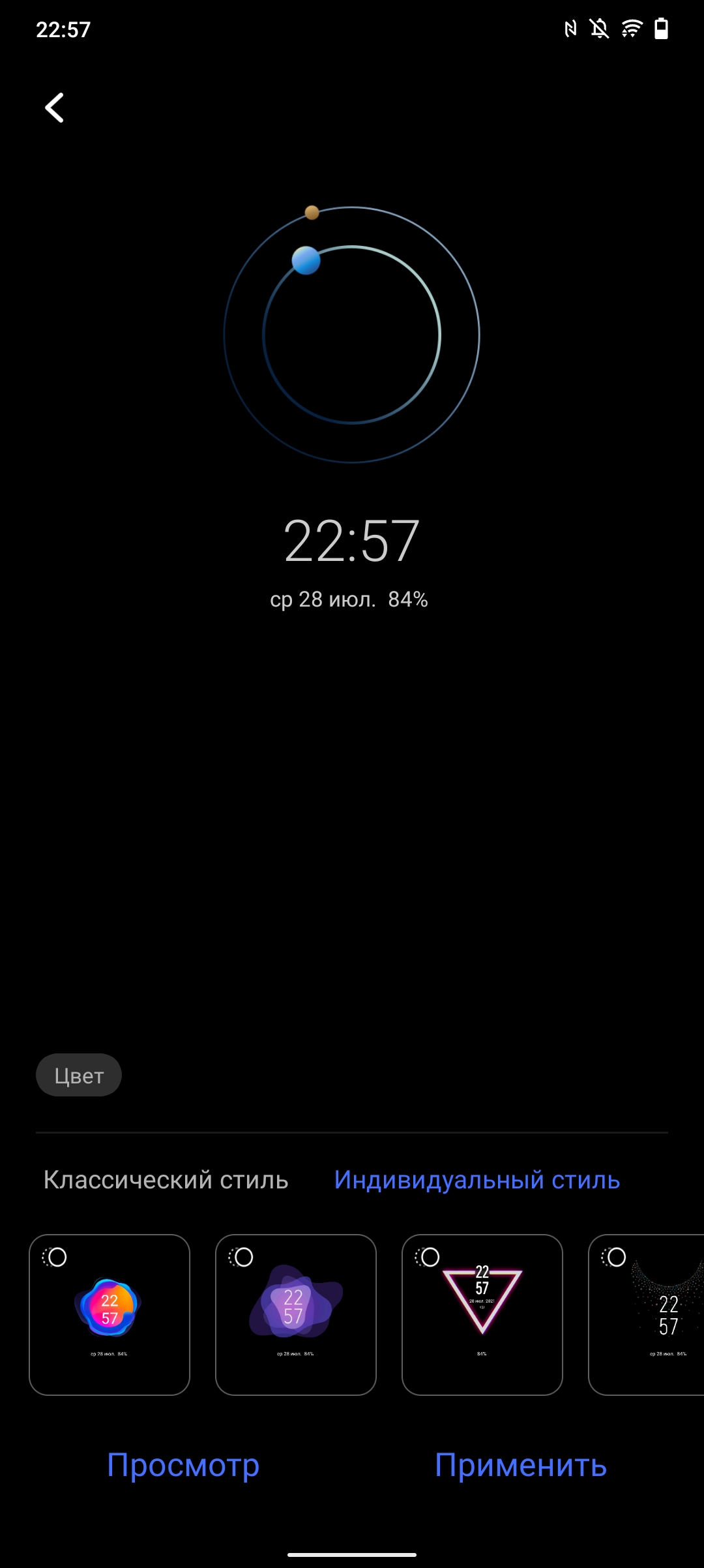











In "Standard" mode, the maximum brightness was 432.087 cd/m², slightly higher than what the vivo V20 had. The color gamut is considerably wider than sRGB, but the color reproduction goes noticeably into colder shades: the color temperature tends to 10000K at the benchmark 6500K. Fortunately, there is a manual color temperature adjustment.
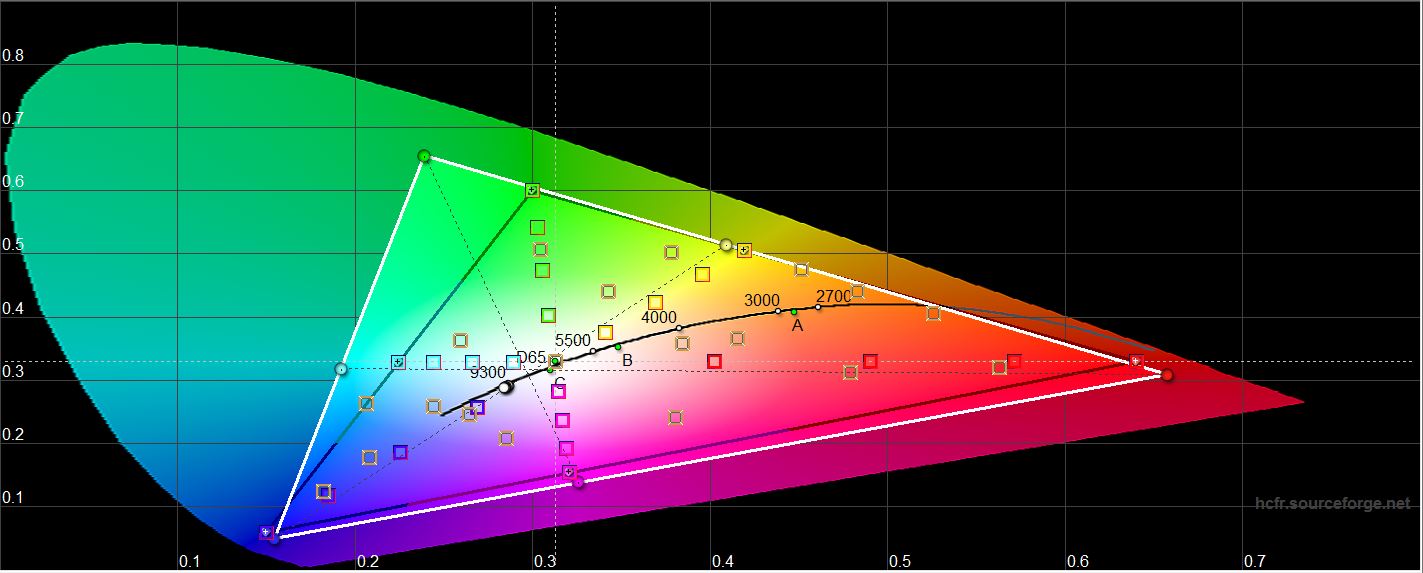
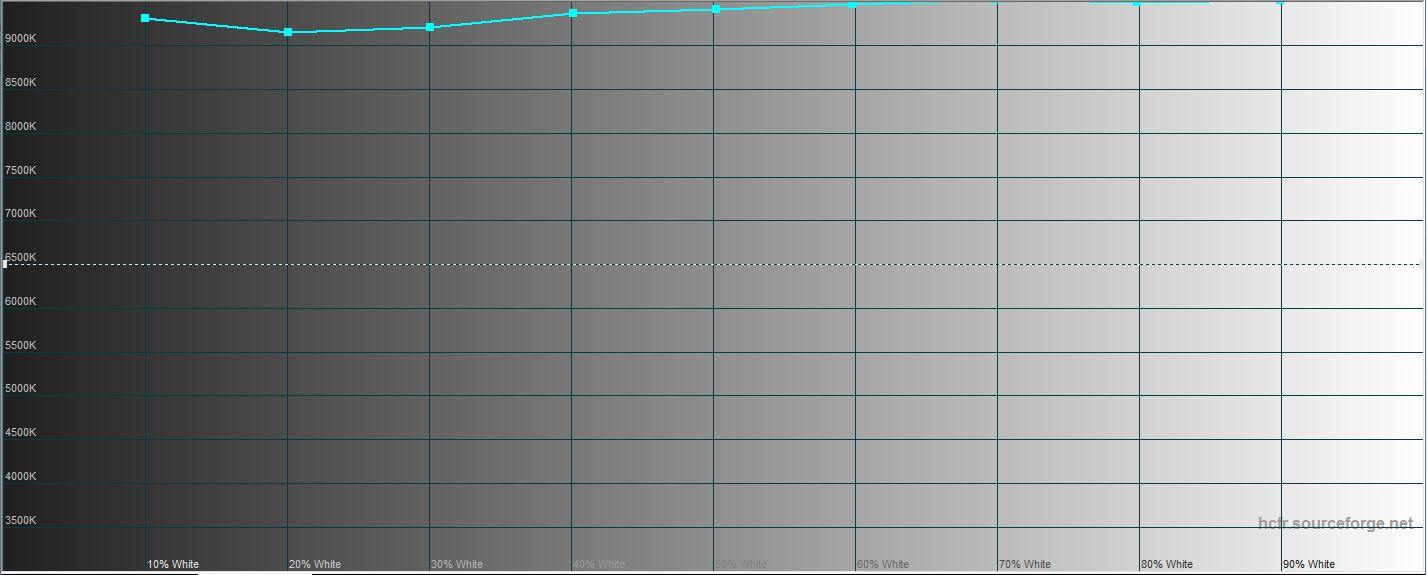
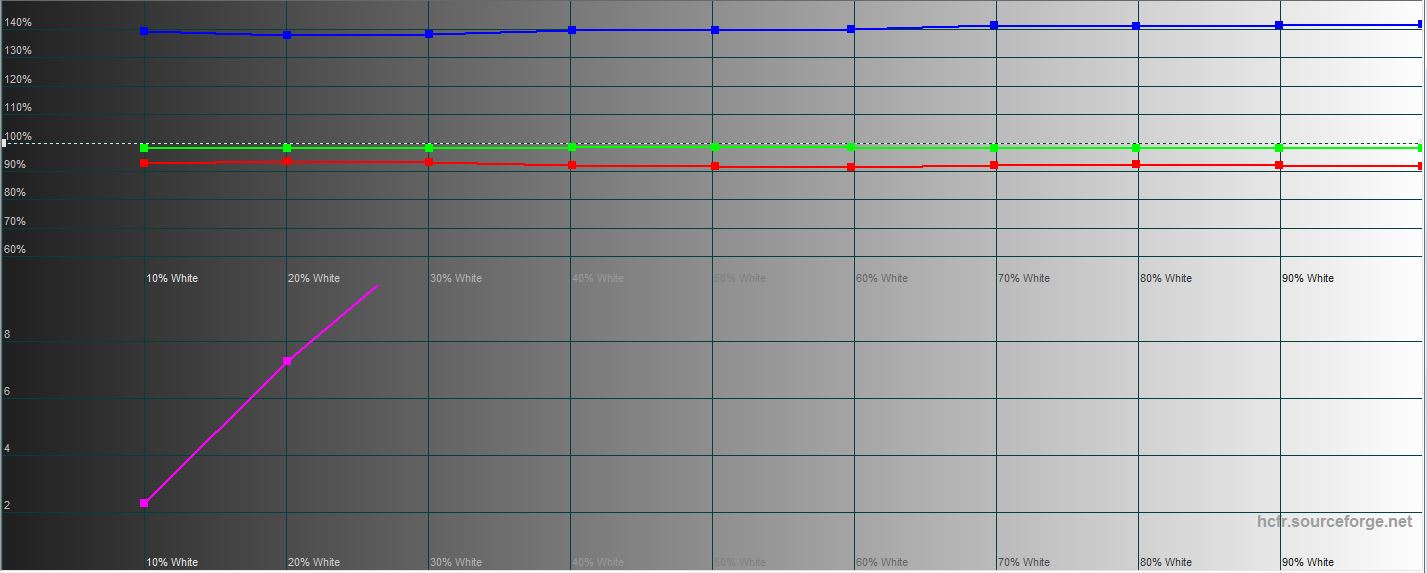
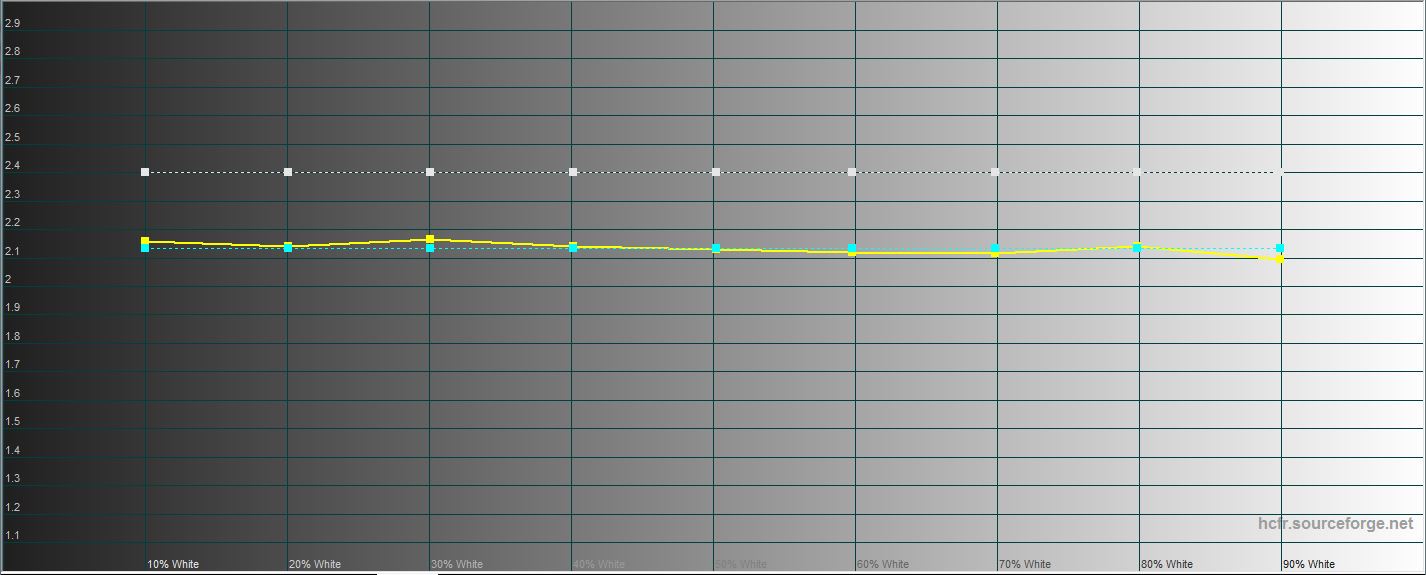






In "Professional" mode the color gamut is close to sRGB, and the picture is closer to natural color reproduction. There is a bias towards cooler shades, but very slight. The maximum brightness is slightly lower: 417.052 cd/m².
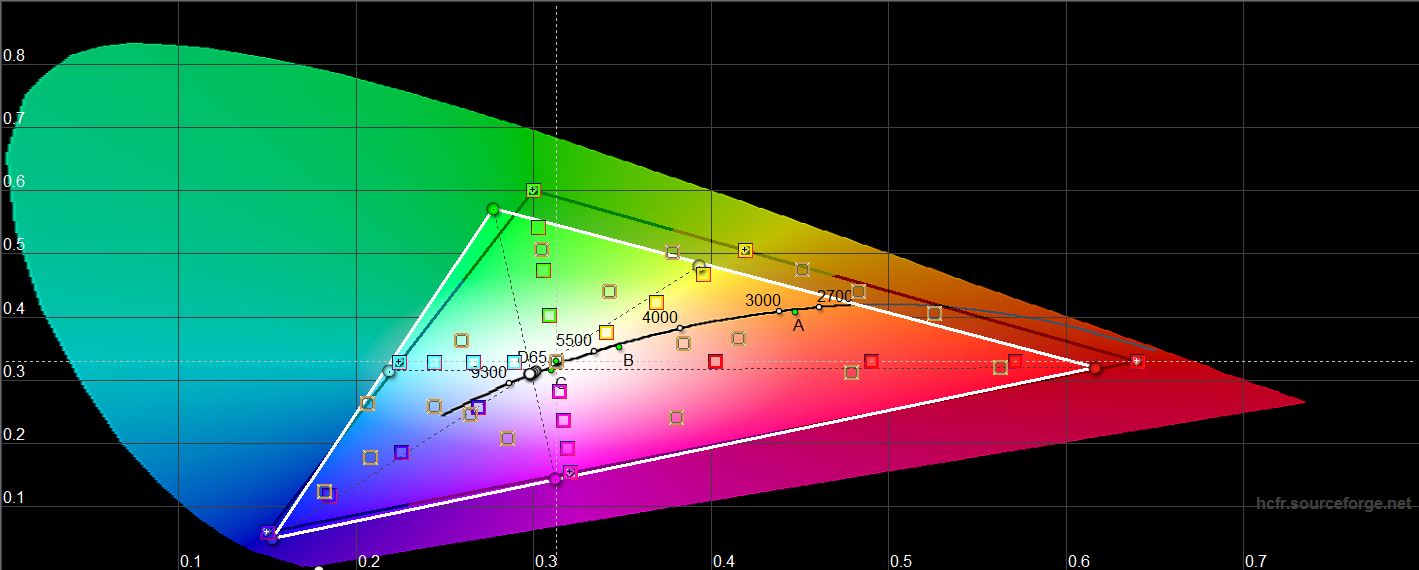
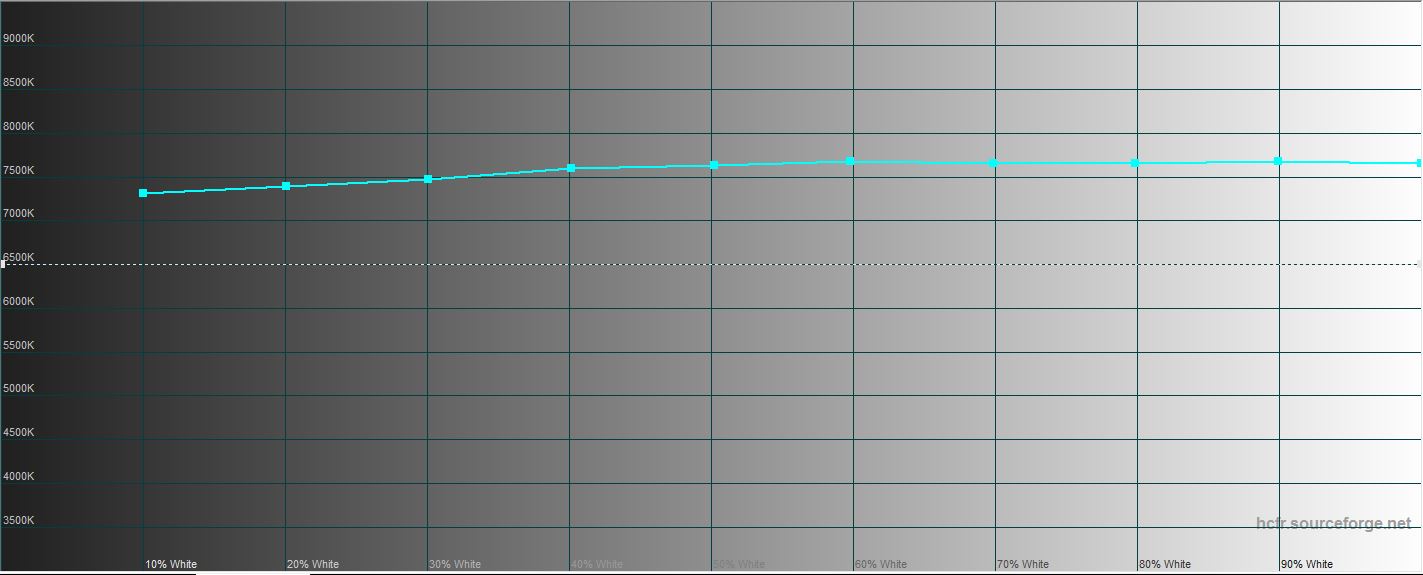

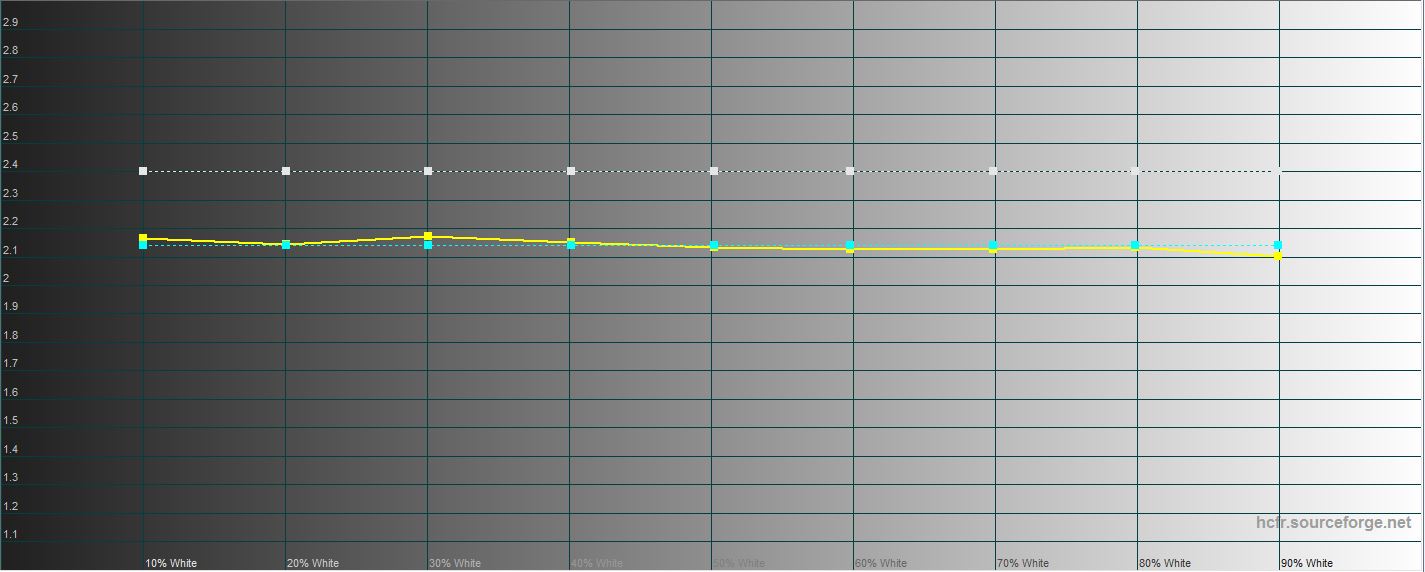






In "Bright" mode all figures are almost the same as "Standard", maximum brightness is 432.627 cd/m².
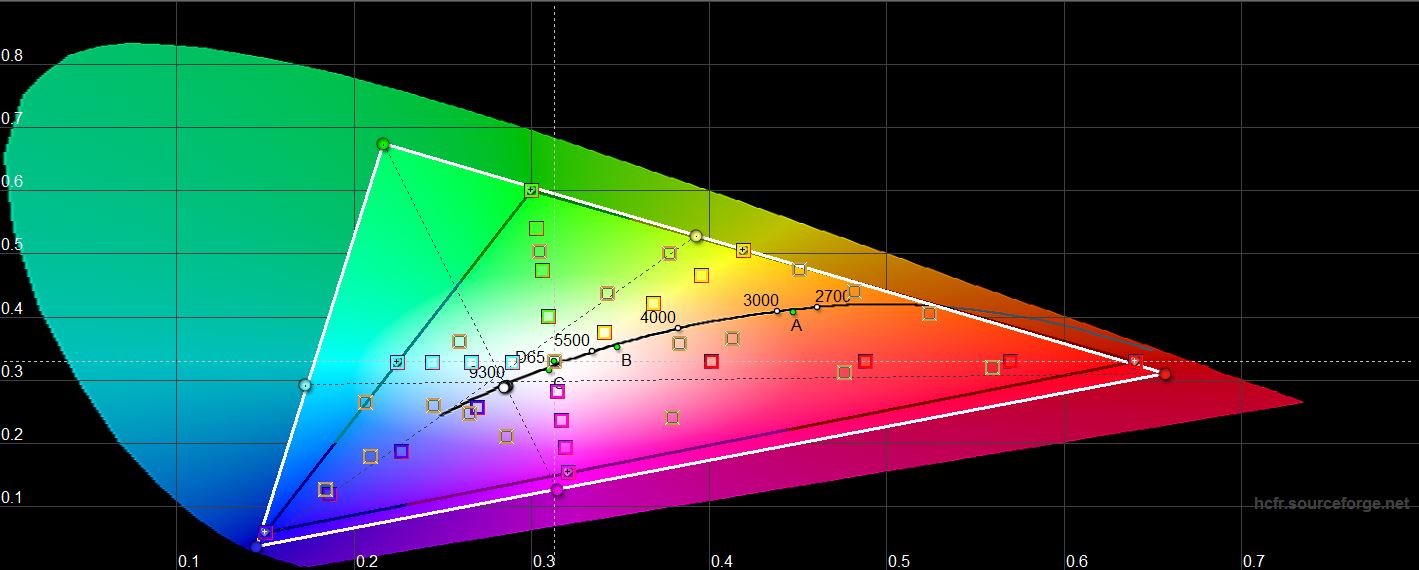
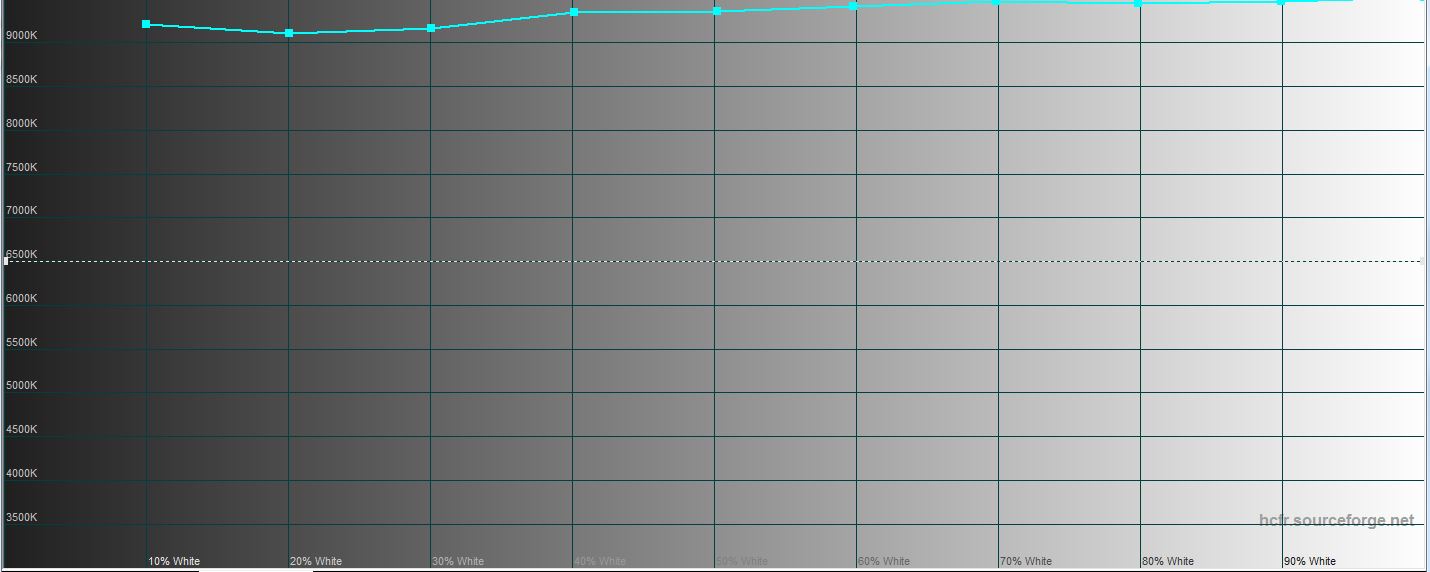
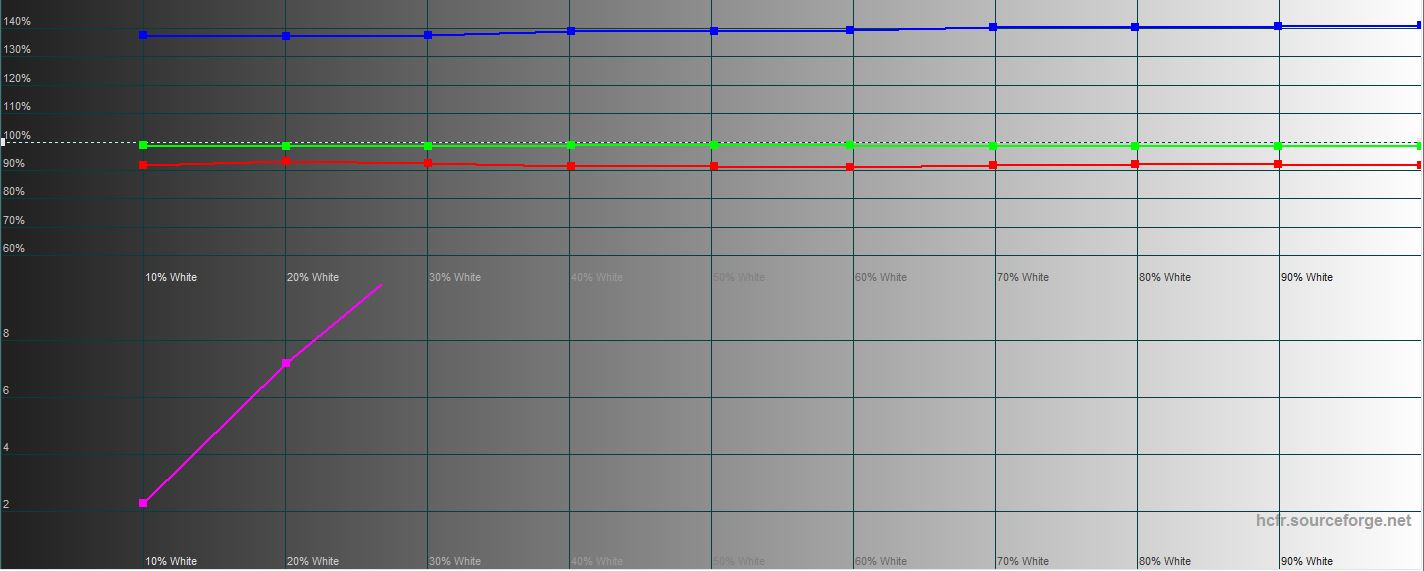
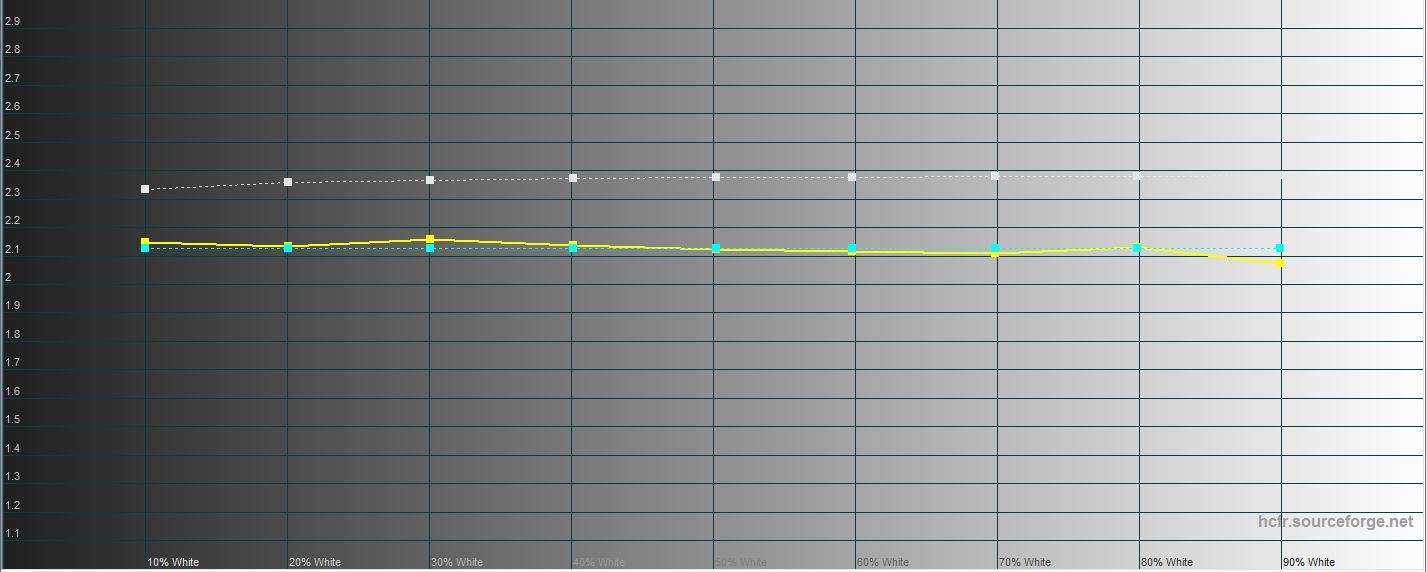






Comparison with other models:
| Device Name | White Field Brightness, cd/m2 |
Black Field Brightness, cd/m2 |
Contrast |
|---|---|---|---|
| vivo V21 | 432.627 | 0 | ∞ |
| vivo V20 | 415.542 | 0 | ∞ |
| vivo X50 | 464.169 | 0 | ∞ |
| OPPO Reno3 Pro | 511.439 | 0 | ∞ |
| Huawei P40 | 428.732 | 0 | ∞ |
| Samsung Galaxy A41 | 398.38 | 0 | ∞ |
| realme X2 Pro | 473.848 | 0 | ∞ |
What are the unlock methods?

The fingerprint scanner, like the vivo V20, sits below the screen. It is an optical option, the only downside of which (with adequate software) is that it is not friendly with wet fingers. In the case of the vivo V21 everything is fine, the scanner works accurately and is quite fast. The very little falls short of the capacitive variants, but the difference is not critical. Face recognition of the owner is also there, but it is implemented as standard, without additional sensors. So this method is not too safe, and in bad light the speed drops noticeably.
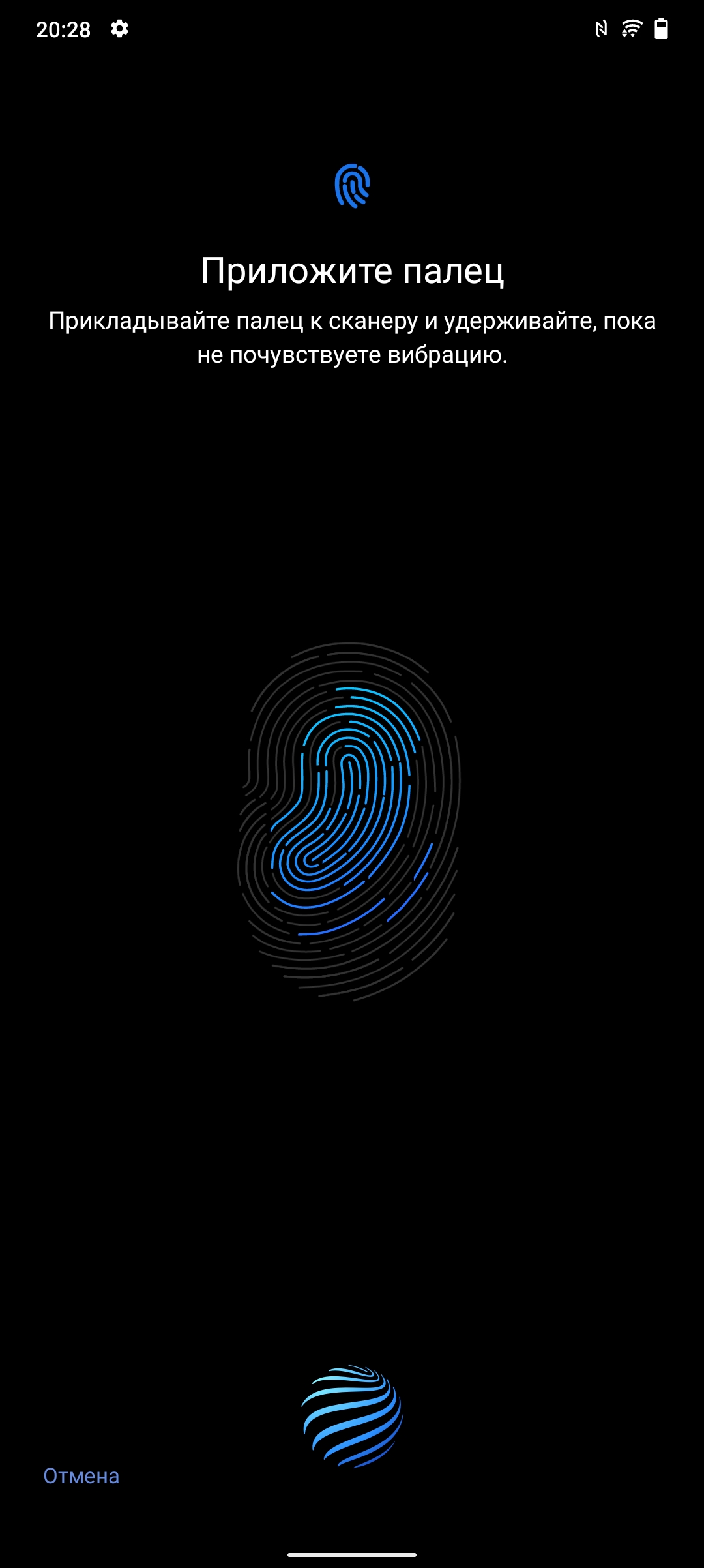




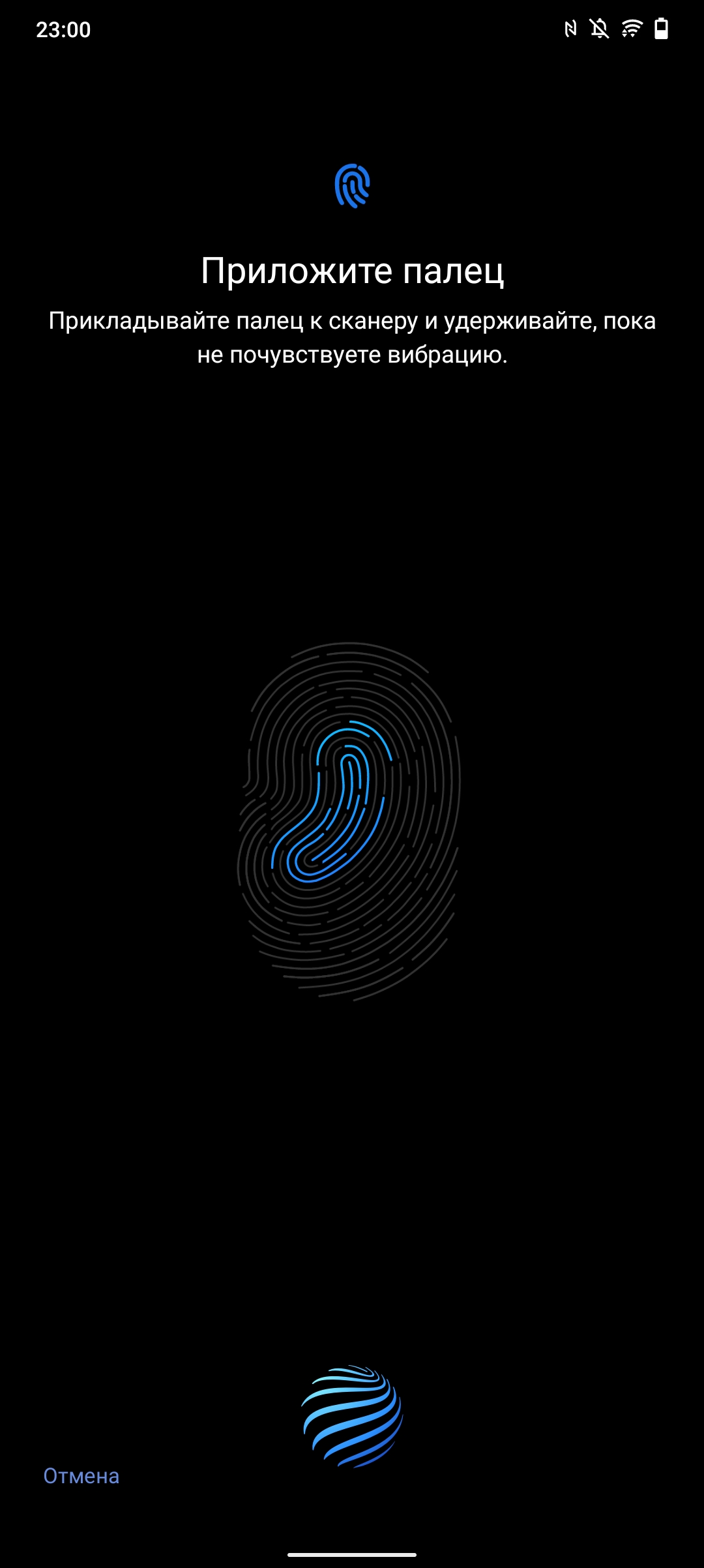












What about performance, memory, sound and battery life?
The vivo V20 used the familiar mid-range processor Qualcomm Snapdragon 720G. In the vivo V21, the company decided to switch to MediaTek and installed a Dimensity 800U processor in the smartphone. But is manufactured on 7-nanometer process technology and includes two performance ARM Cortex-A76 cores clocked up to 2.4 GHz and six power-efficient ARM Cortex-A55 cores clocked up to 2.0 GHz. The ARM Mali-G57 MC3 accelerator is responsible for the graphics. The RAM is 8GB LPDDR4x, the built-in memory is 128GB UFS 2.2. But with RAM there is an interesting point. The smartphone supports virtual RAM Expansion by allocating additional capacity from the internal drive. To be more specific, the vivo V21 allocates another 3 additional GB. All in all, this can come in handy when running a bunch of heavy applications at the same time. Judging by the results in benchmarks, the Dimensity 800U slightly outperforms the Snapdragon 720G, though the gap is quite small. On the whole, the performance is at the expected level for a mid-range smartphone.
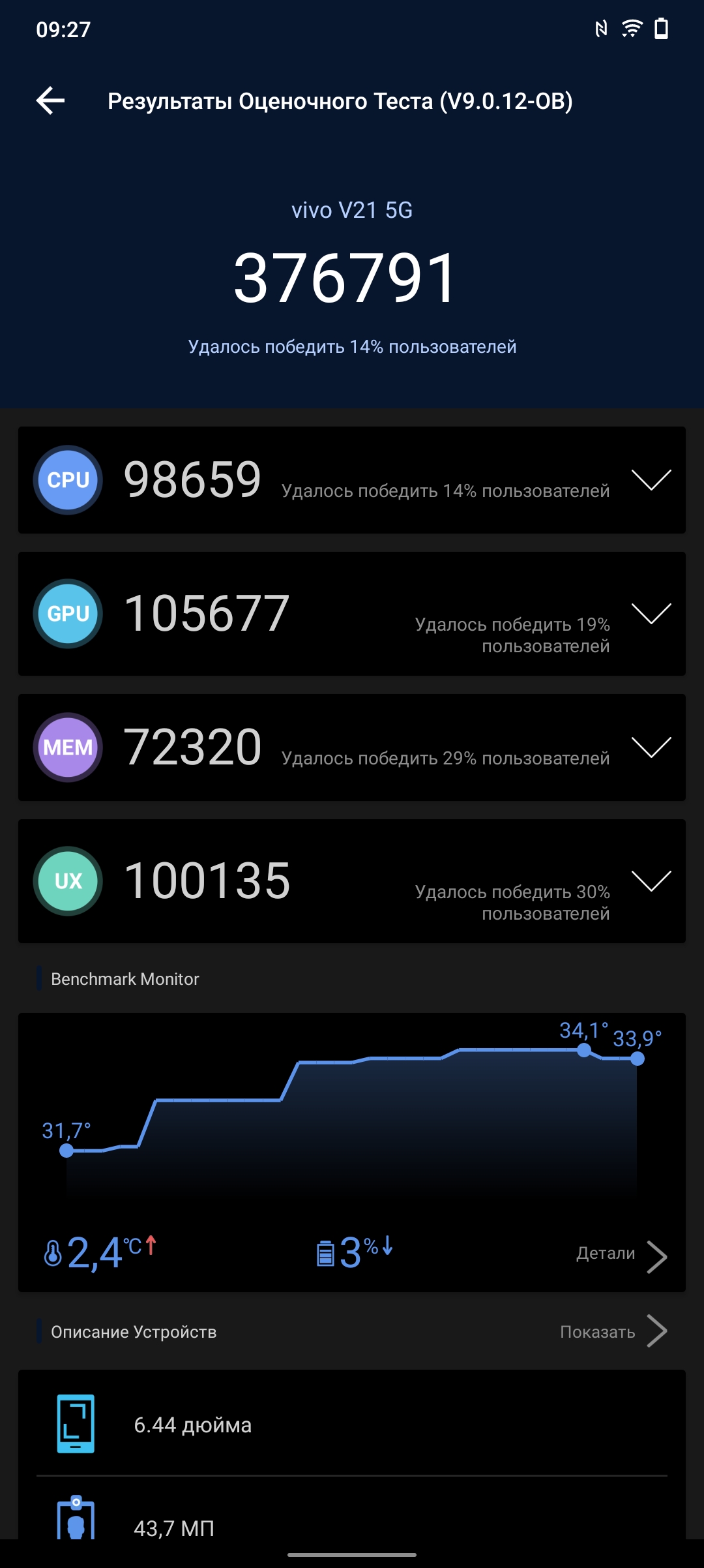

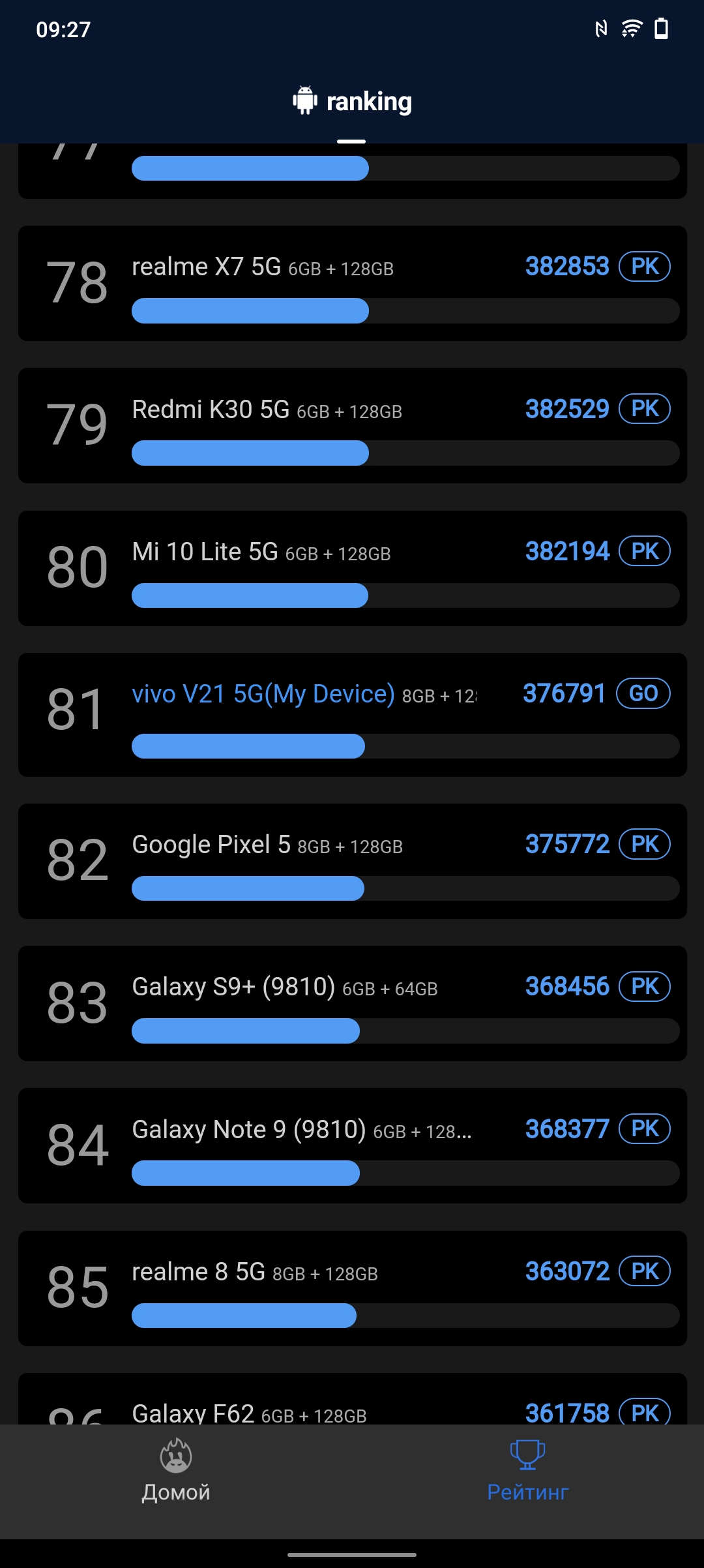
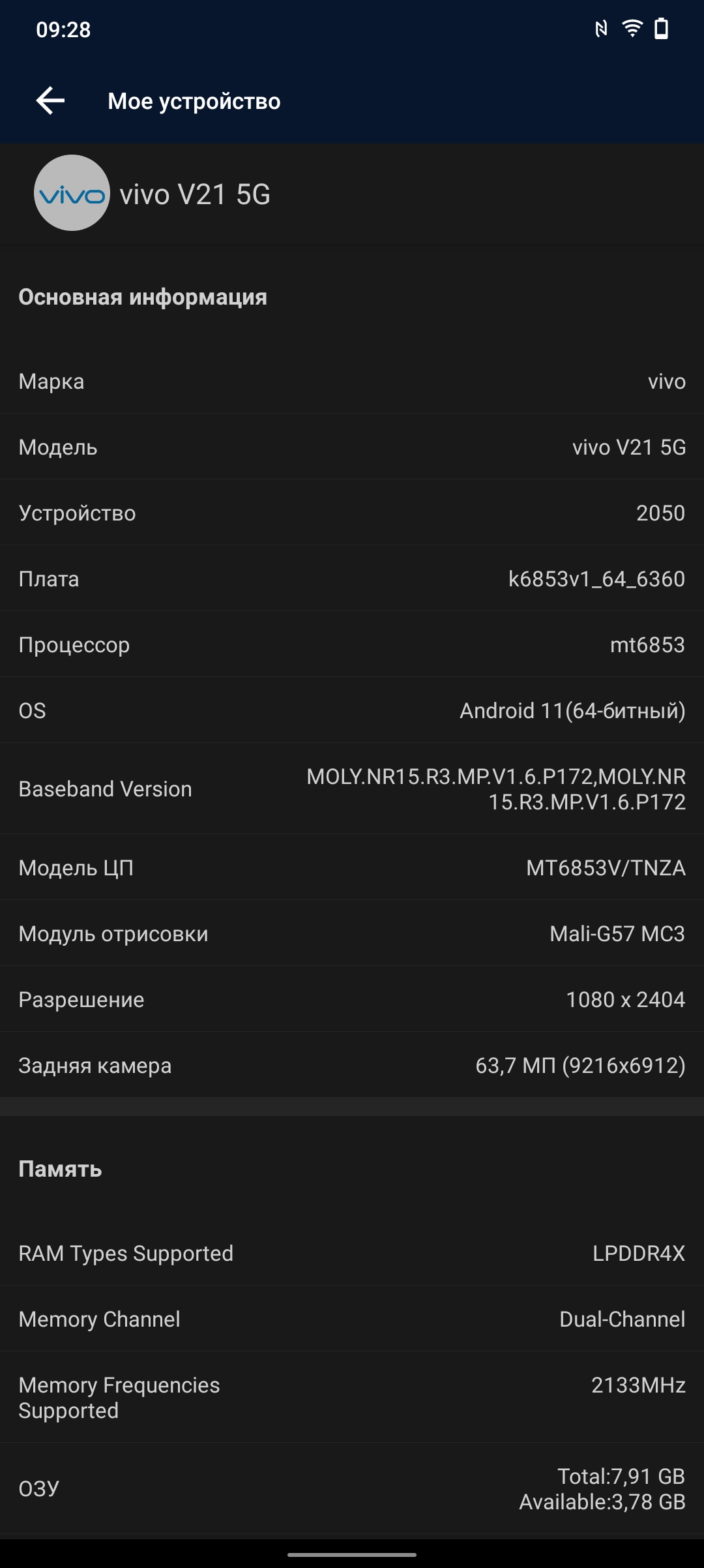
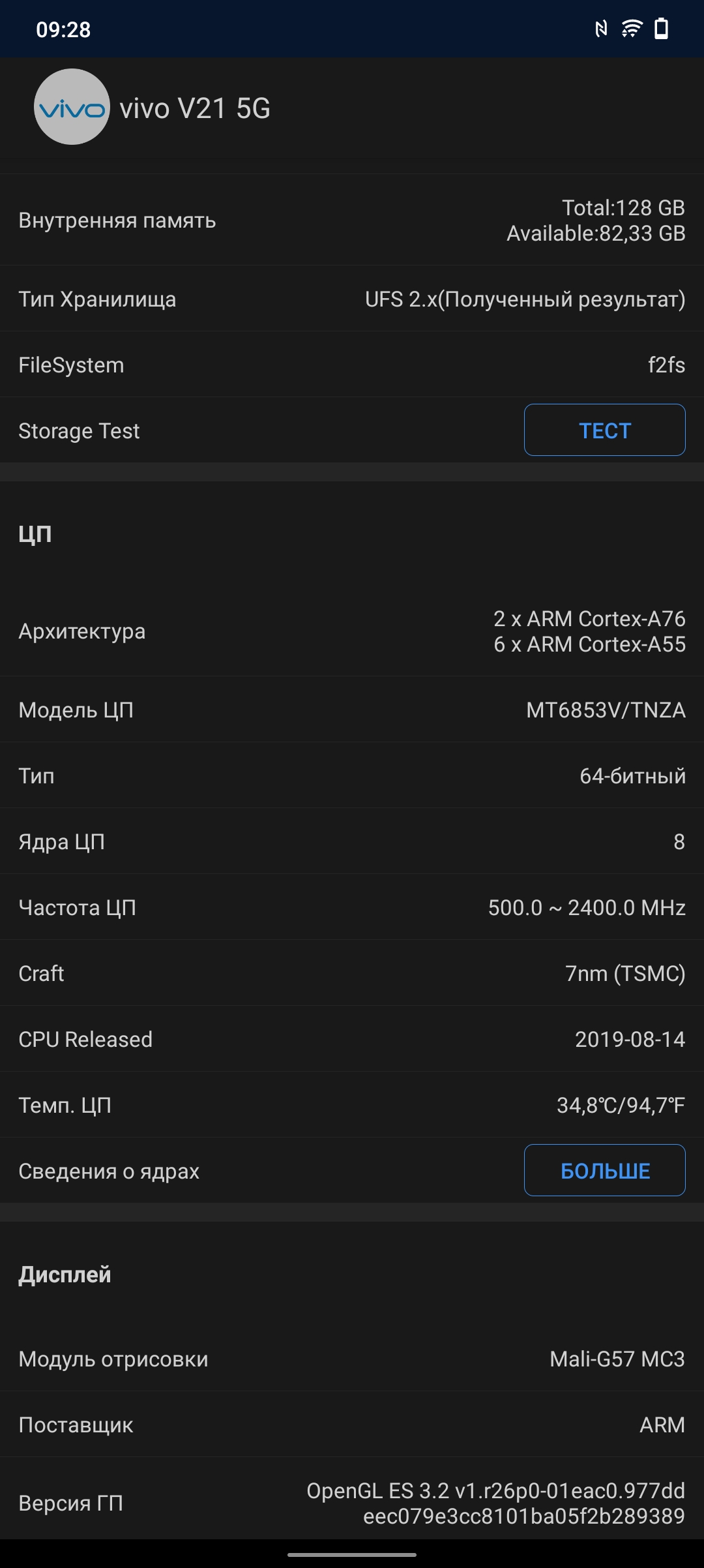
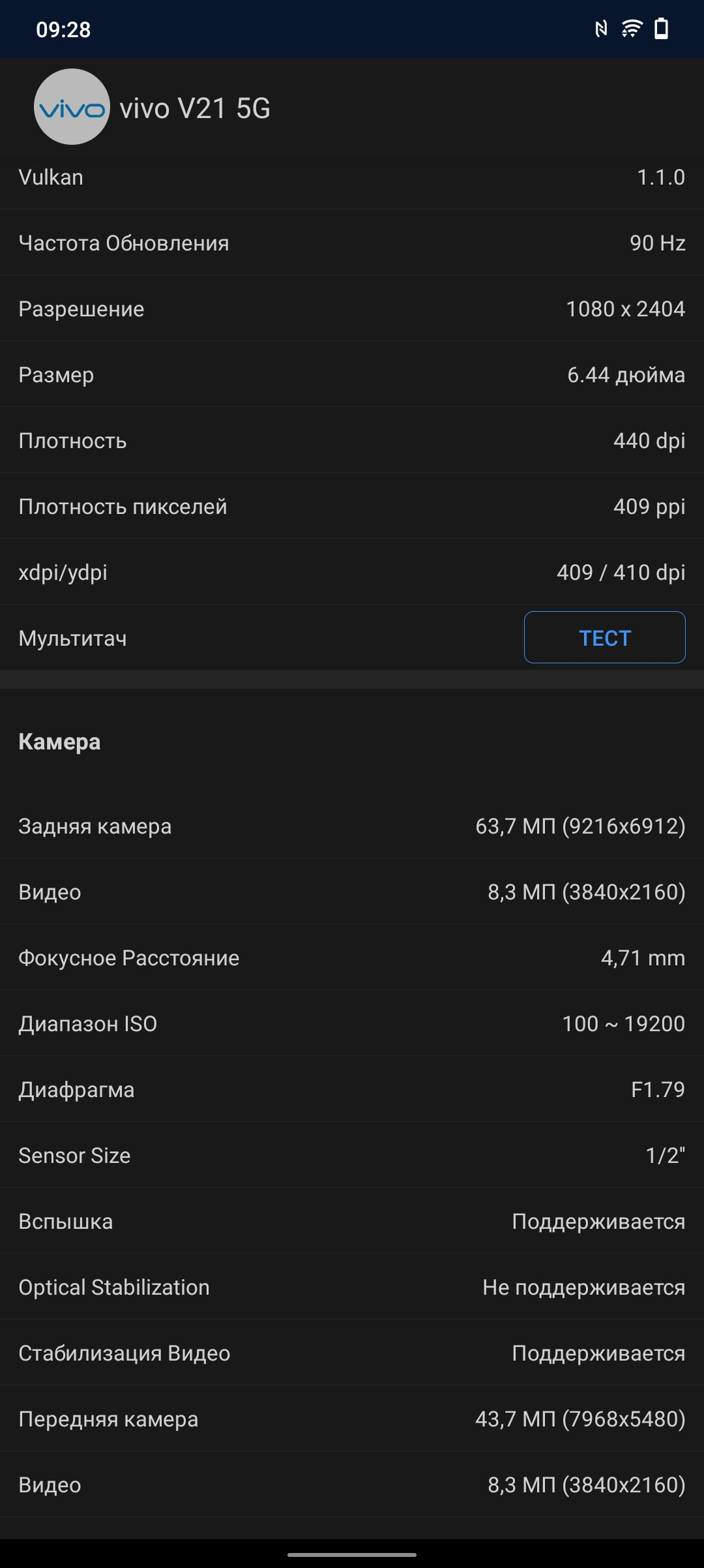
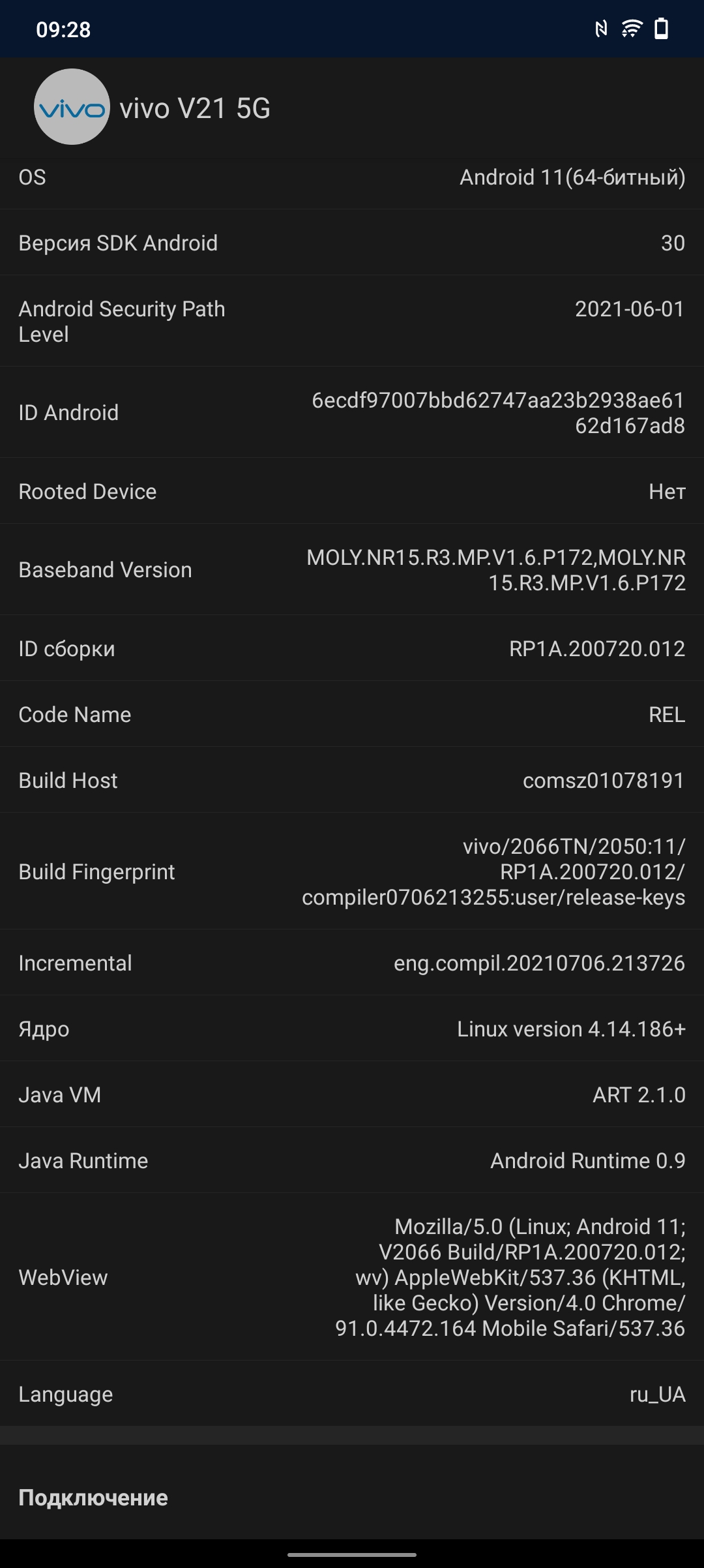
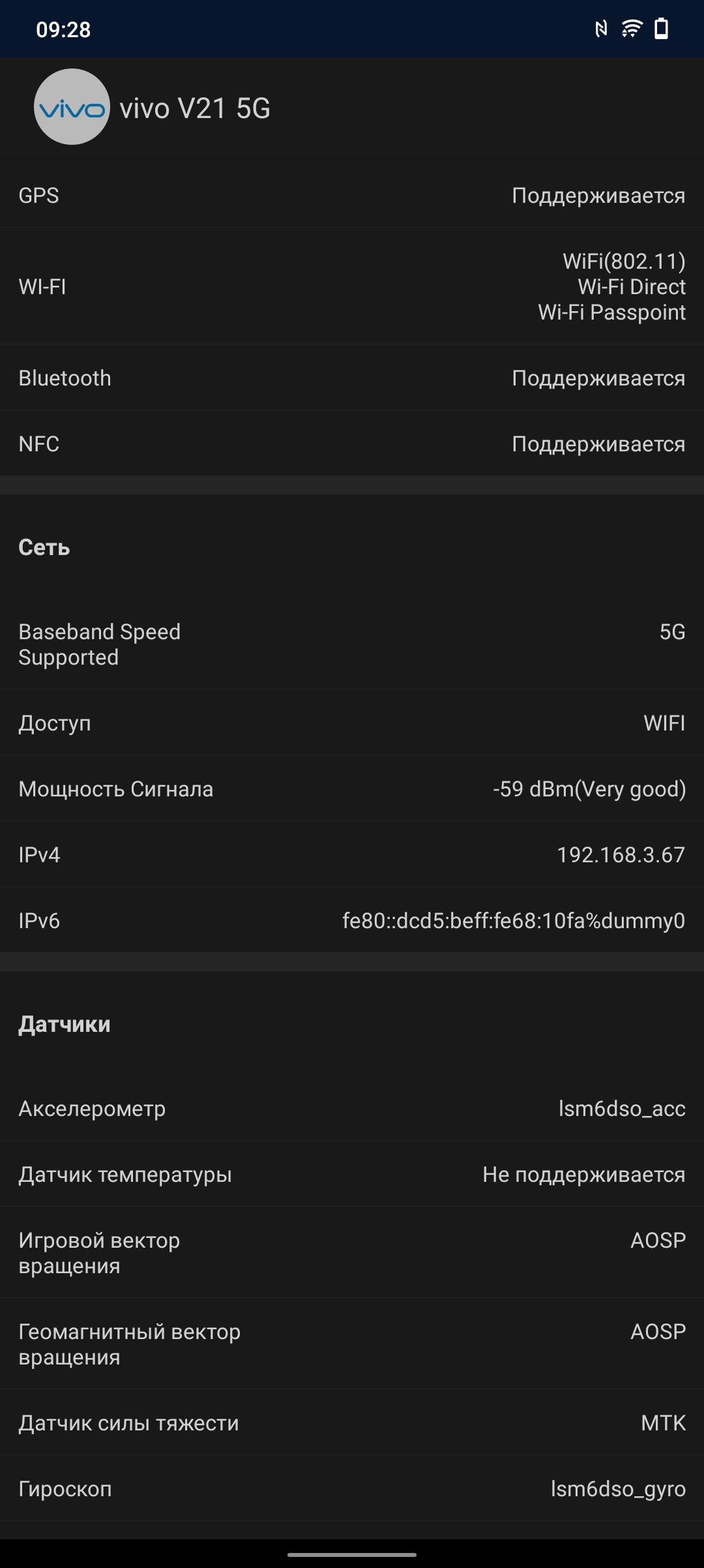

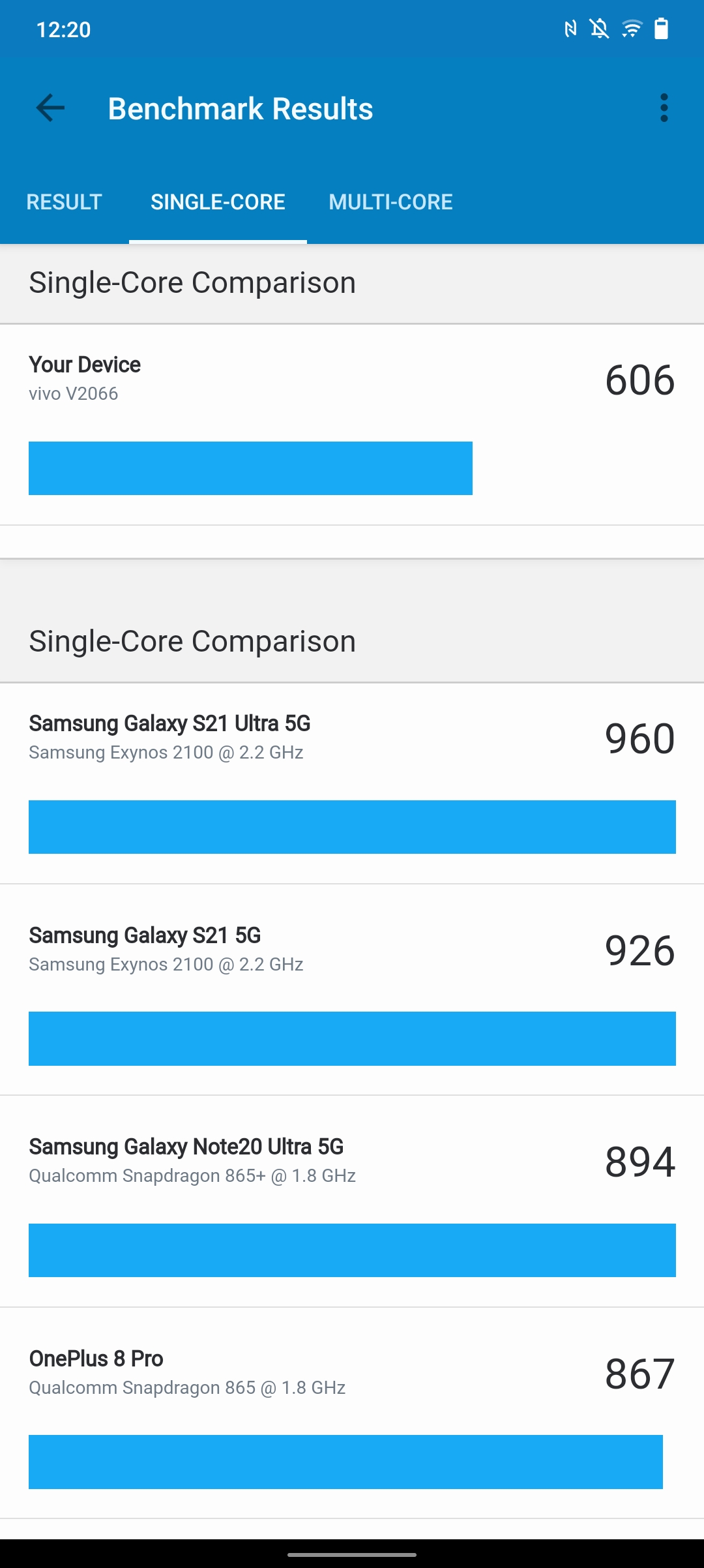
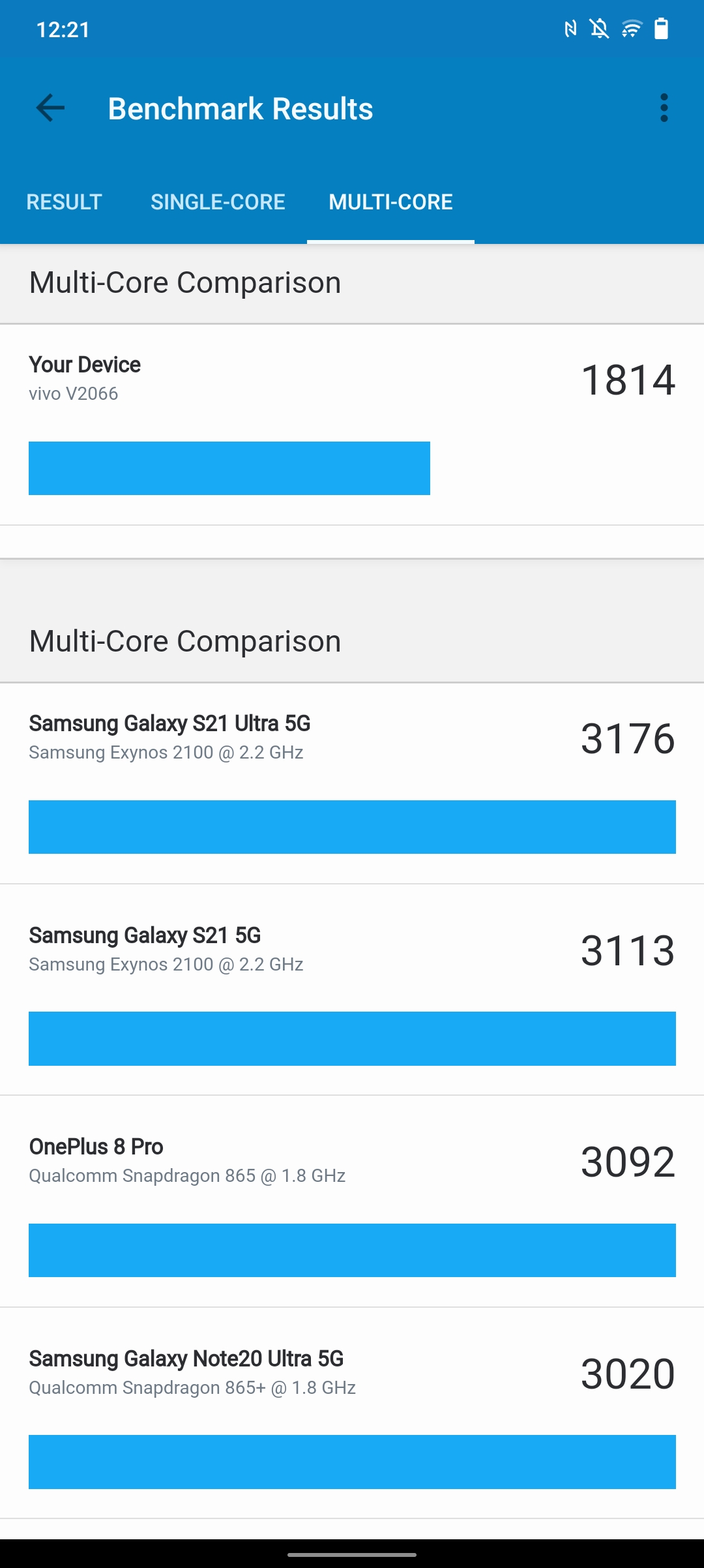
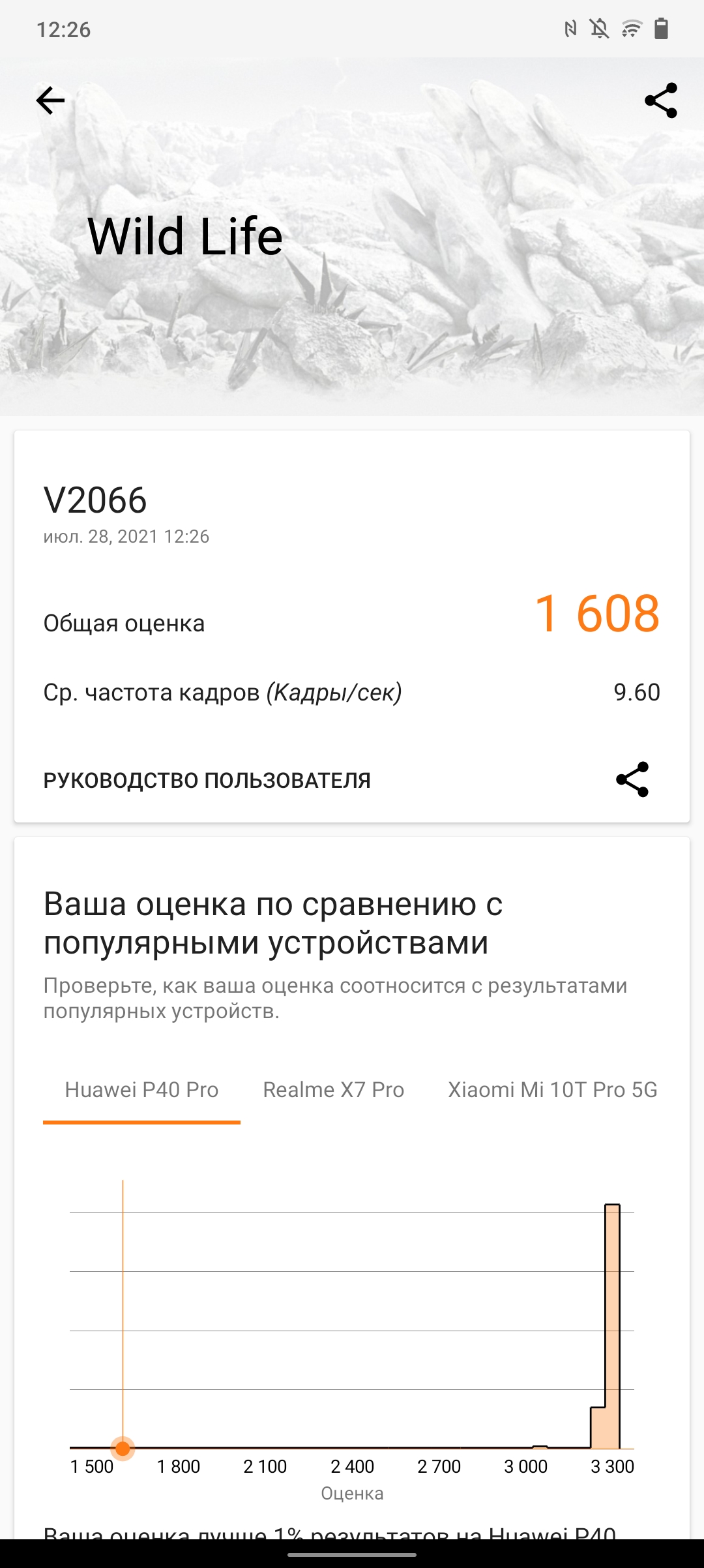

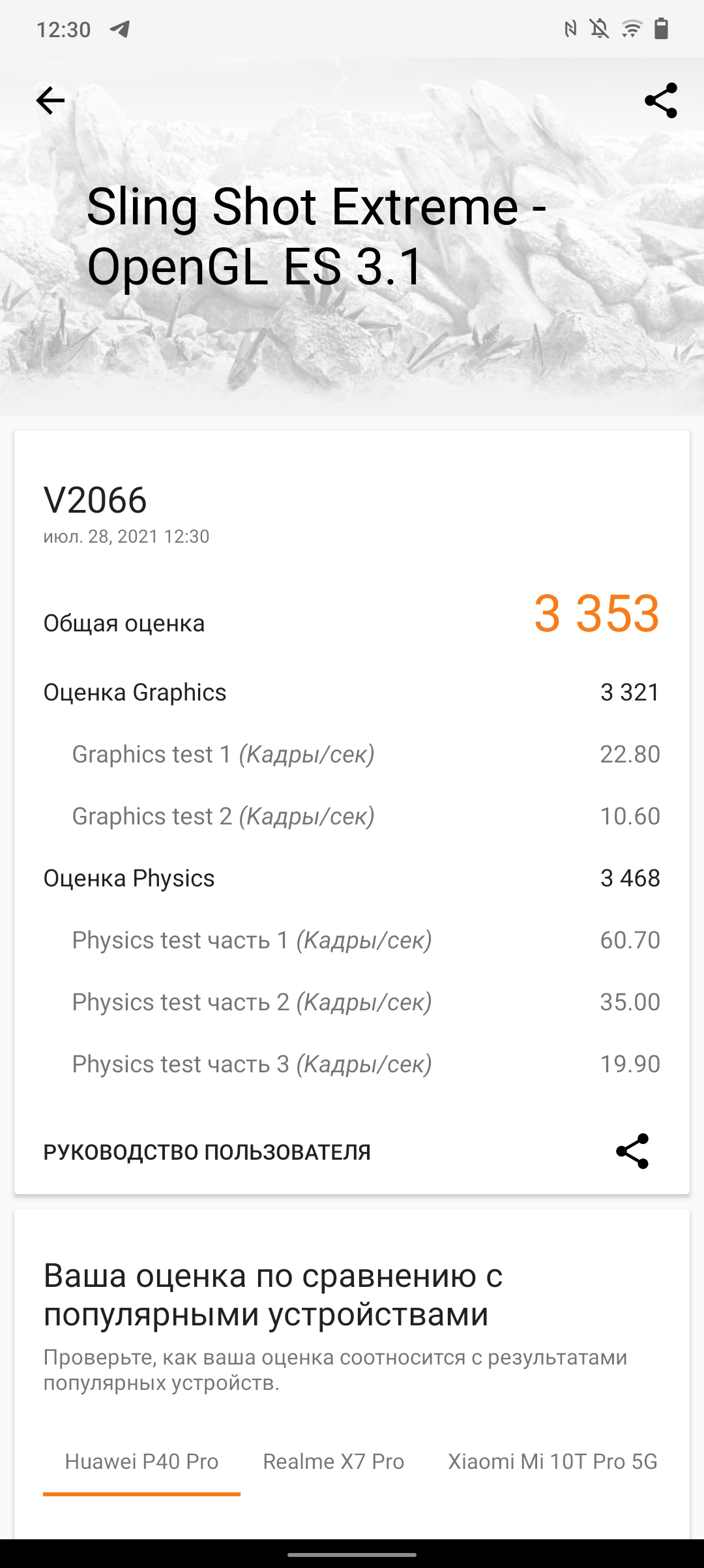
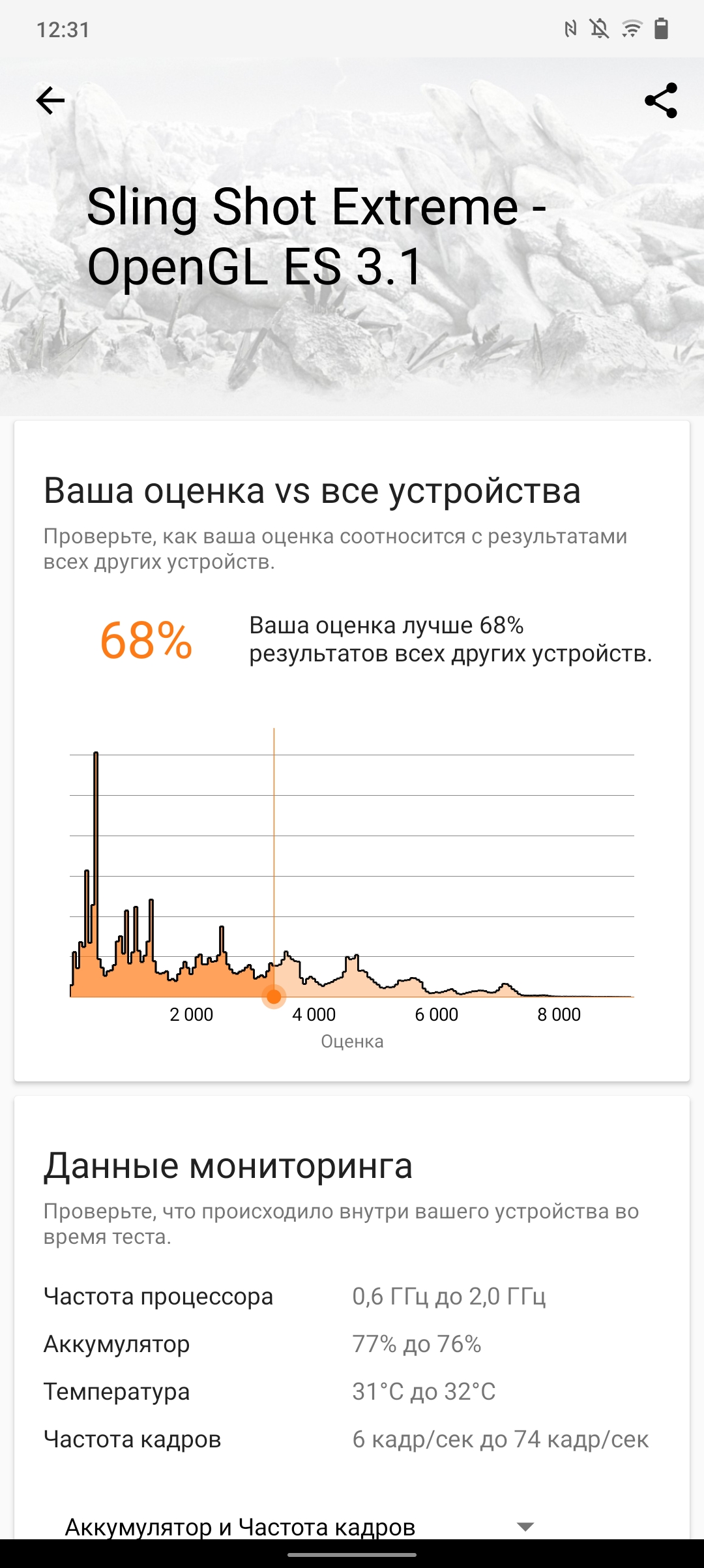
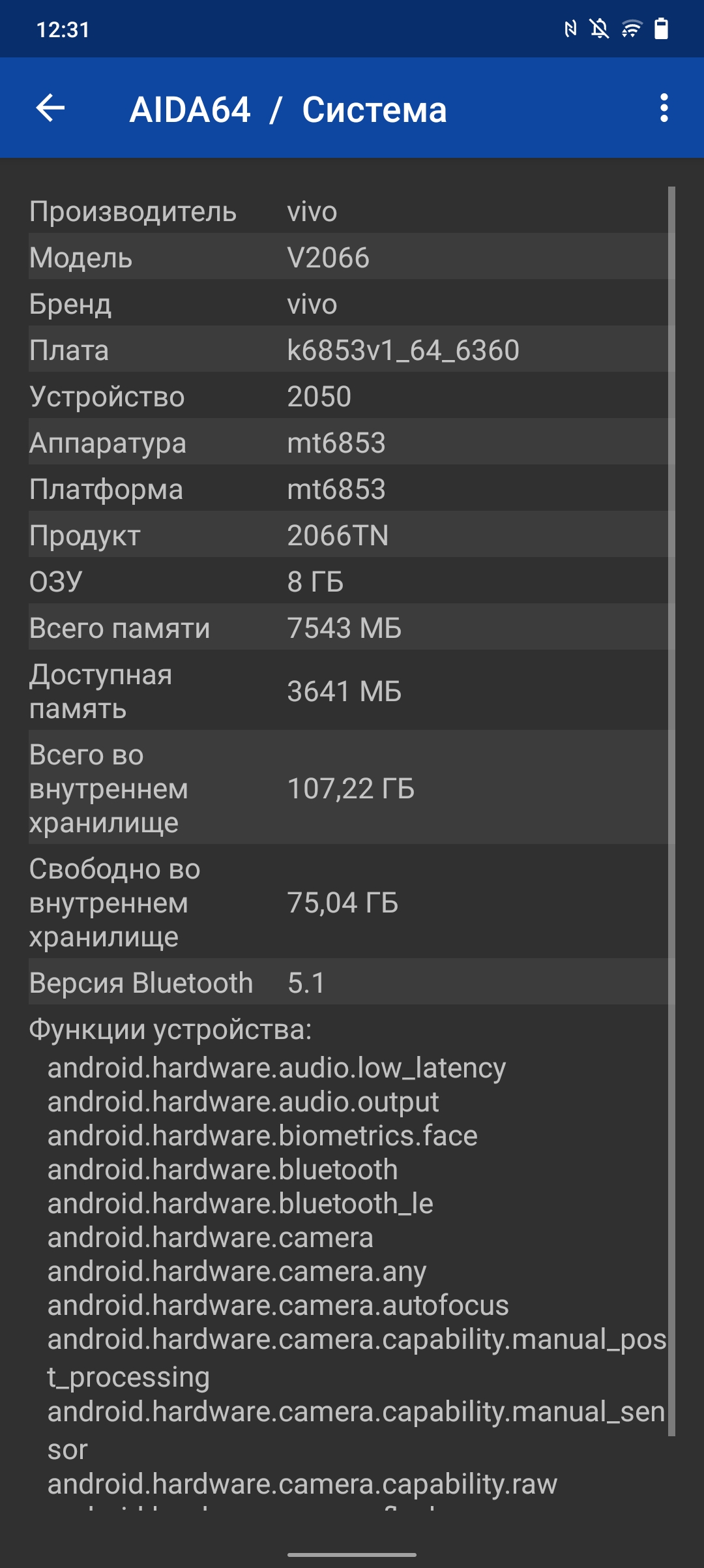

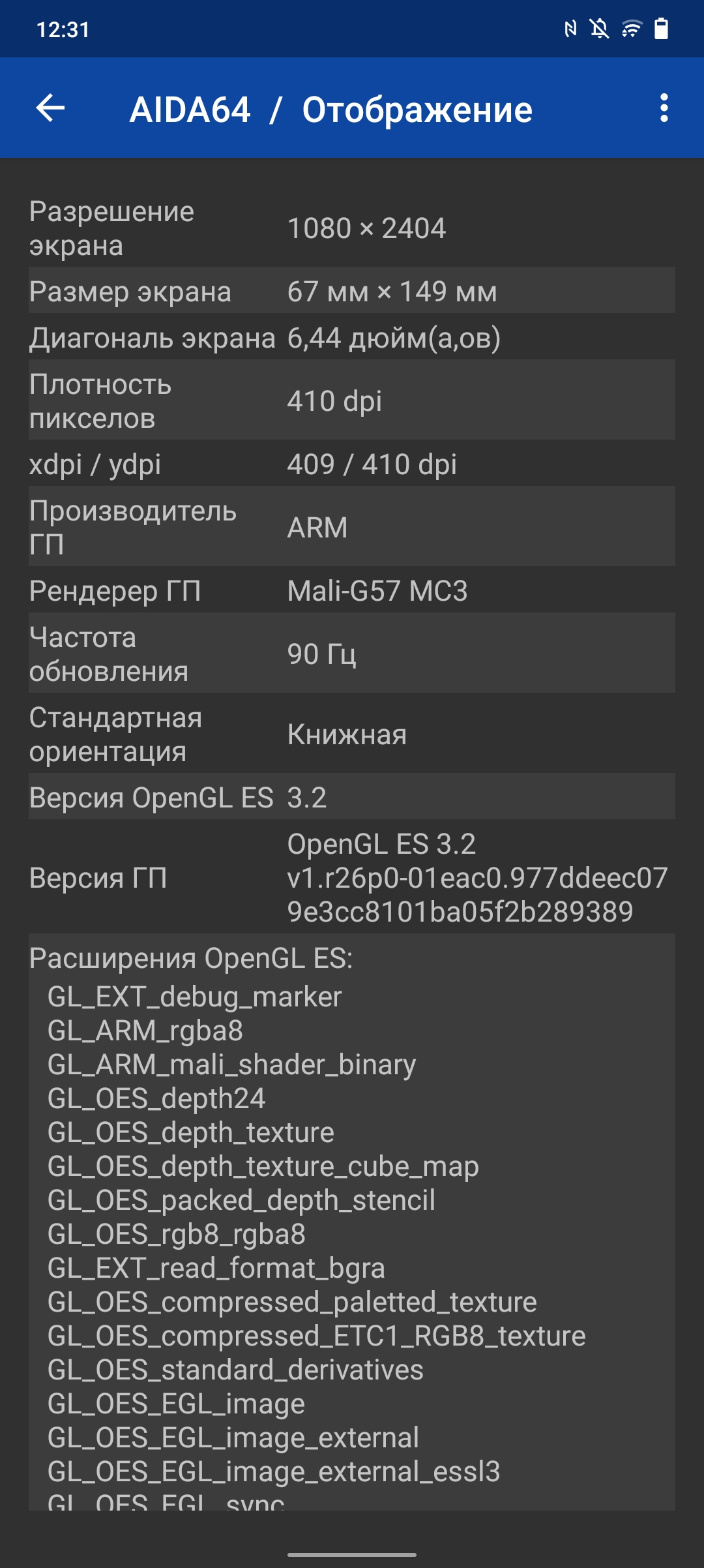
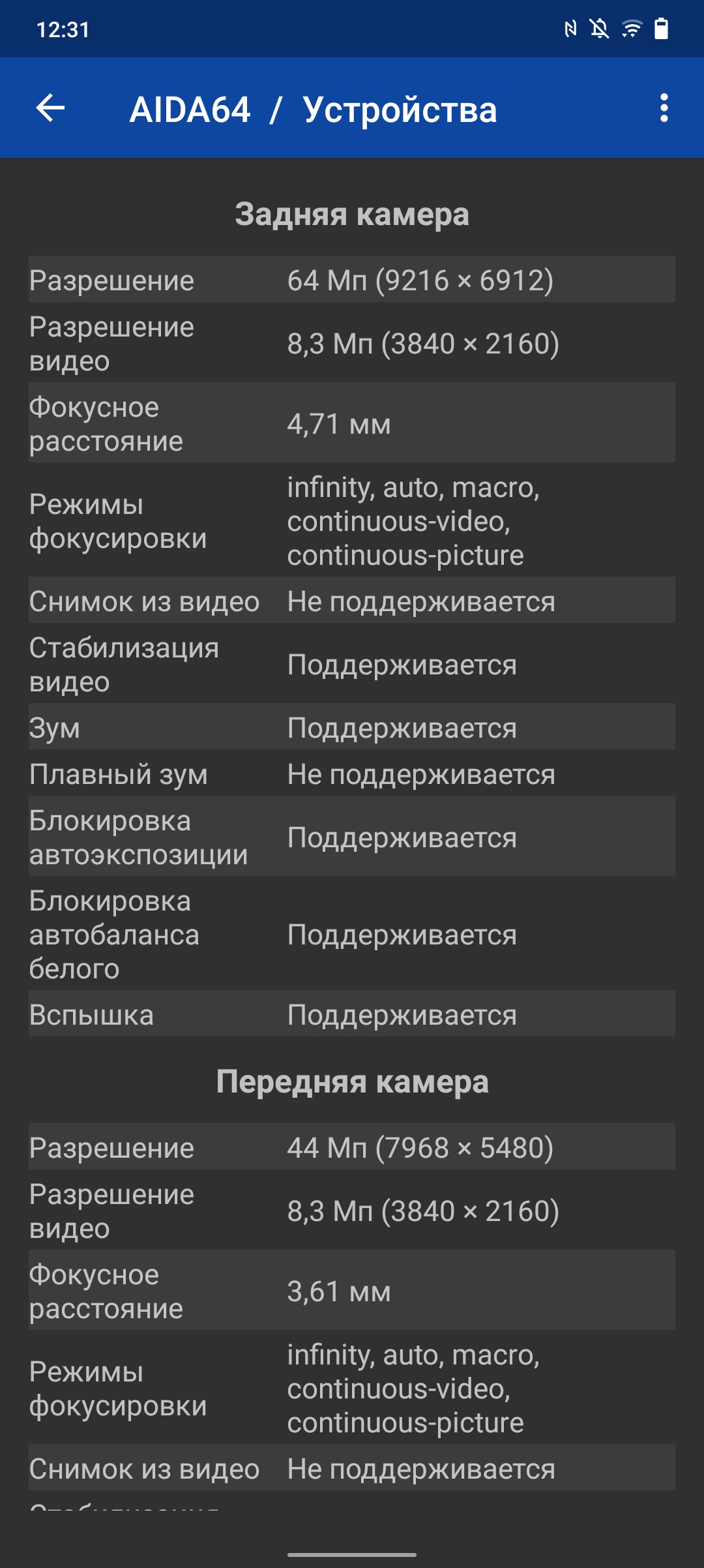






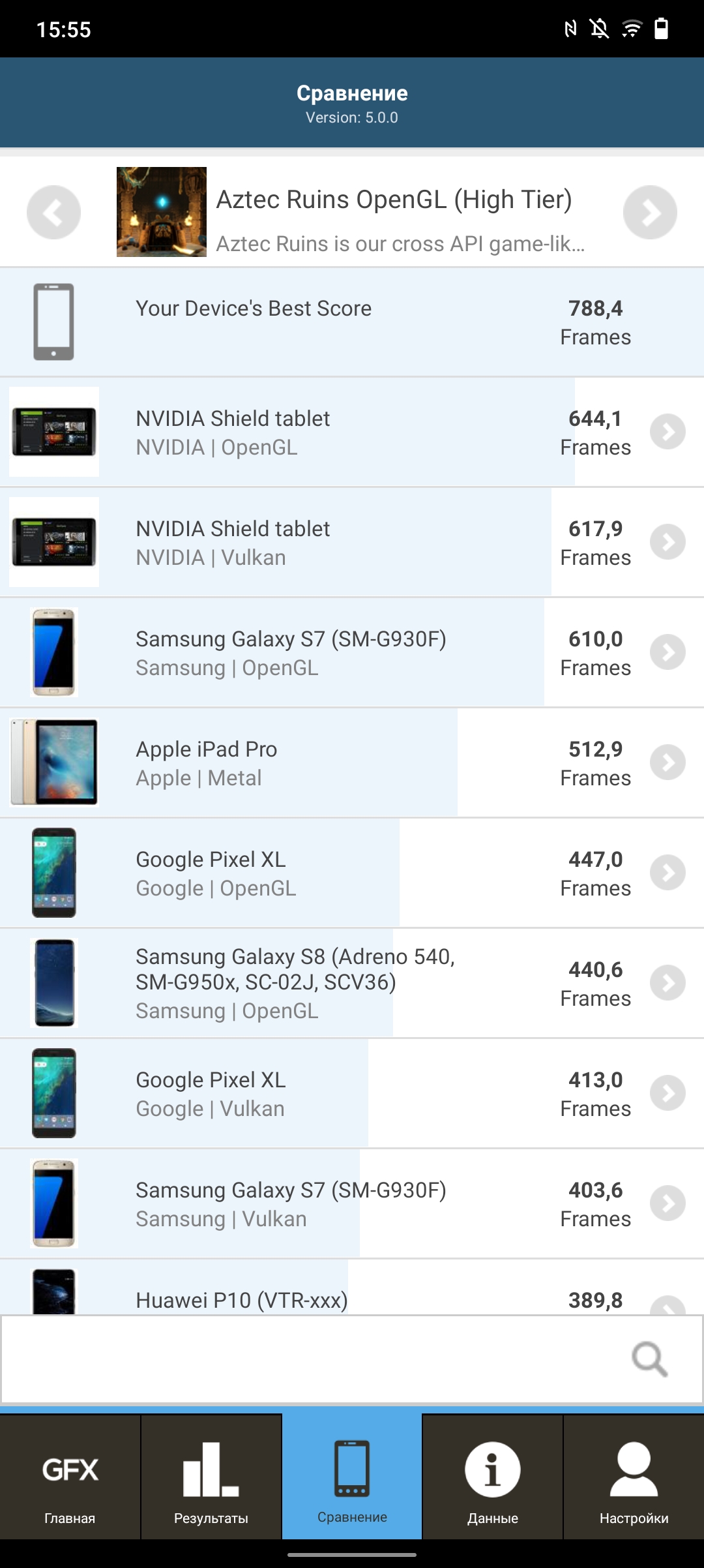


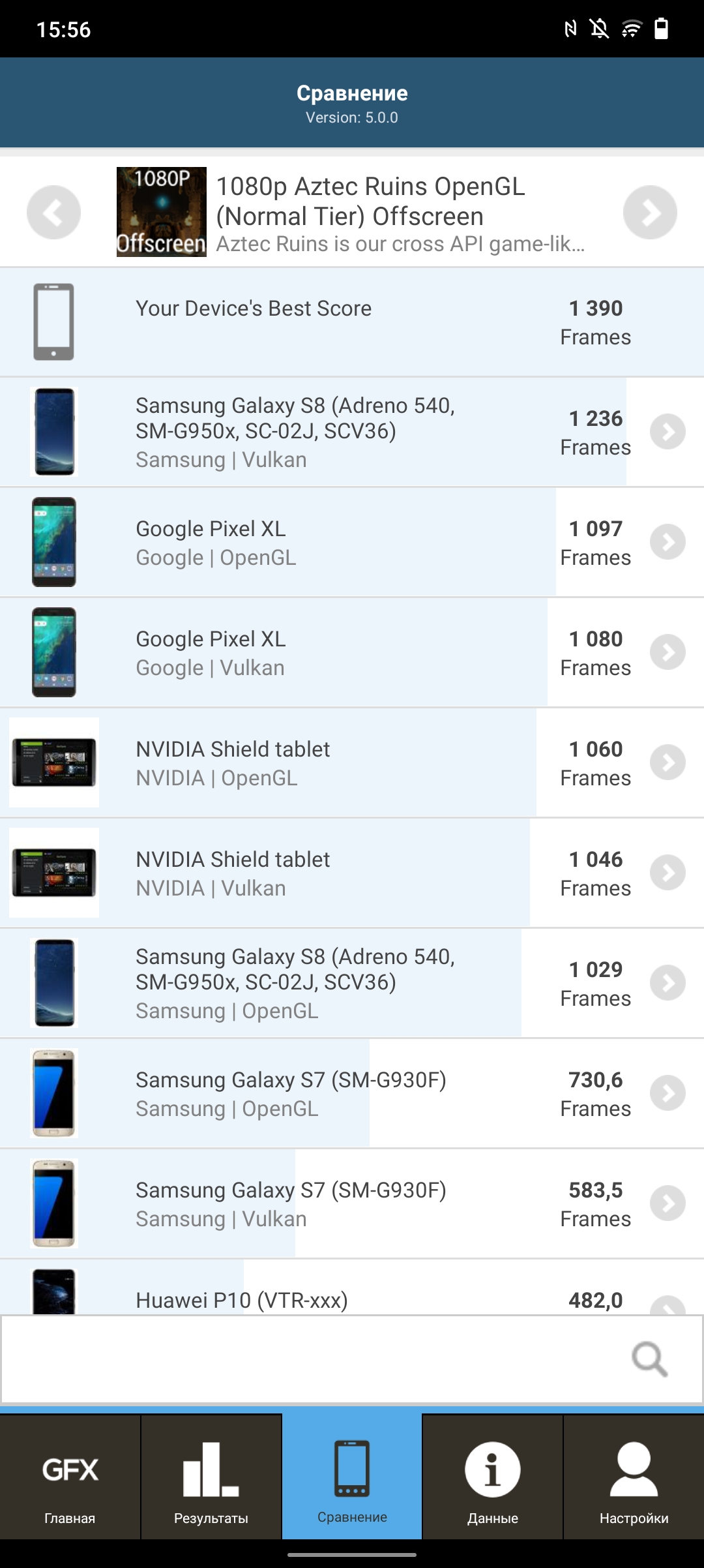
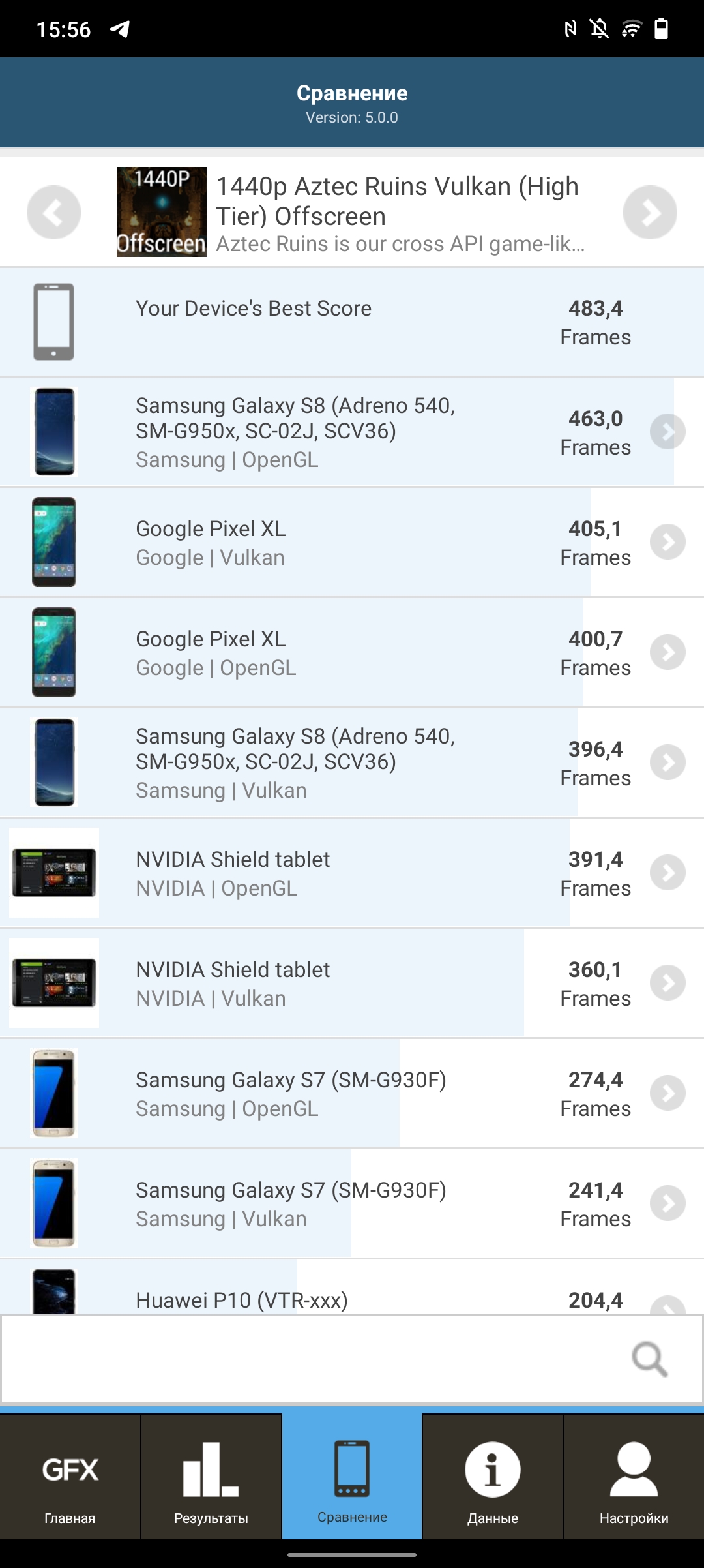
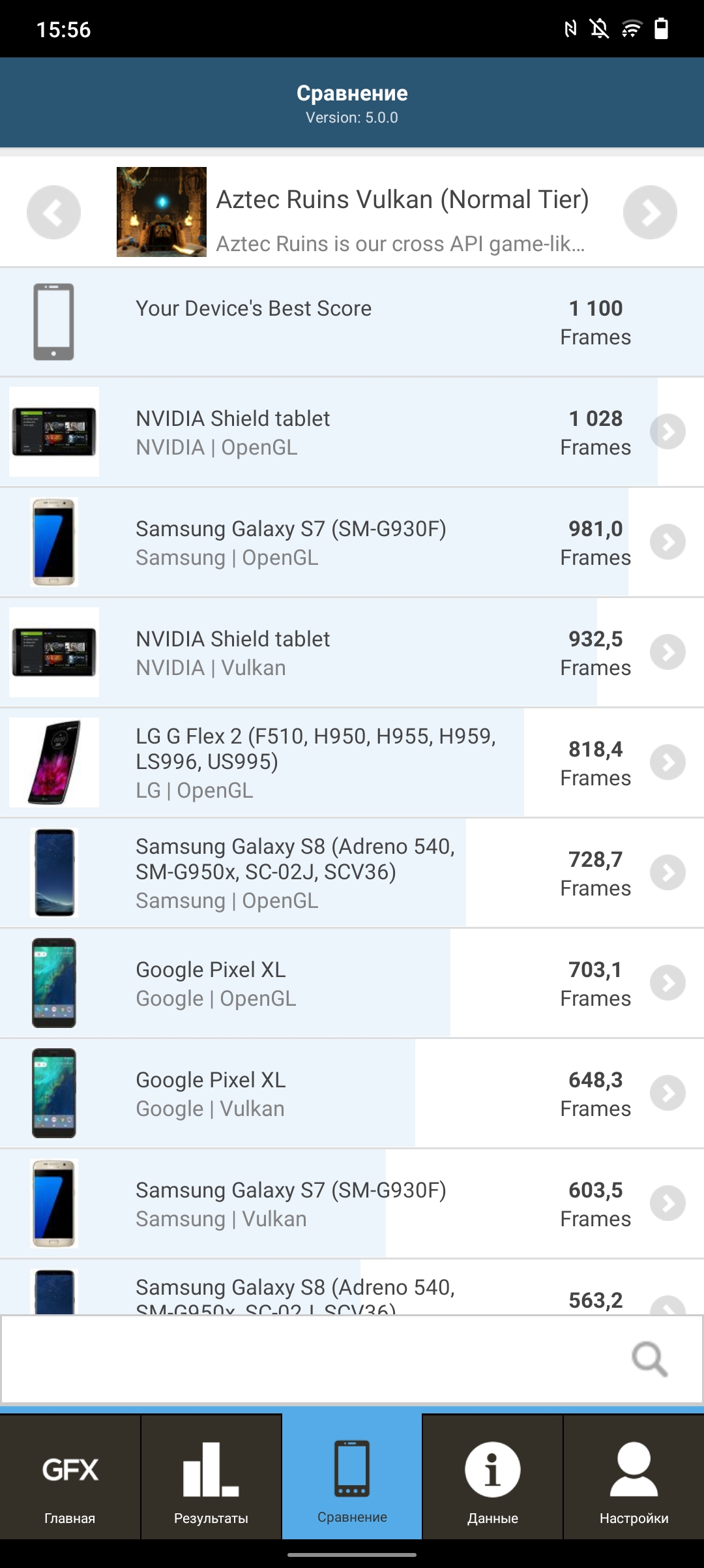

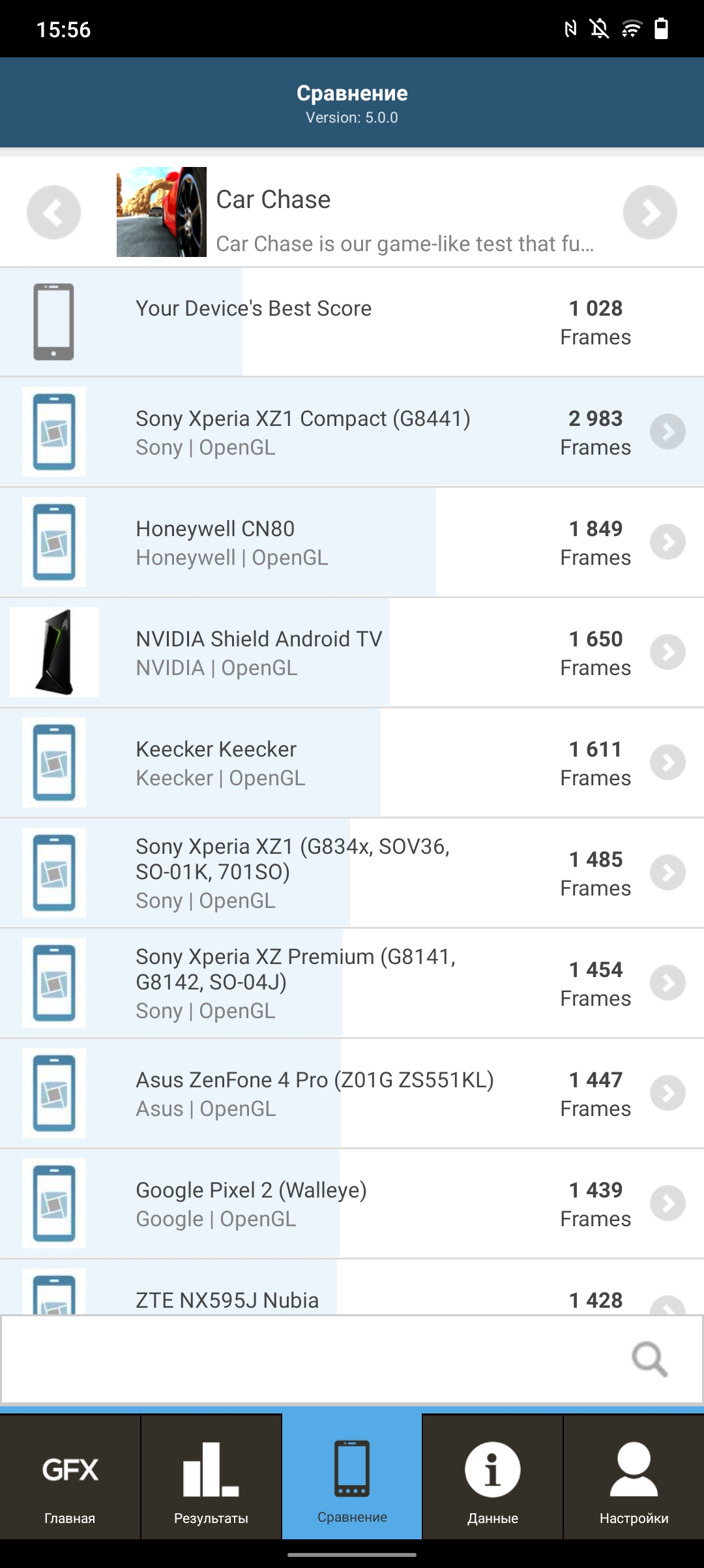

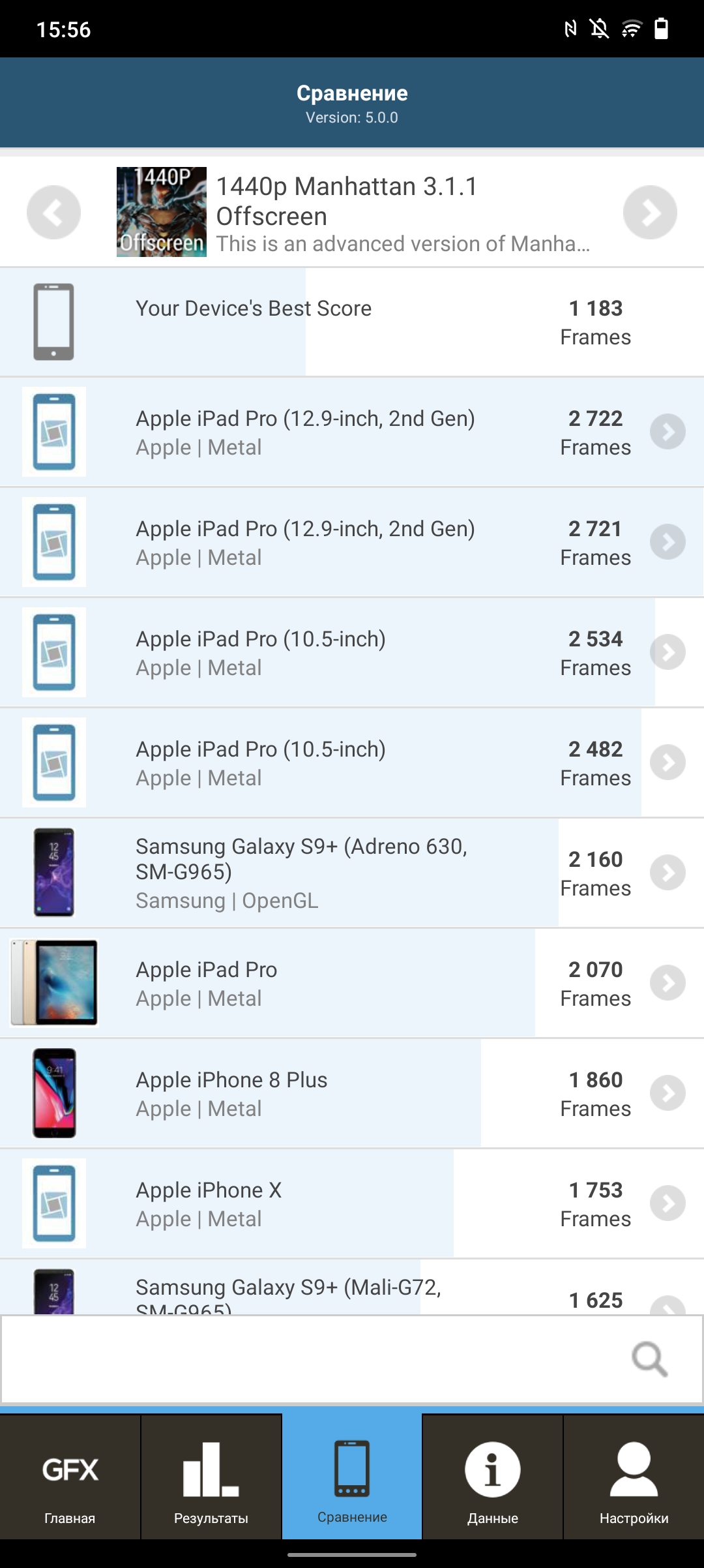
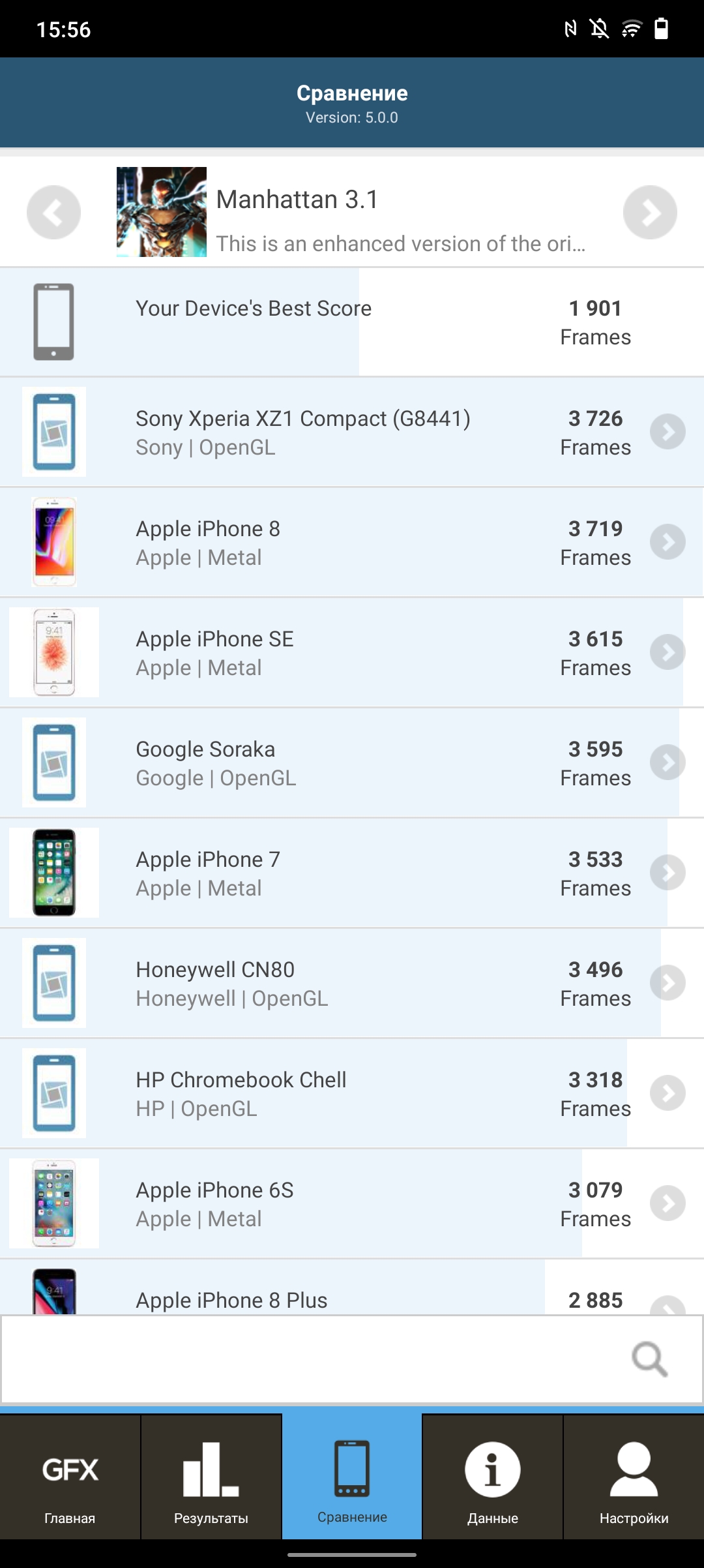
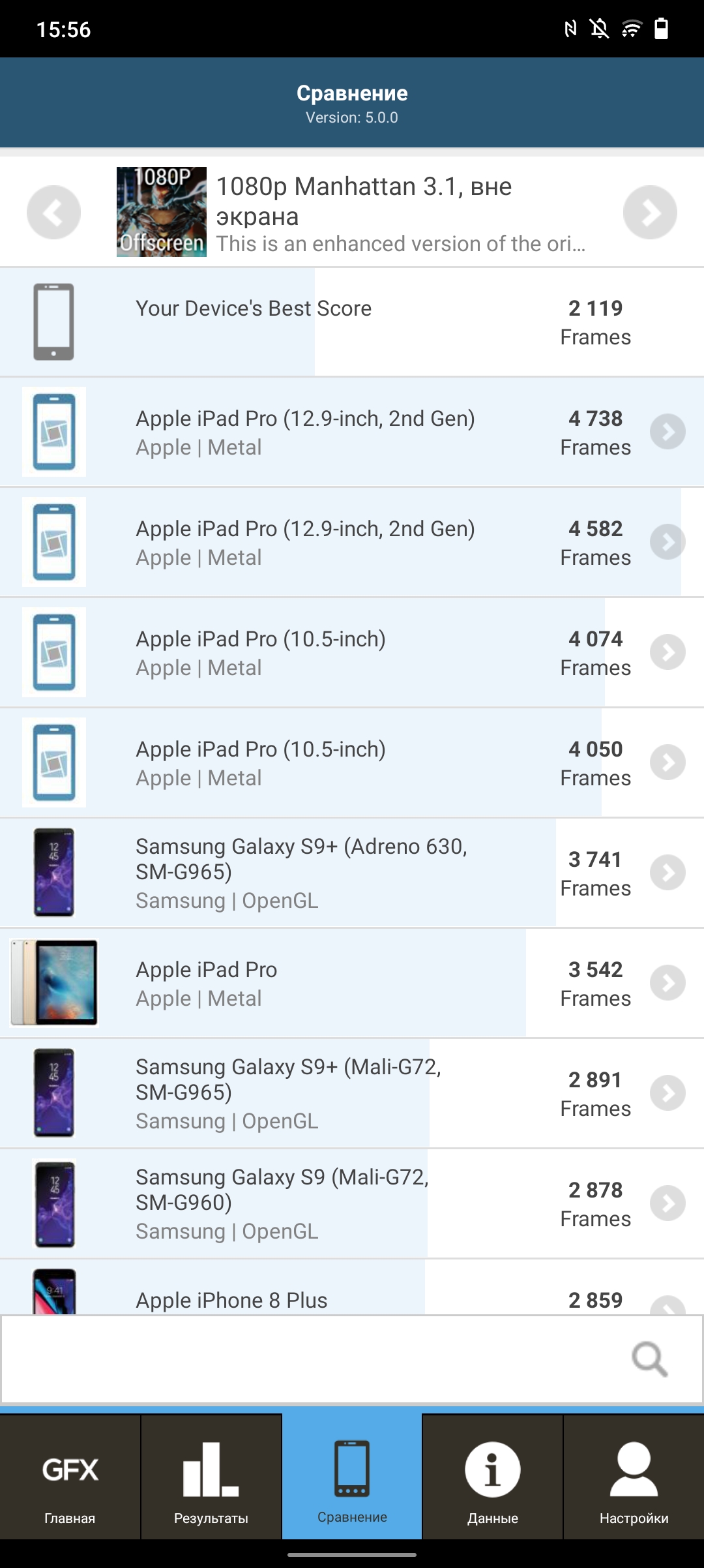
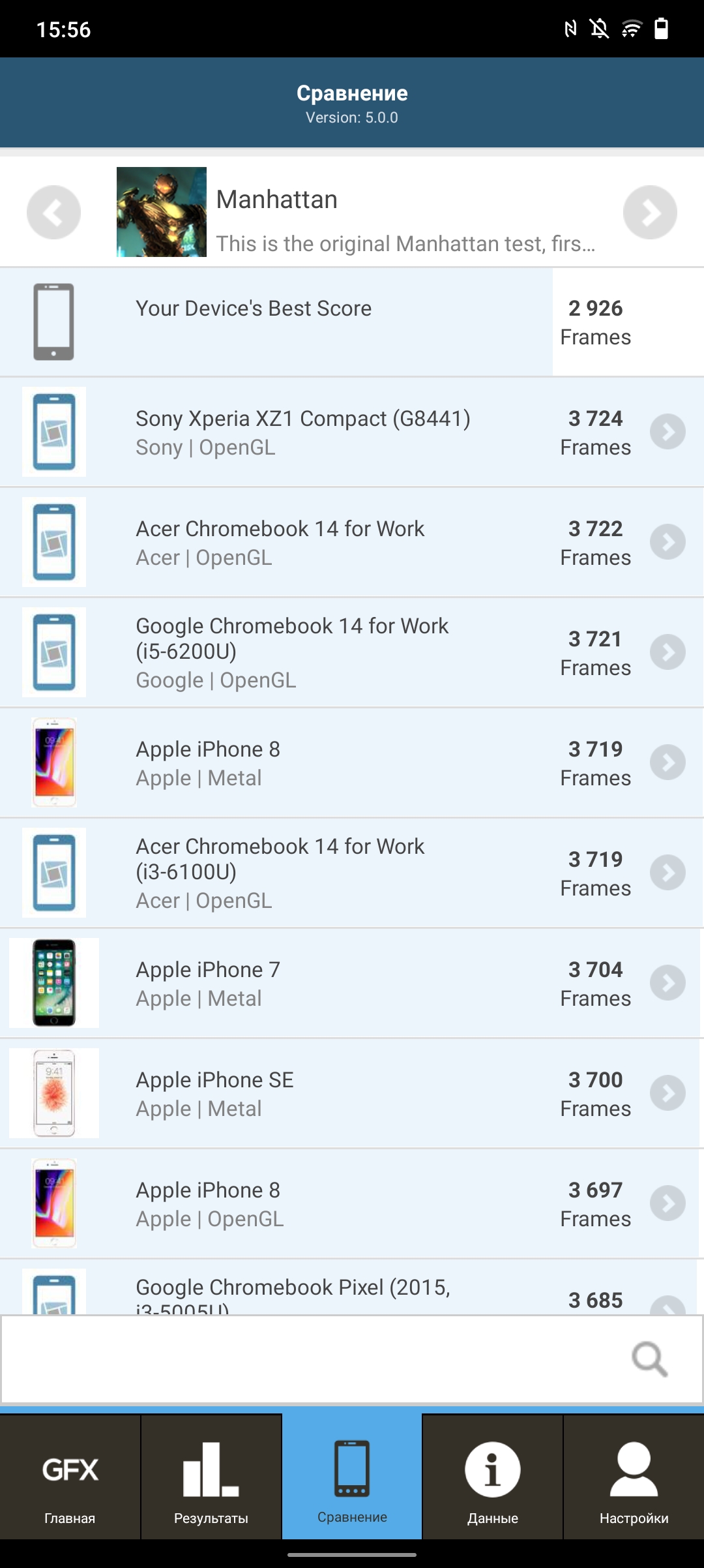

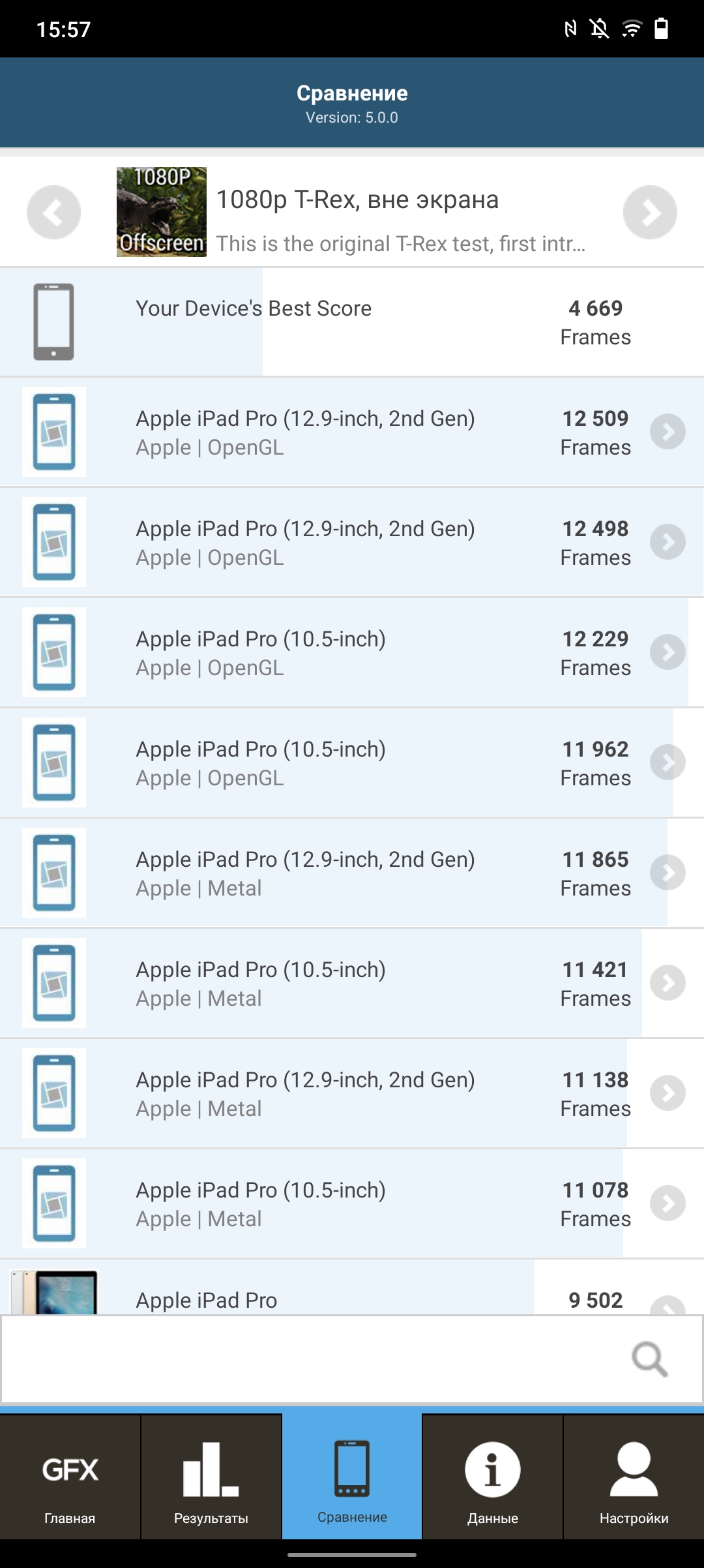
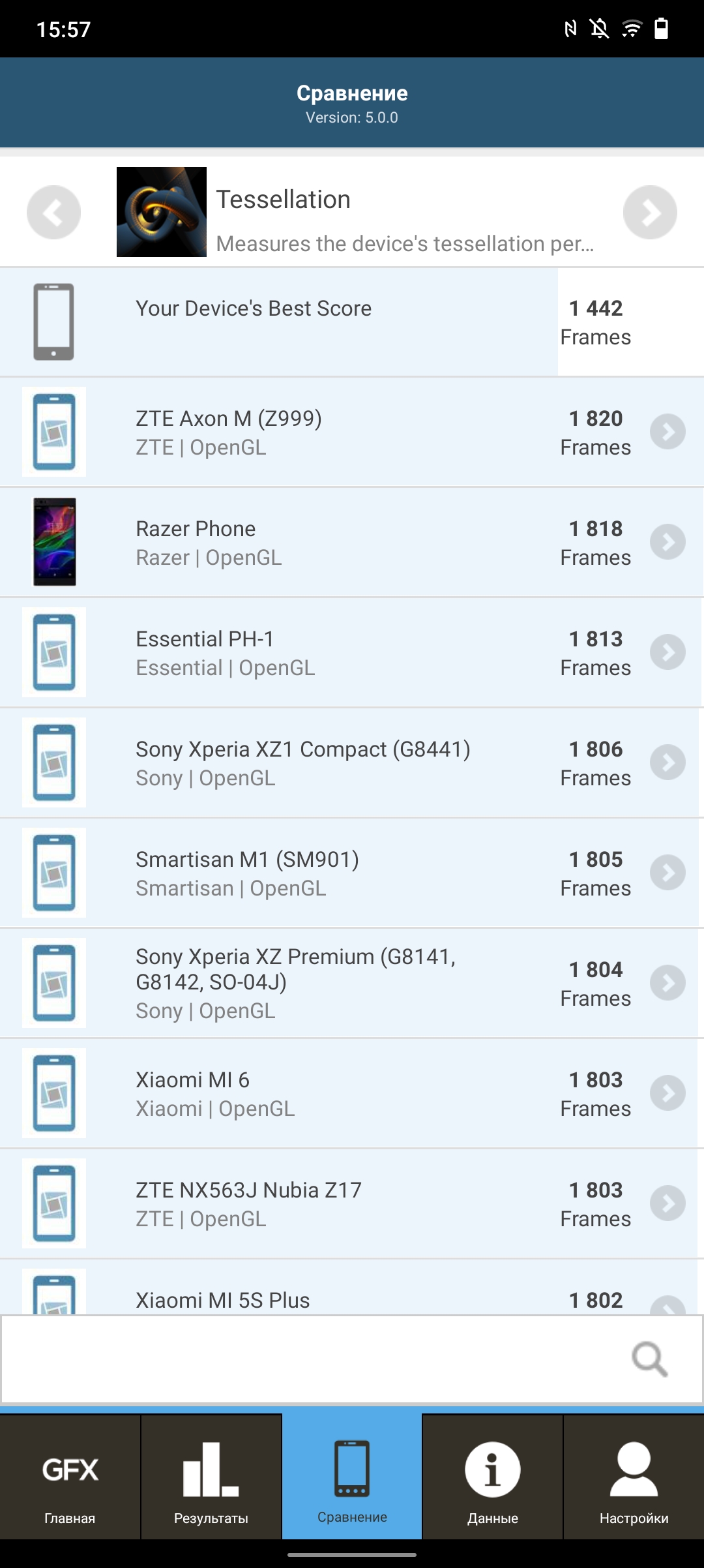

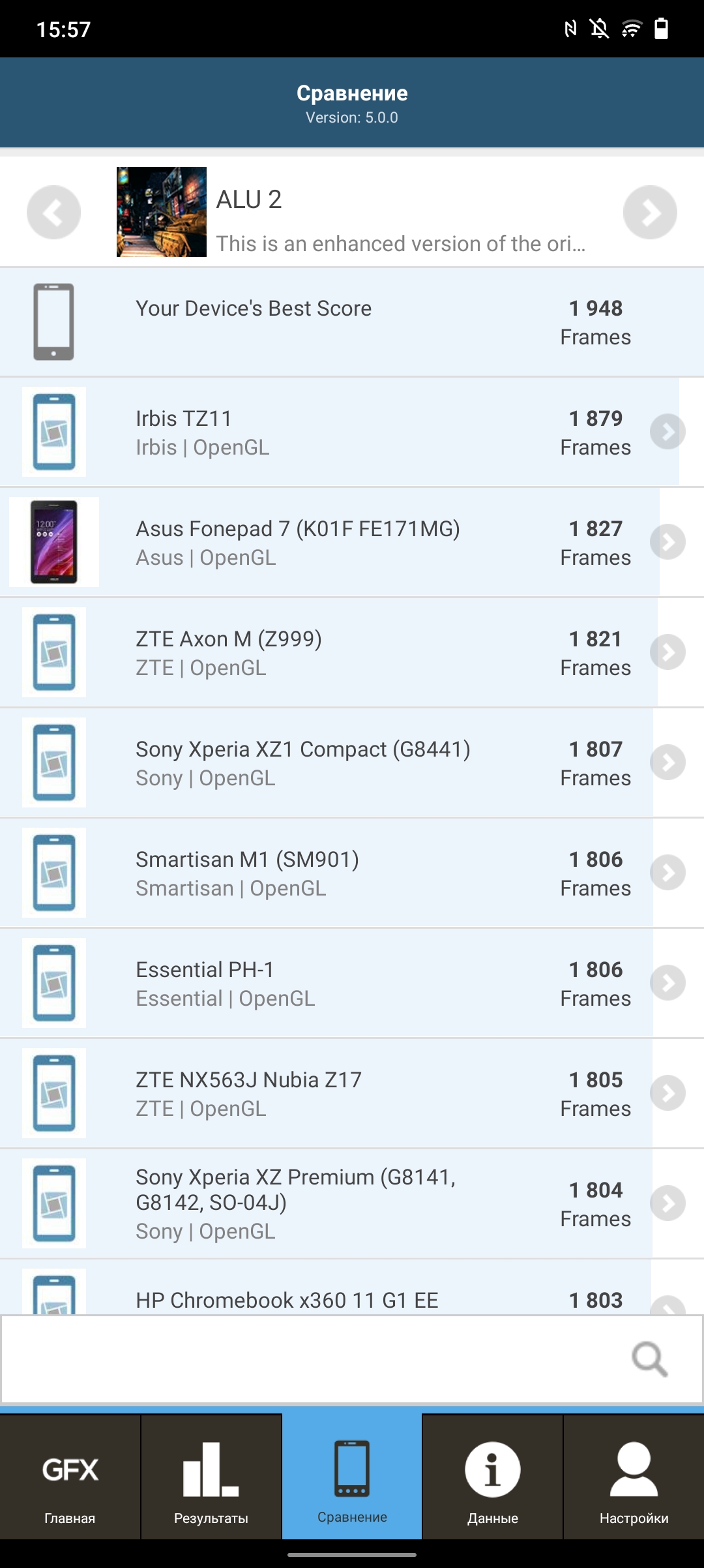

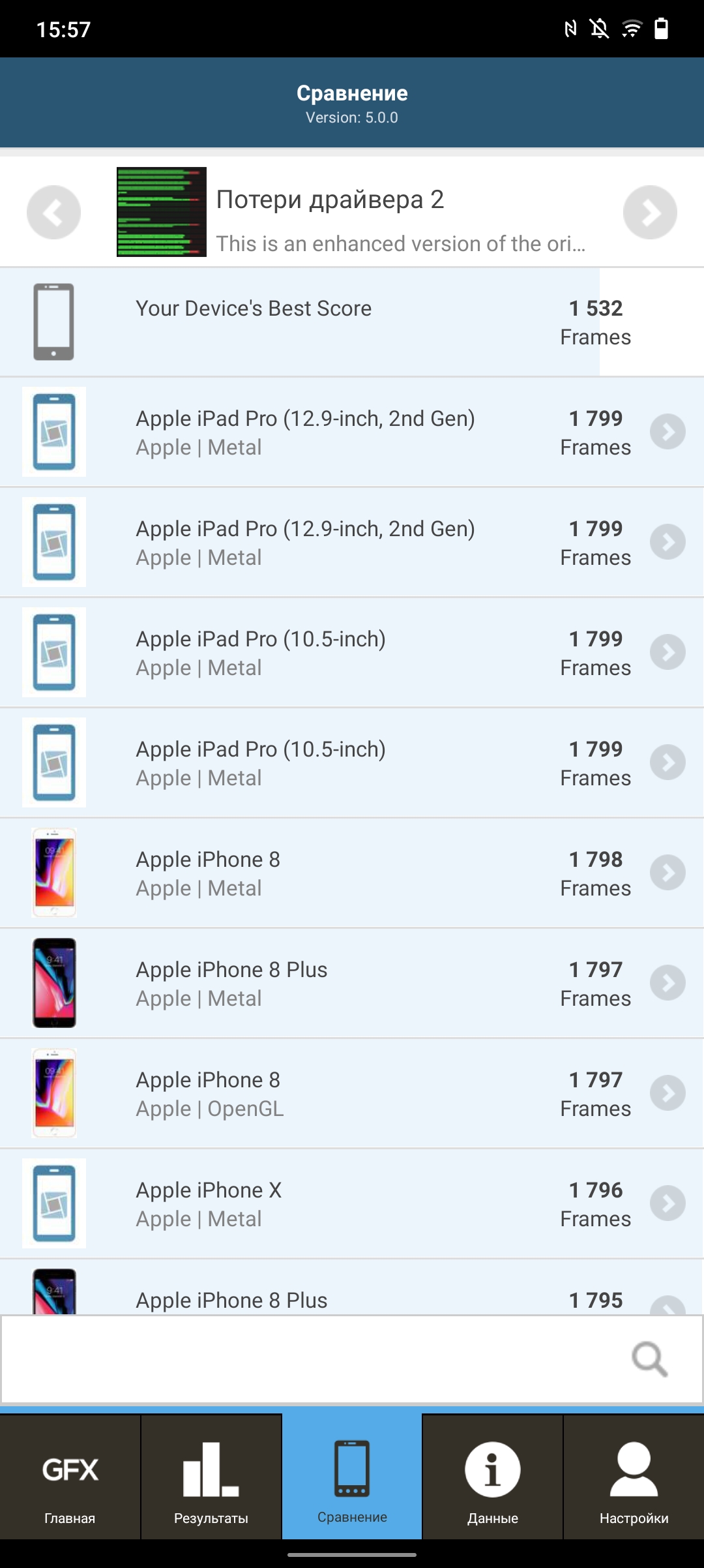
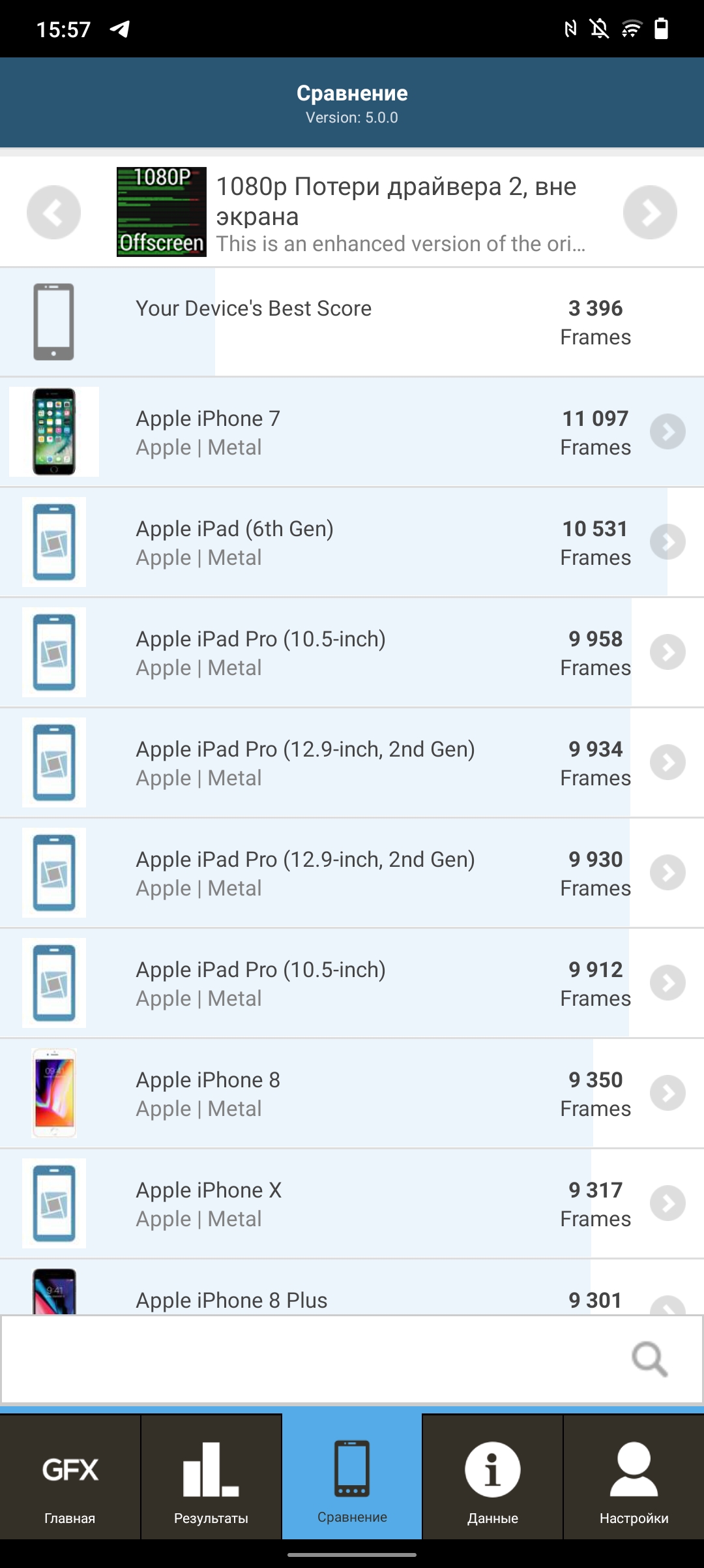
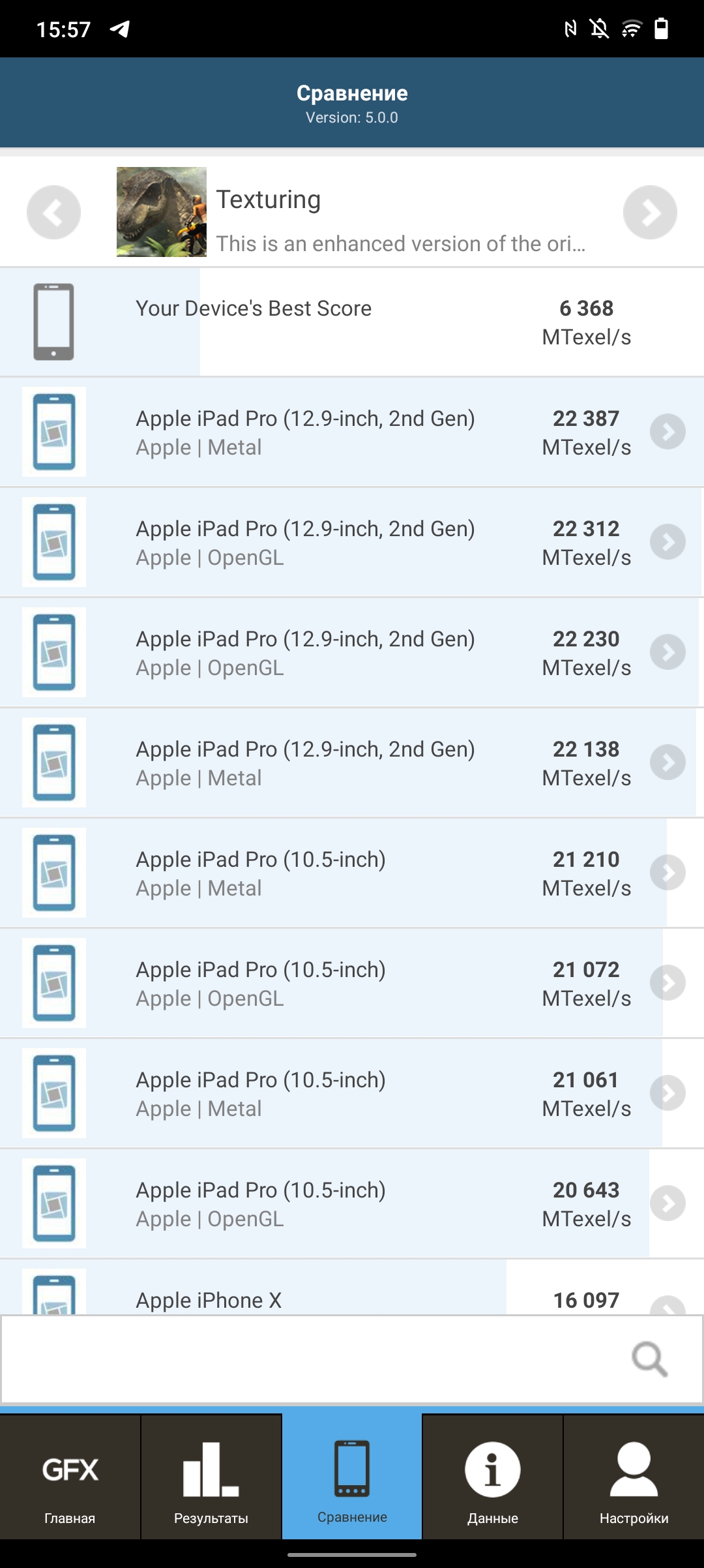















































The interface and all applications work quickly and launch quickly. With games the situation is acceptable, but traditionally Qualcomm processors are more suitable for this. Call of Duty Mobile runs quite stably on medium graphics settings without noticeable FPS sags. In Shadowgun Legends and Genshin Impact the situation is slightly worse: there are periodic lags and freezes. The vivo gaming utility is also available. It has hub with all installed games, the ability to optimize the smartphone when launching games, disabling notifications and so on.

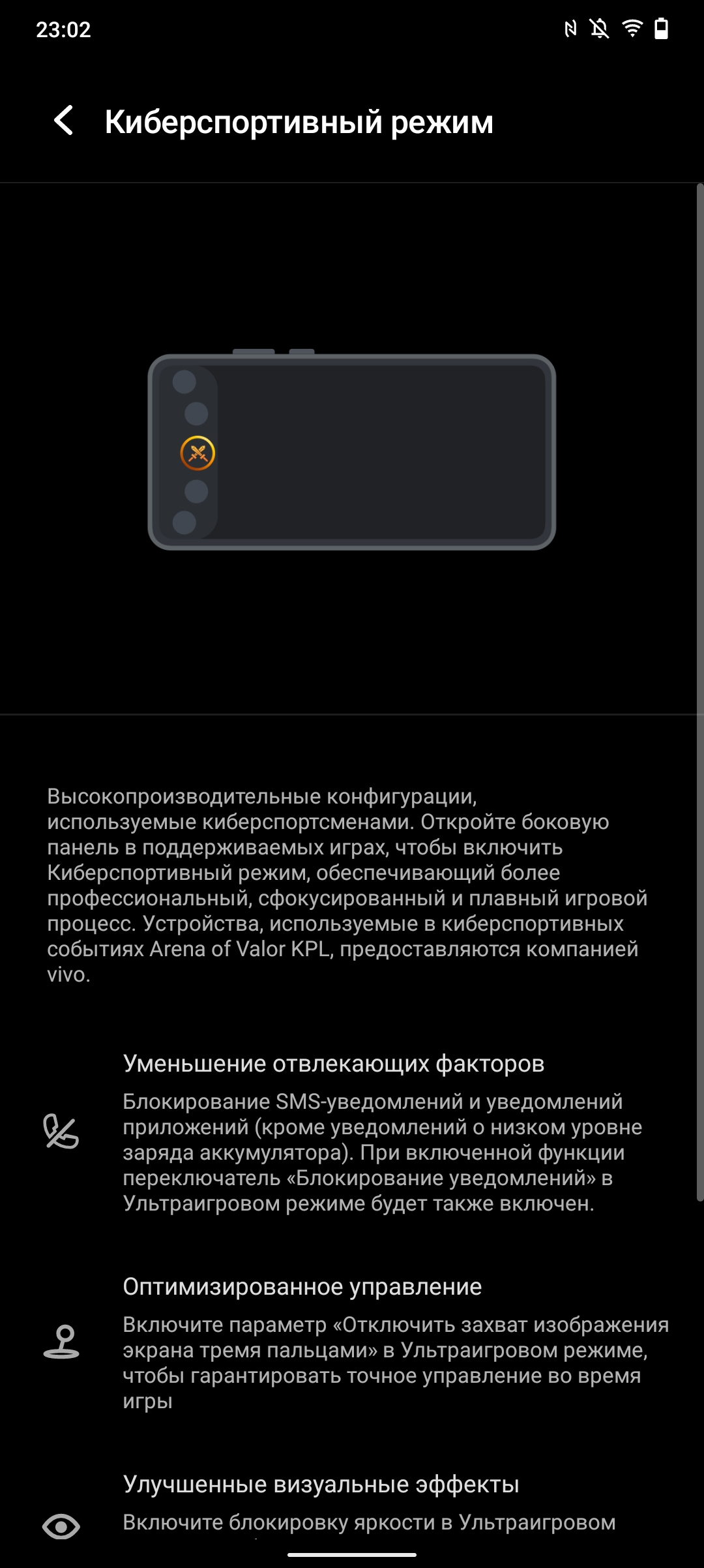




























A stress test showed that CPU performance can drop up to 83% under prolonged maximum loads. This is not fatal and in real life conditions it won't be noticeable. At the same time, the case becomes barely warm.

Interfaces: dual-band 802.11 a/b/g/n/ac Wi-Fi 2.4 GHz and 5 GHz, Bluetooth 5.1 LE and NFC module for contactless payment. Global positioning systems GPS, GLONASS, Beidou, Galileo are supported. Unfortunately, there is no stereo sound in the smartphone. The speaker is one, the average volume. Complete headphones of mediocre quality, which is to be expected. All the more that the format of earmolds in general is poorly suited for quality sound. But you can connect your own wired headphones through the included adapter. The volume reserve is enough for "plugs" or simple overhead / full-size headphones.
The vivo V21 has a 4000 mAh battery. Exactly the same as its predecessor. The 33W FlashCharge 2.0 proprietary fast charging is supported, with the smartphone gaining around 65% in the first 30 minutes and taking an hour to fully charge. Any miracles are not observed, for a full day the battery is enough. The scenario of usage is approximately the following: 15-20 minutes of talking, messengers, mail, web surfing, social networks, camera and about half an hour of games. For emergencies there is a power saving mode.
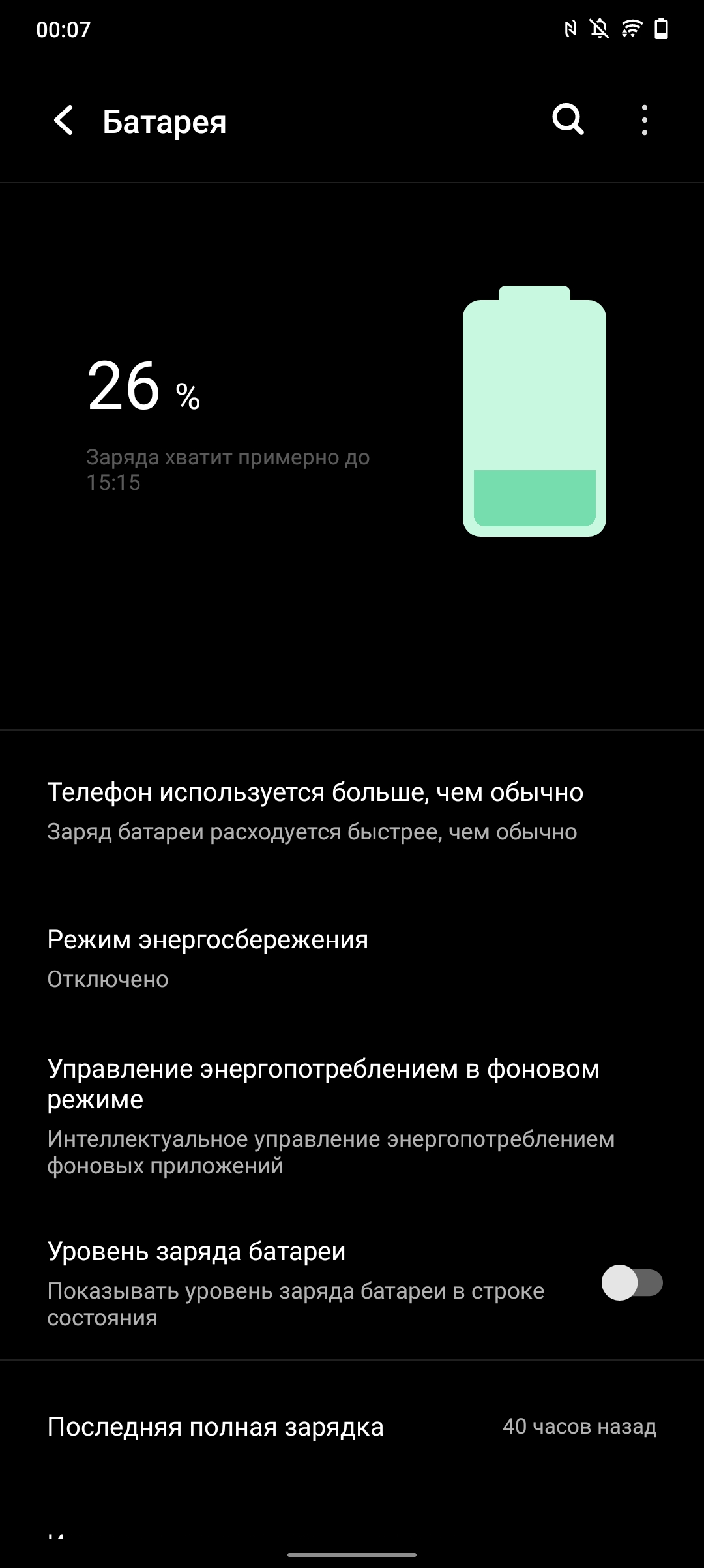

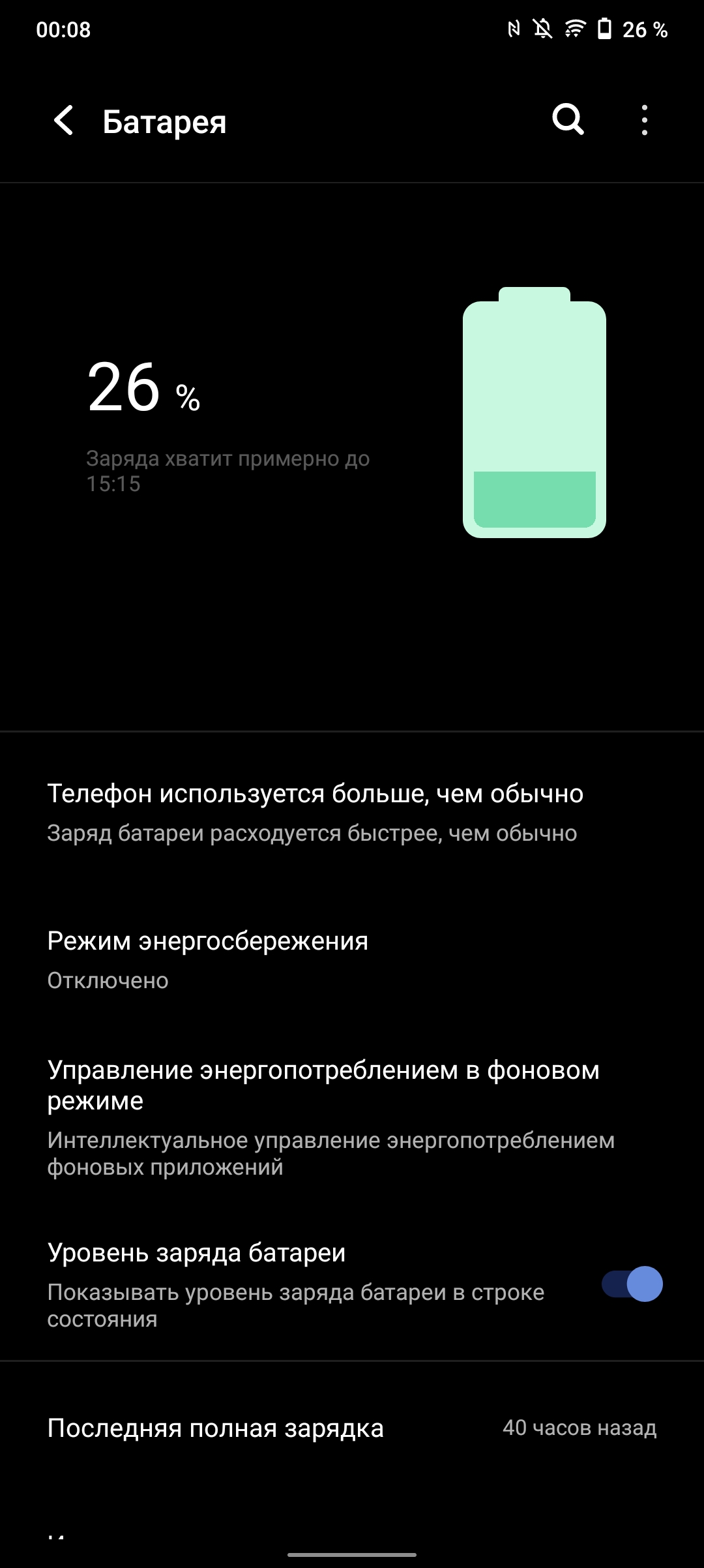



What about the interface?

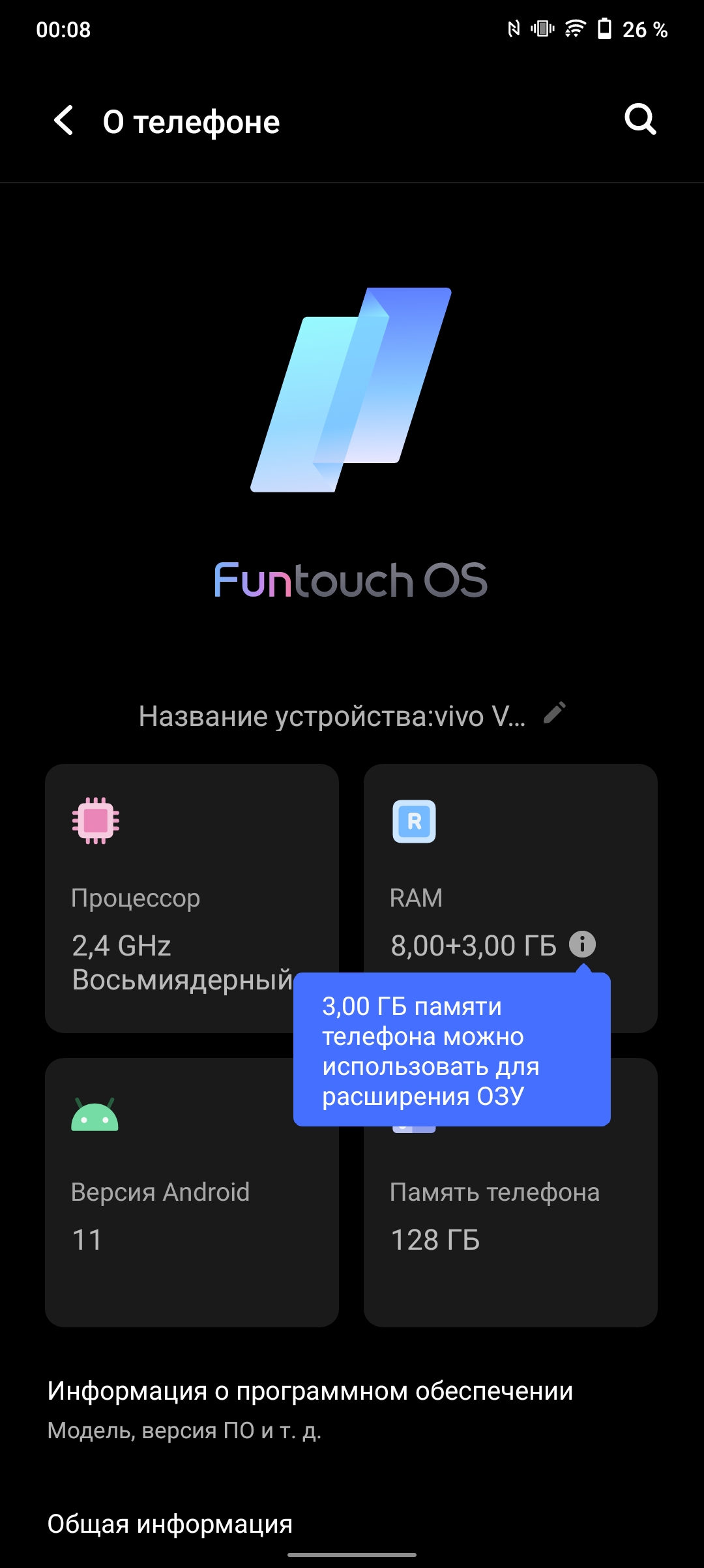






vivo V21 runs on Android 11 version with its own shell Funtouch OS 11. The company back last year abandoned the cardinal experiments and the shell is close in functionality and logic to the stock Android. It is fast, understandable and not overloaded with unnecessary things. There is a separate applications menu, a standard curtain, gesture and push-button navigation options. In short, everything is familiar, the main differences are in the appearance of it all.
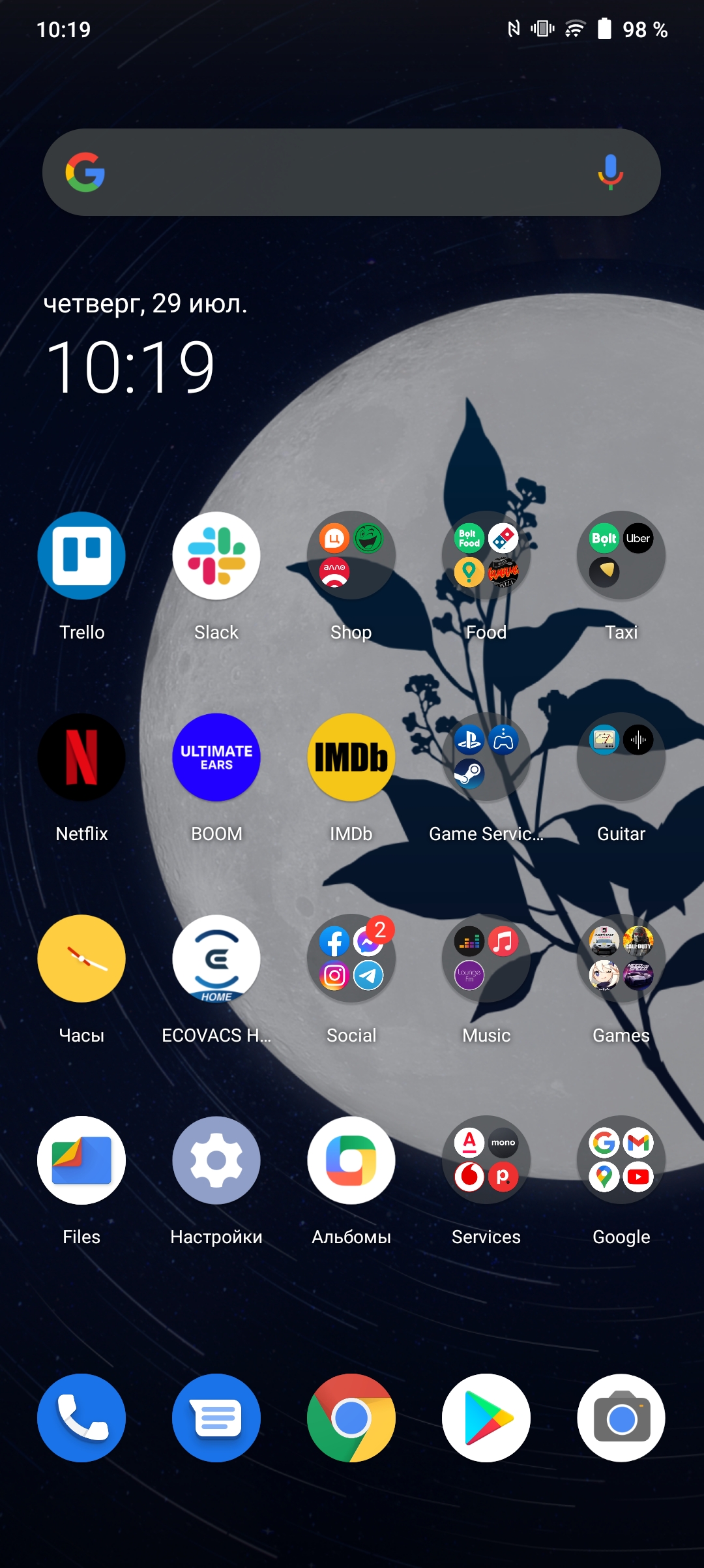


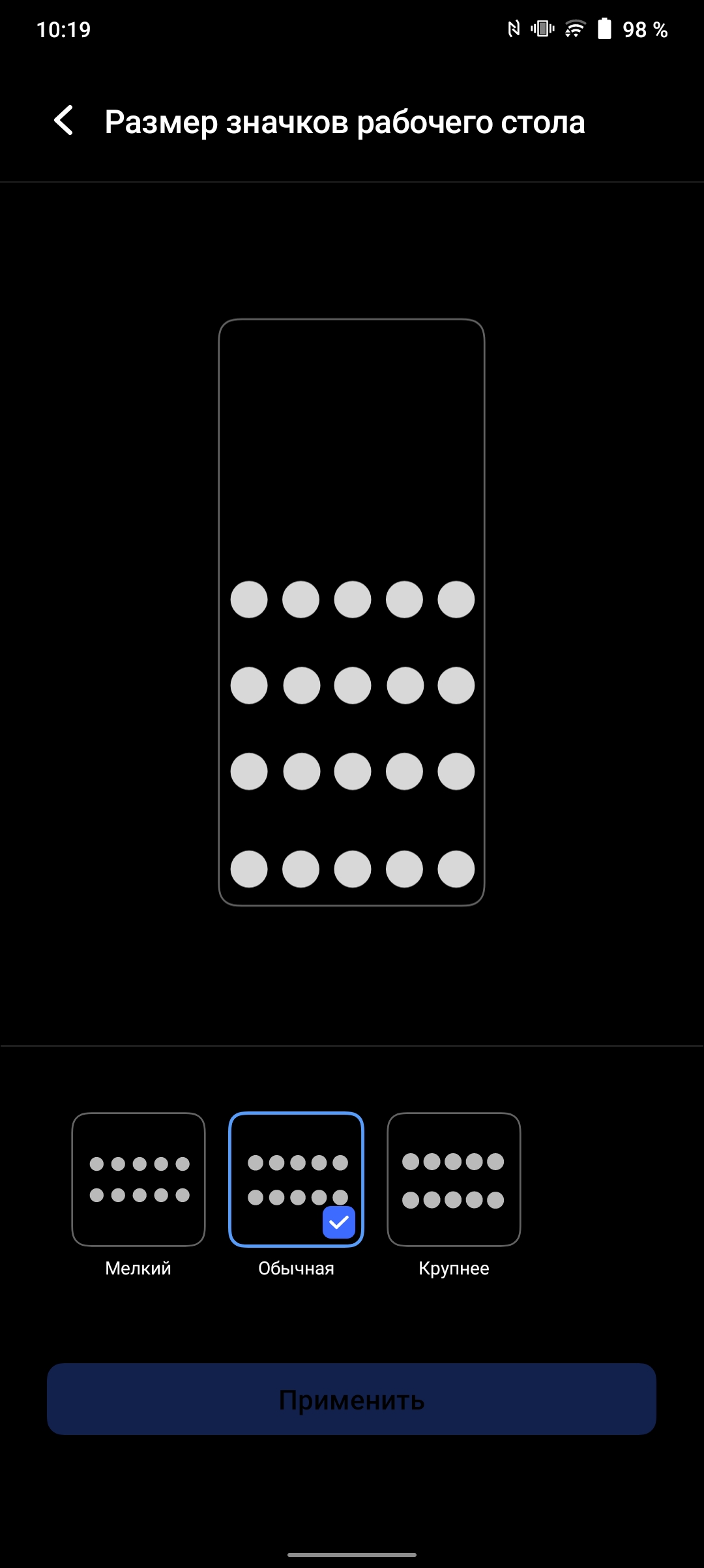
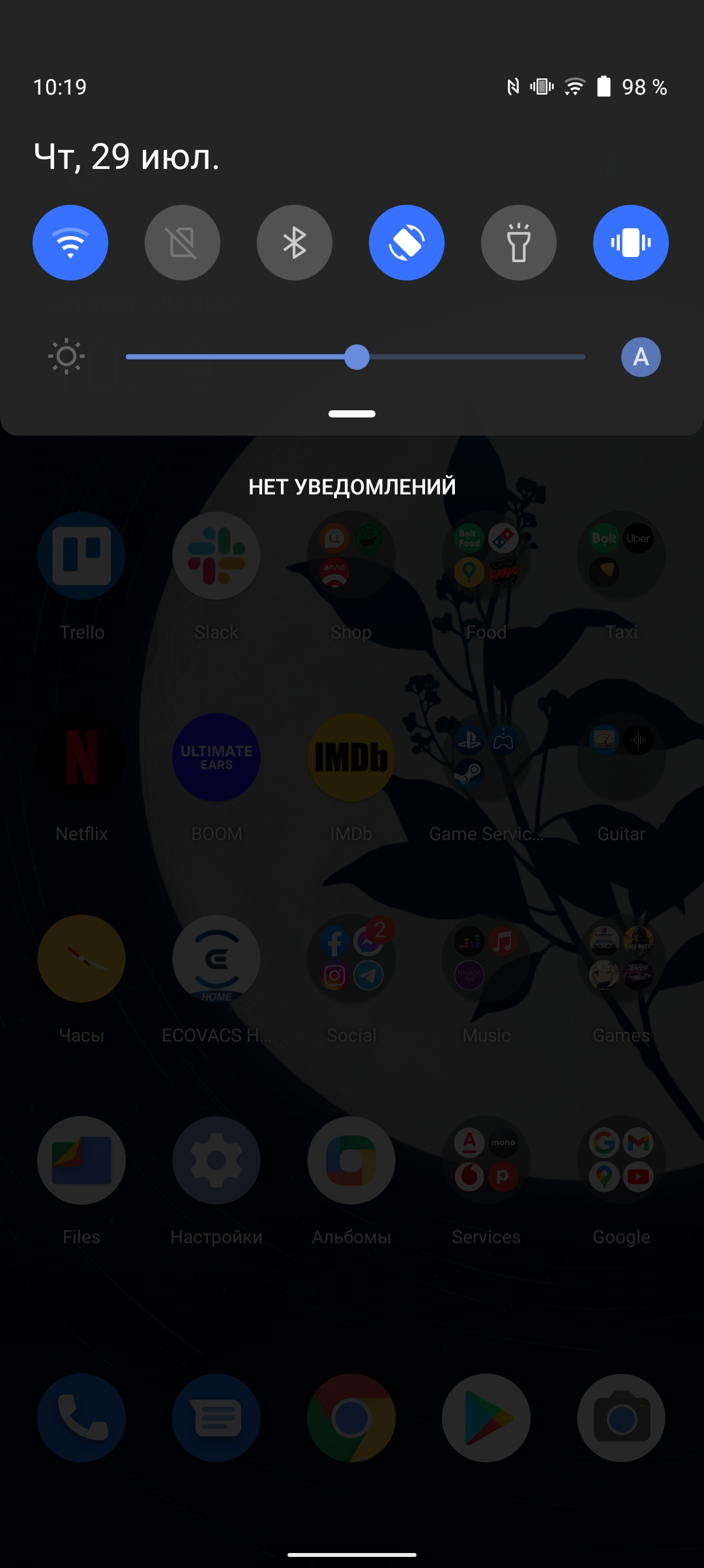
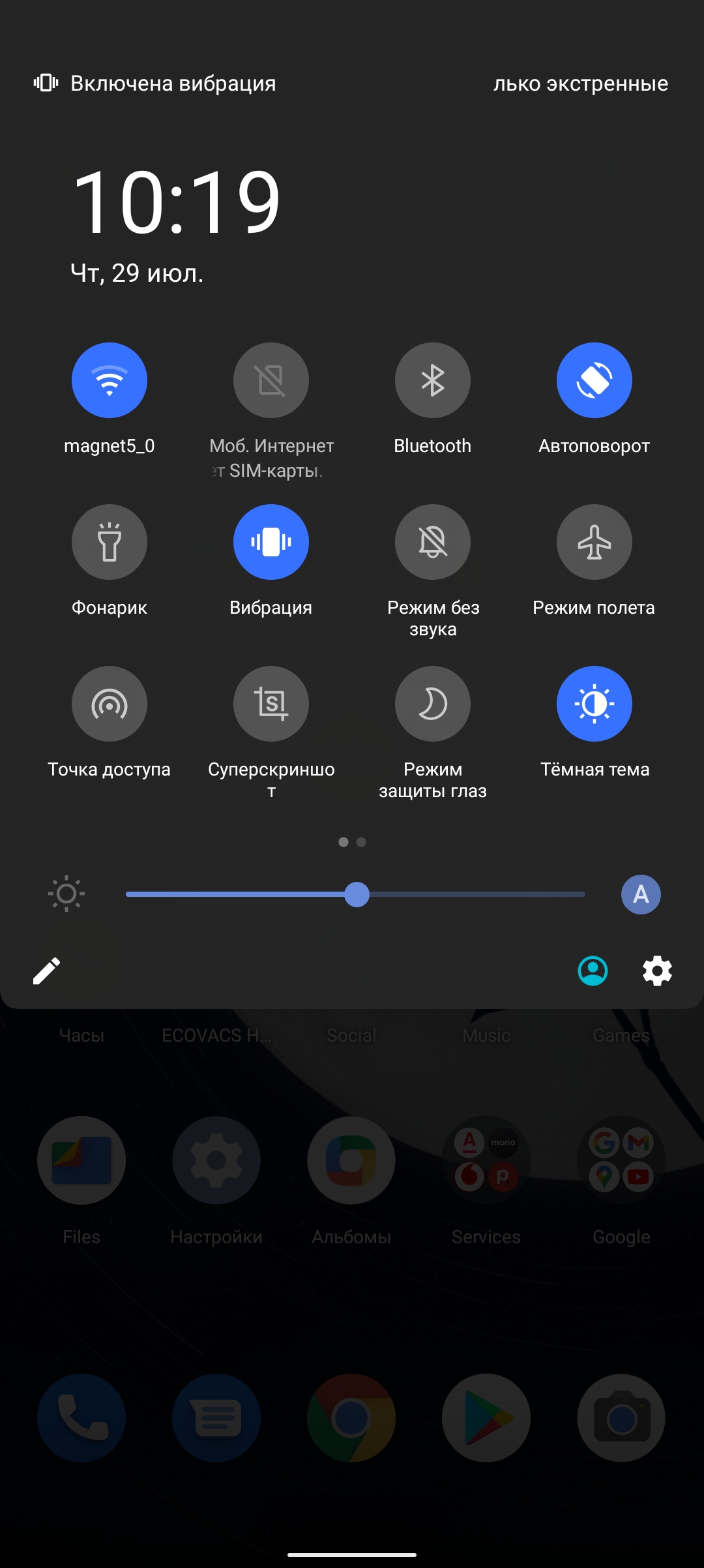






















The Application Manager has a standard look and feel. A carousel of cards, the desired applications can be pinned. There is a two-window mode, but it is not supported by all apps.








vivo decided to give more customization options for the interface. In addition to the standard possibilities of changing the interface theme, wallpaper, font, there is also a whole section of settings called "Dynamic Effects". in which you can select and customize the animation and appearance of most system animations and other things.
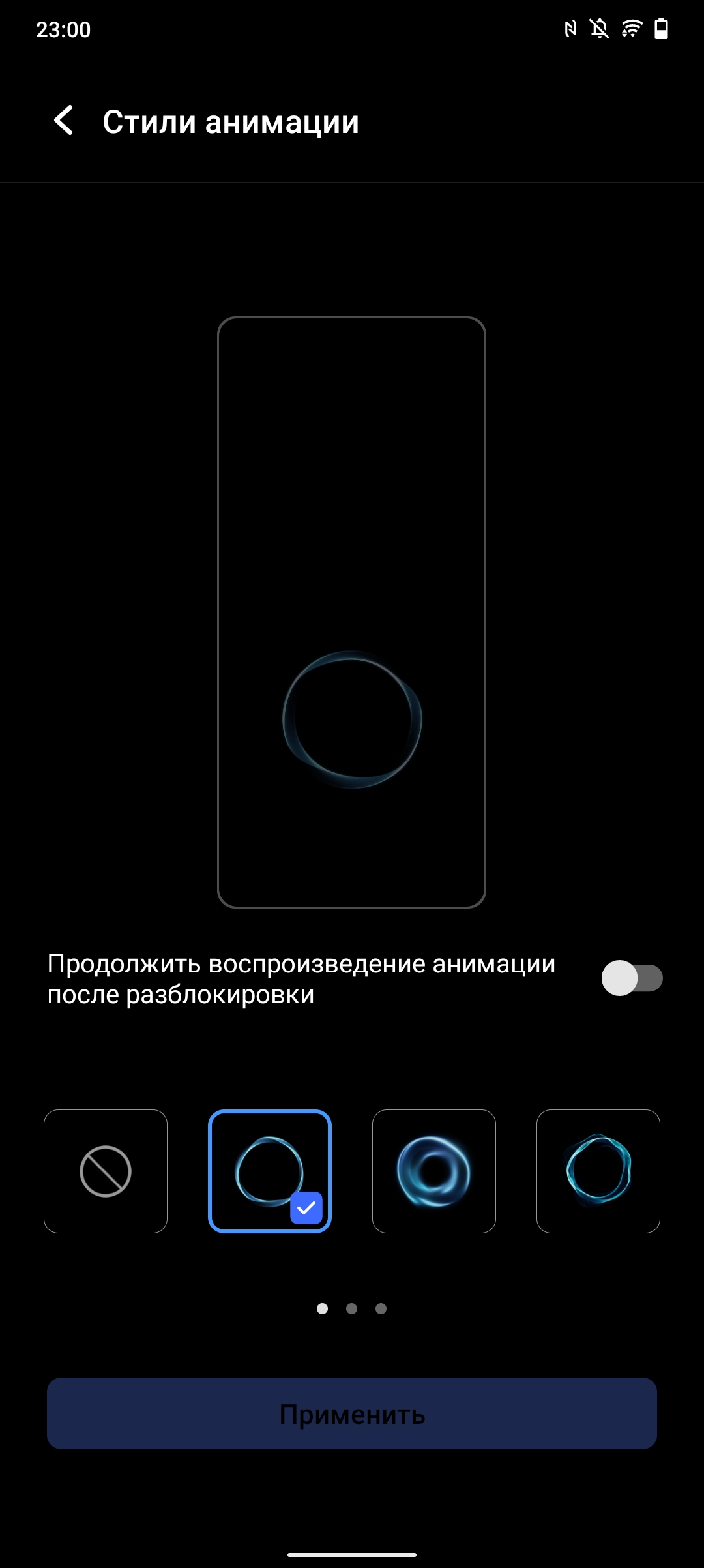
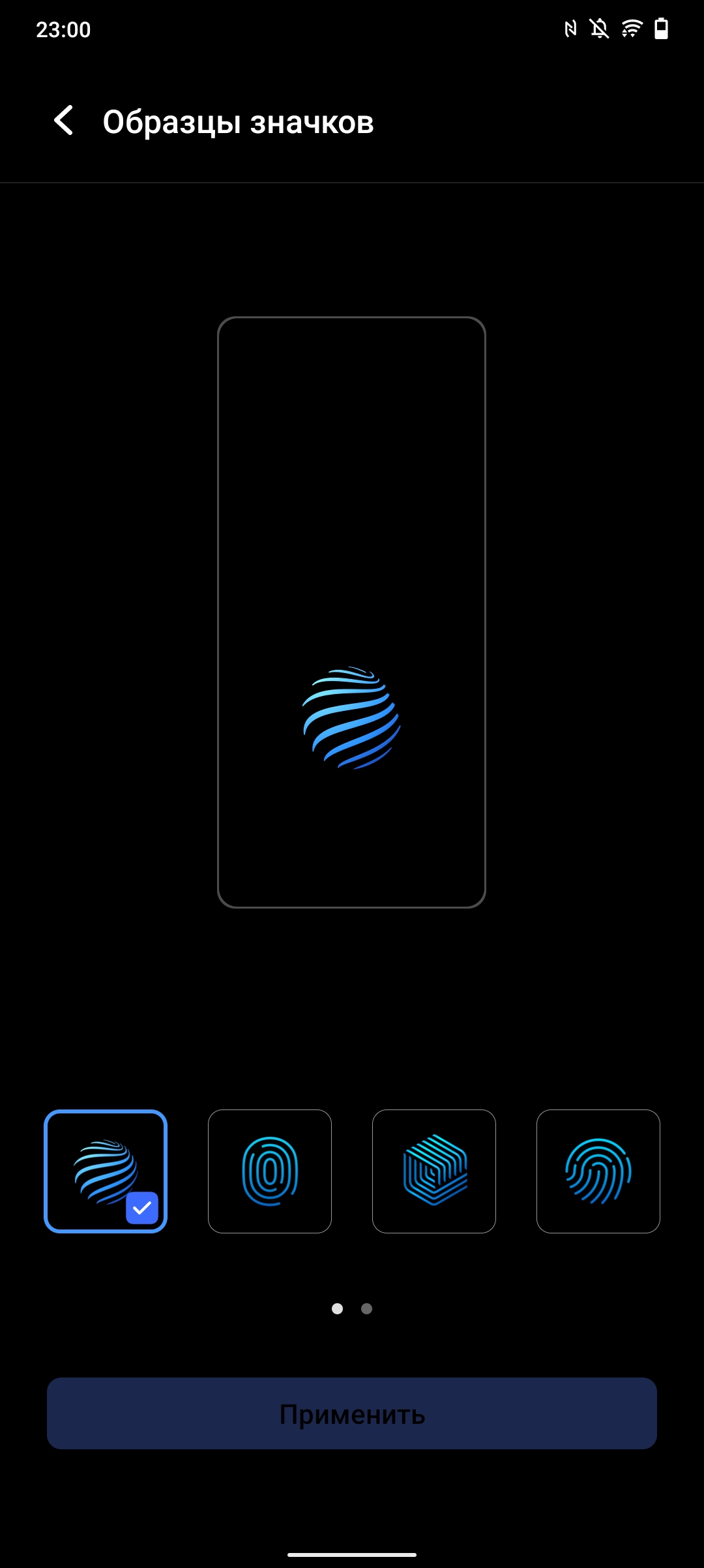


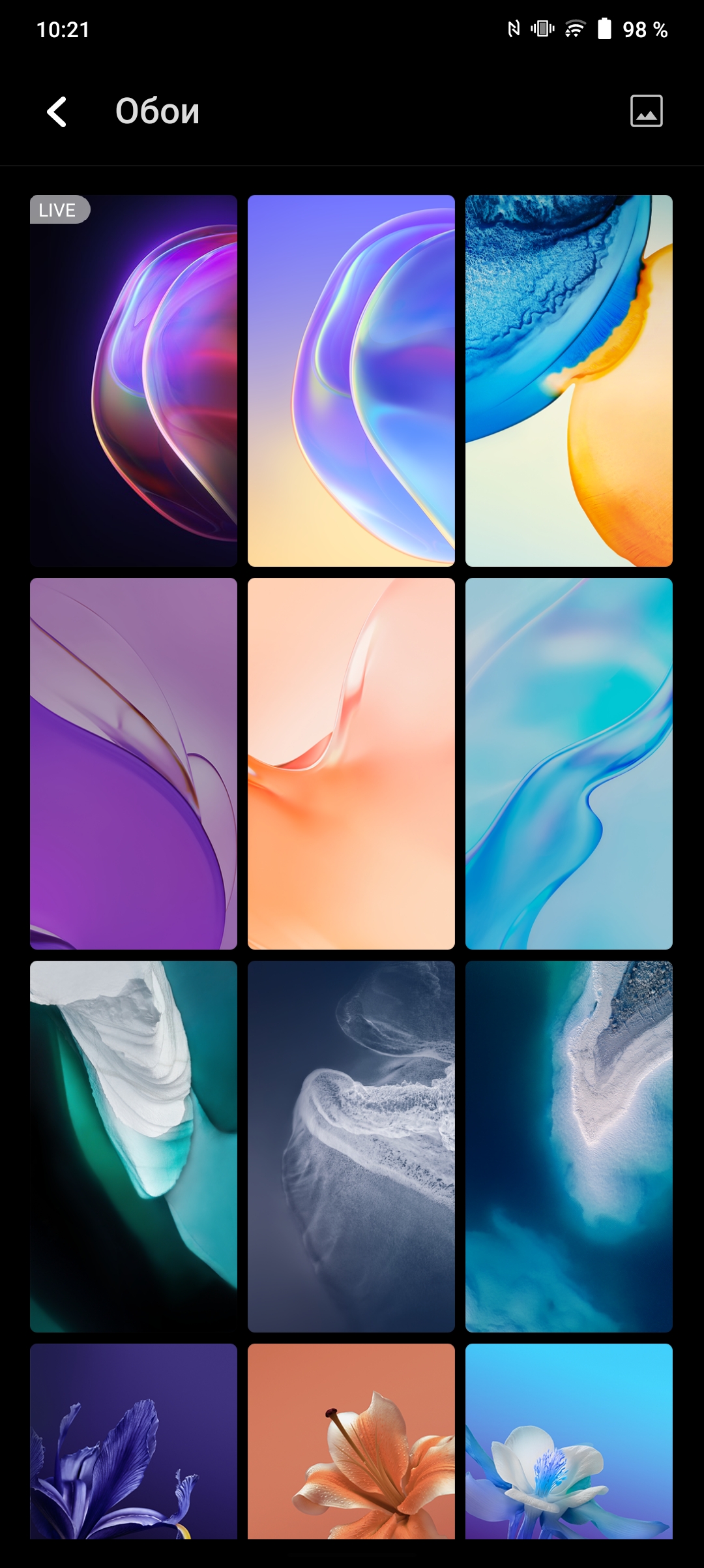





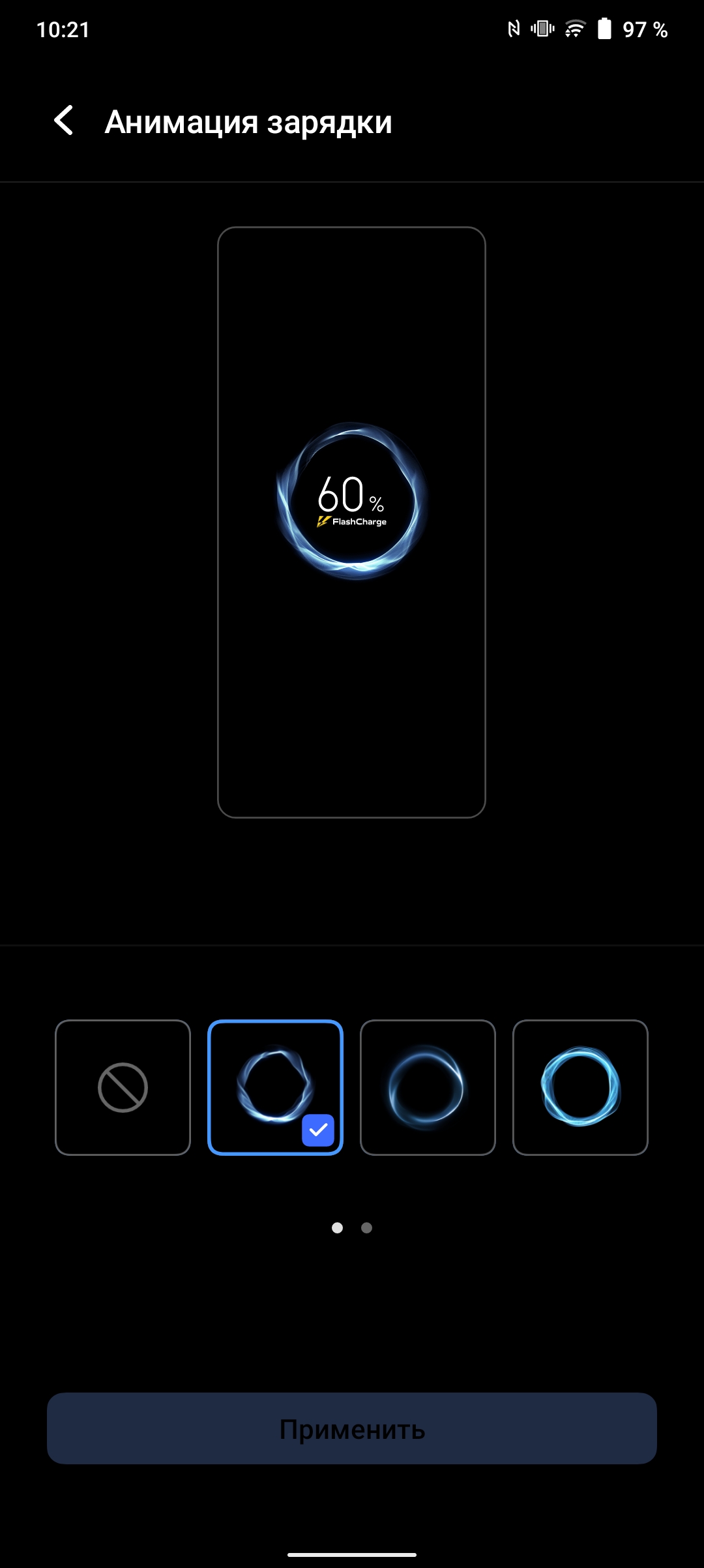













The pre-installed software is minimal: smartphone manager, voice recorder, calculator, compass/level, Easy Share for fast data transfer from smartphone to smartphone and vivo app (online warranty and other stuff).


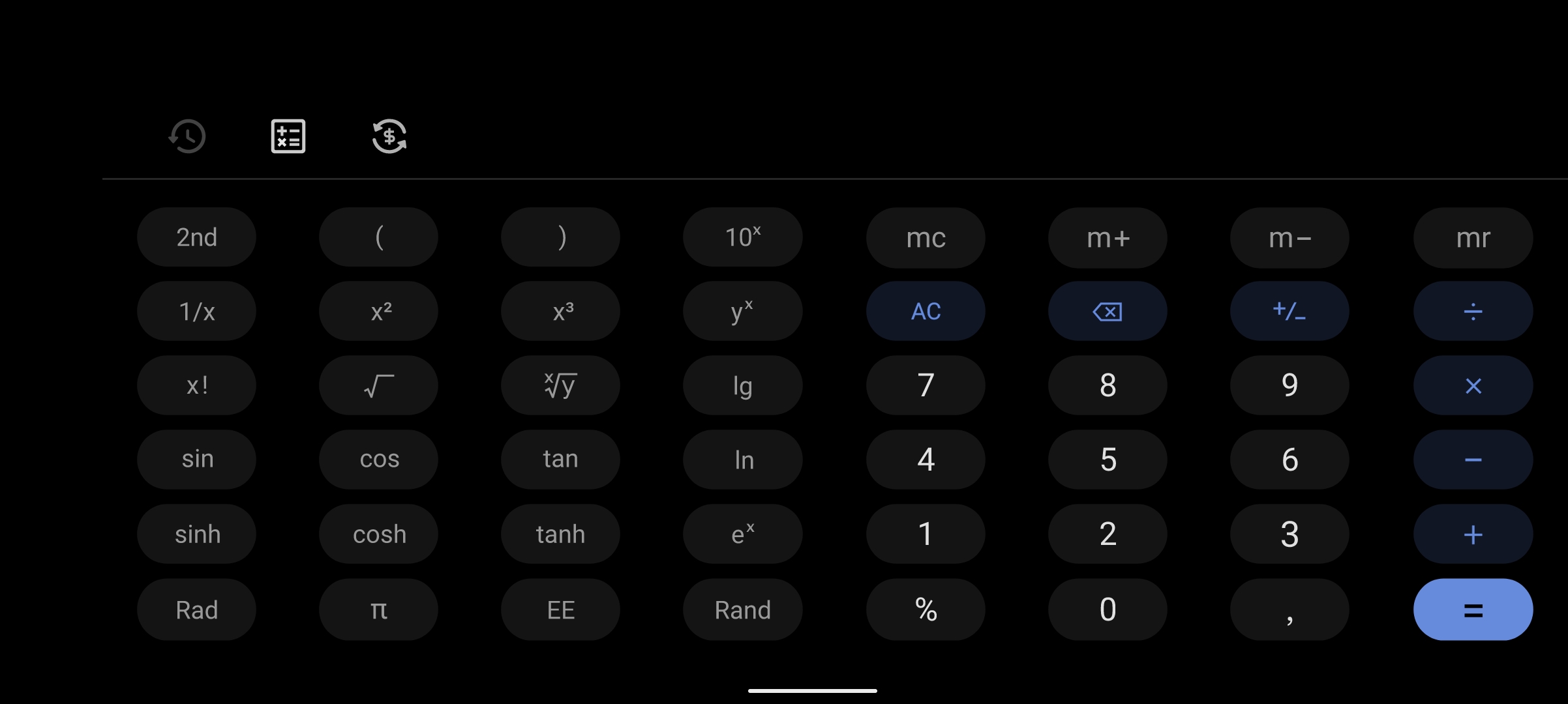
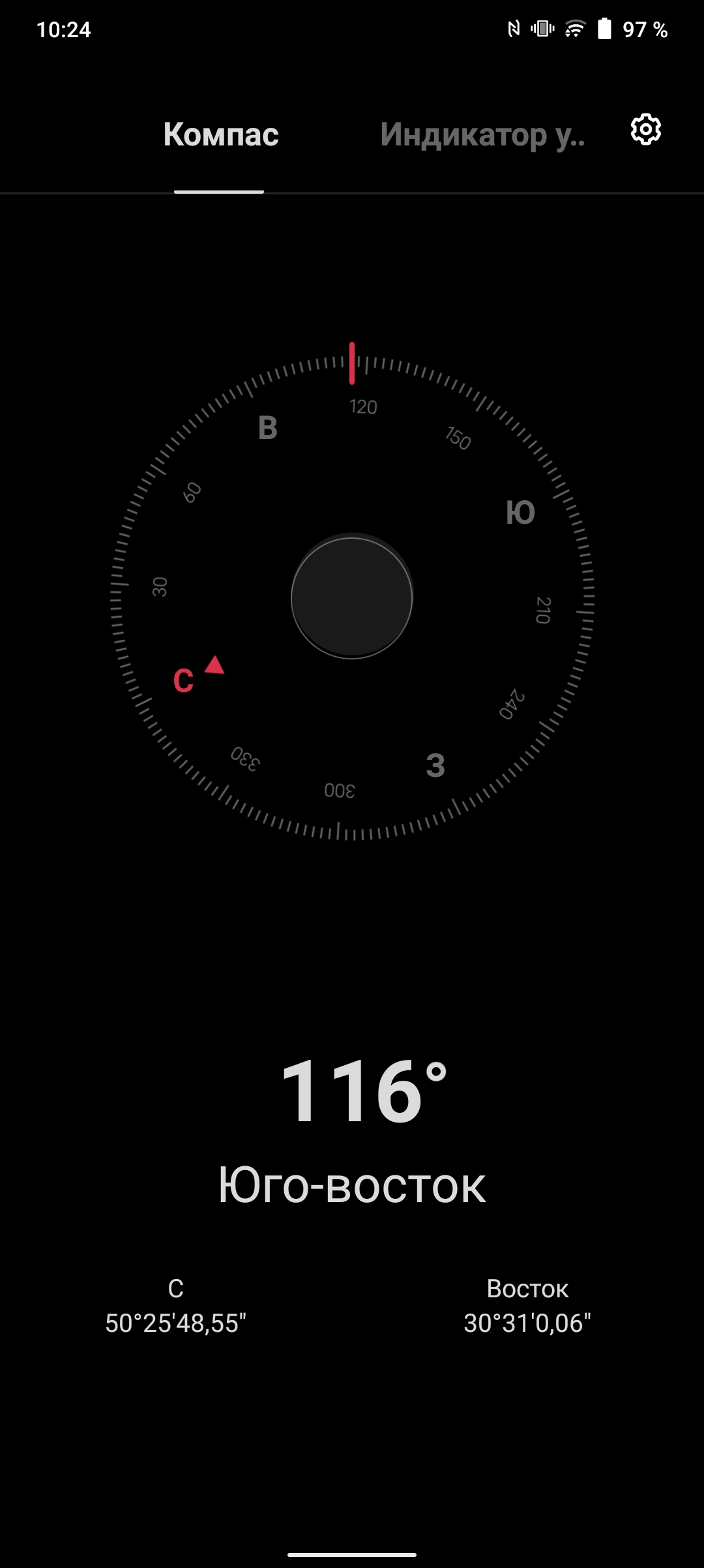



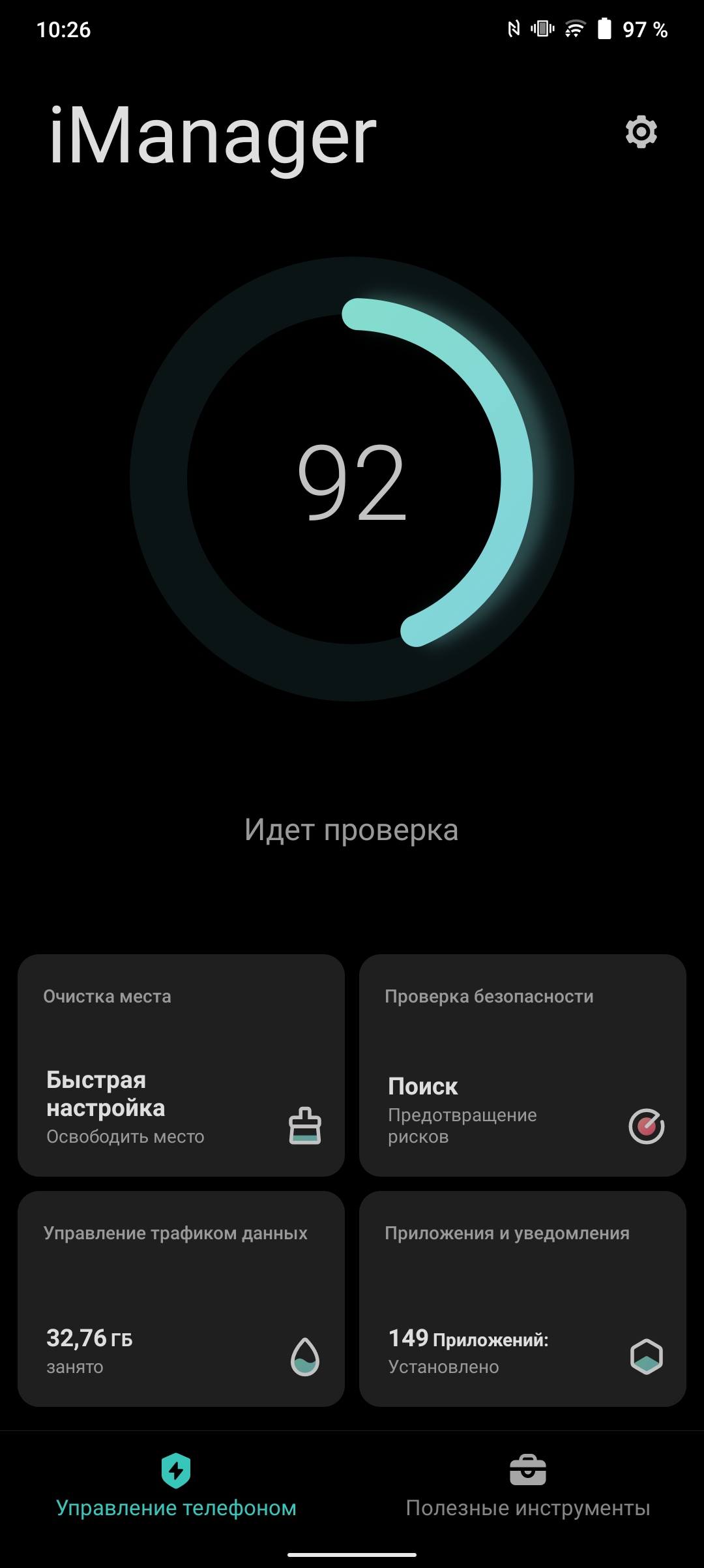












How good are the cameras?

The vivo V21's rear camera consists of three modules. The main one is slightly pumped up compared to the vivo V20. The resolution is similar: 64 megapixels, 1/1.72", 0.8µm, phase autofocus, but a little more bright f/1.8 optics and optical stabilization appeared. The second module - wide-angle with an angle of view of 120 ° with an aperture of f/2.2, without autofocus (although the predecessor had it). The third module - 2 megapixel macro instead of the depth sensor. The maximum video resolution is 4K 30fps. There is digital stabilization in FullHD. The camera app is close to the usual: carousel of the main shooting modes, menu with additional, flash settings, HDR, 2x zoom and filters on the main screen. Not the most convenient solution - the implementation of switching cameras in the drop-down menu: instead of one tap is required to make two: we press the "lens" button and select the desired one. As for the rest there are no complaints, everything is convenient.
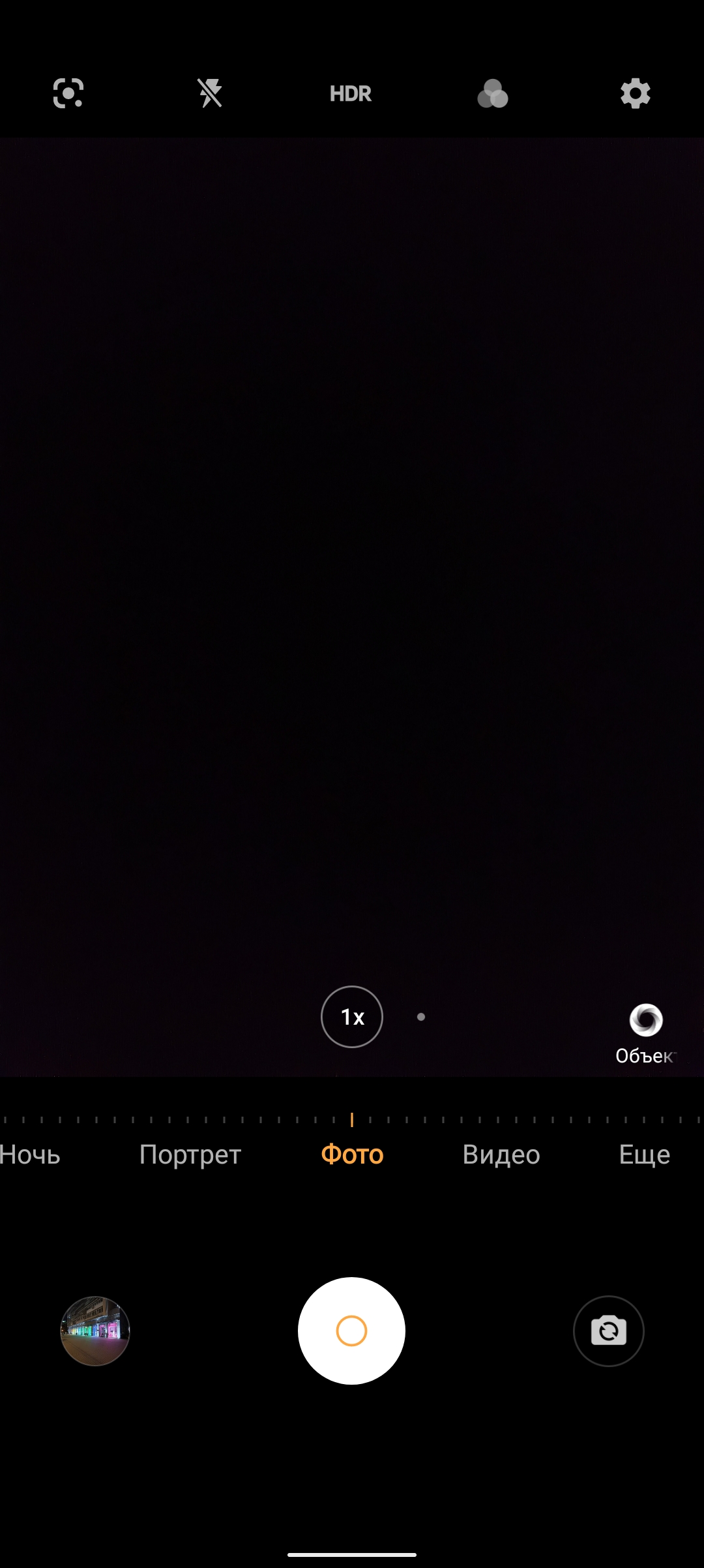
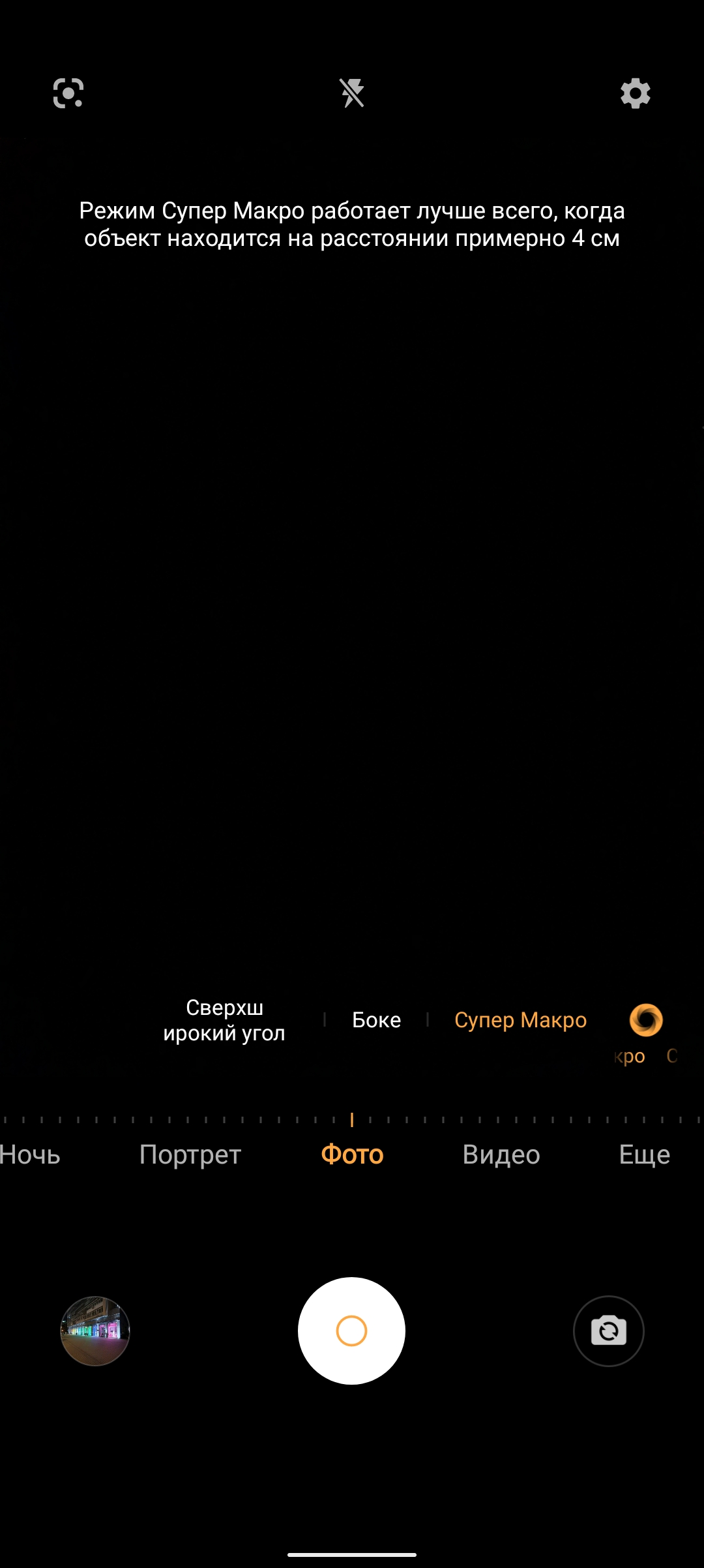



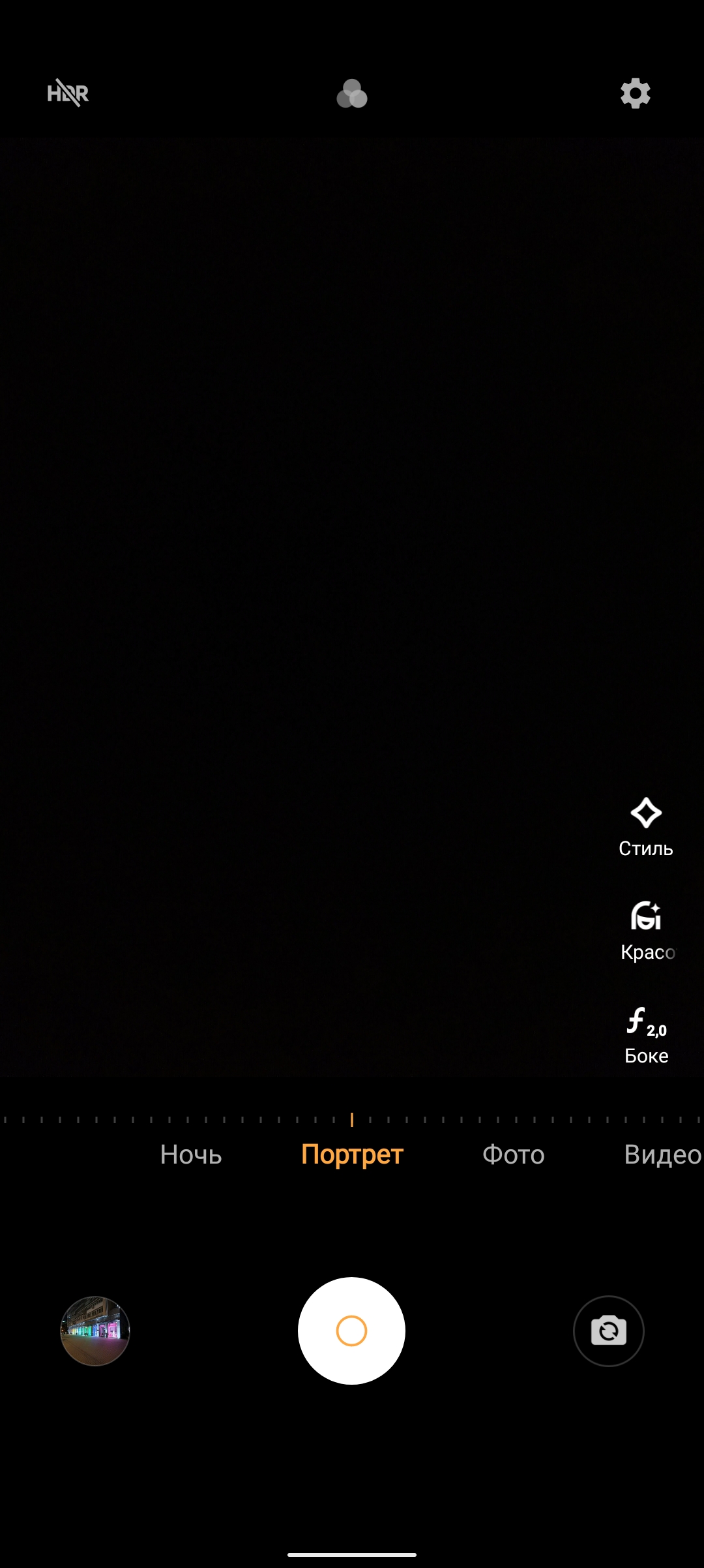
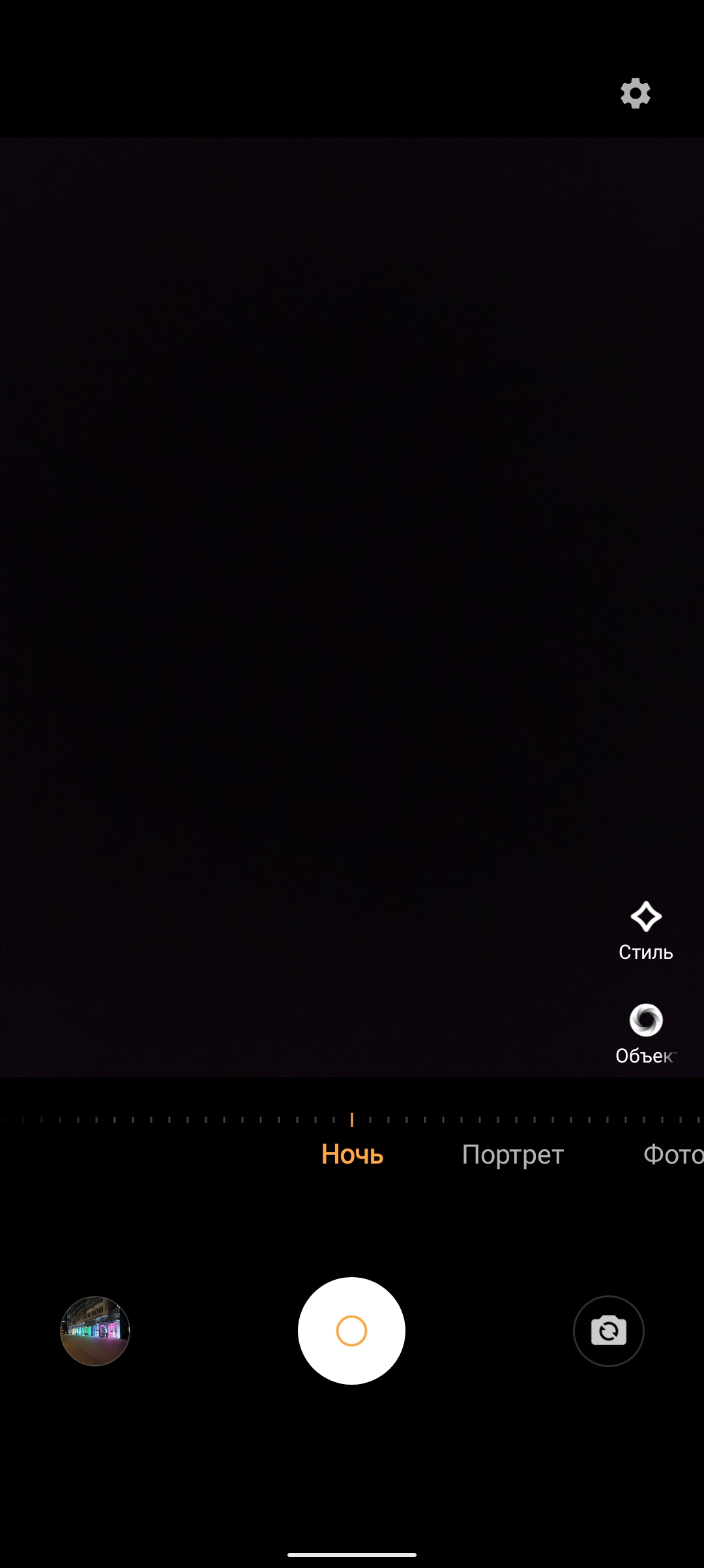







The main camera shoots at a very good level. Not quite as good as the flagships A-brands, but the pictures are very good in most situations. Of course, in sufficient light, everything is fine: good detail, a wide dynamic range and relatively natural color reproduction. Night mode too, for the most part, does very well. The original photos are available at link.












































The wide-angle camera is stripped of autofocus and generally shoots at the level of the competition. The overall detail is lower than in the main camera, especially on the edges of the frame. At night the situation is worse, but without the criminal:










































2-megapixel macro camera without autofocus - has already become a common solution in inexpensive smartphones. You can play around, but no more than that:








The front camera is the main "highlight" of the vivo V21. It is 44 megapixels with f/2.0 optics and optical stabilization, which is almost never seen in smartphones. There's autofocus, of course, and the built-in two LEDs will help take photos and videos in low light as well. The frontal can also write video in 4K resolution, so the smartphone will suit all kinds of bloggers and tick-tockers of various kinds. In practice, the frontal really shoots very well in low light.
Video smartphone is able to shoot up to 4K 30 frames per second. There is no stabilization, the picture turns out appropriate.
FullHD video with stabilization:
Bottom line. Three things to know about the vivo V21.
- vivo V21 is a mid-priced Android smartphone with a 6.44-inch AMOLED display and MediaTek Dimensity 800U processor.
- The smartphone features an advanced 44MP front camera with optical stabilization, autofocus, dual illumination and support for 4K video recording.
- The vivo V21's primary camera is good, while the ultra-wide-angle is a bit worse compared to the vivo V20.
Video Review:
| vivo V21 Specifications | |
|---|---|
| Display | AMOLED, 6.44 inches, 2400x1080, 409 ppi |
| Body | dimensions: 159.7x73.9x7.3 mm, weight: 176g |
| Processor | MediaTek Dimensity 800U (7nm), 2x2.4GHz ARM Cortex-A76, 6x2.0GHz ARM Cortex-A55, Mali-G57 MC3 |
| RAM | 8GB LPDDR4X + 3GB |
| Flash memory | 128GB UFS 2.2 + MicroSD |
| Camera | 64 MP, 1/1.72", 0.8µm, f/1.8 aperture, PDAF, OIS; ultra-wide-angle 120˚, f/2.2; 2 MP macro camera; 2160p@30fps video; front camera: 44 MP f/2.0, OIS |
| Wireless Technologies | Wi-Fi 802.11 b/g/n/ac (dual-band, 2.4 and 5 GHz), Bluetooth 5.1 LE, NFC, FM |
| GPS | GPS, A-GPS, GLONASS, BDS, GALILEO |
| Battery | 4000mAh, non-removable, fast charging 33W |
| Operating system | Android 11 + Funtouch OS 11 |
| Sim card | 2xNanoSIM |
| Optional | optical fingerprint scanner in screen |
For those who want to know more:
- vivo V20 review: the first Android 11 smartphone you can buy
- vivo V17 review: competitors, get moving!
- OPPO Reno3 Pro review: successfully imitating the flagship
- realme 6 smartphone review: anti-crisis pricing
- Vivo V15 Pro review: who's on the new guy?
- How vivo will conquer Ukraine: interview with Max Lowe, CEO of the company in Ukraine
- OPPO Reno2 review: sees what you do not see
- Samsung Galaxy Note10 review: the same flagship, but smaller
- Honor 20 Pro smartphone review: great camera for reasonable money
